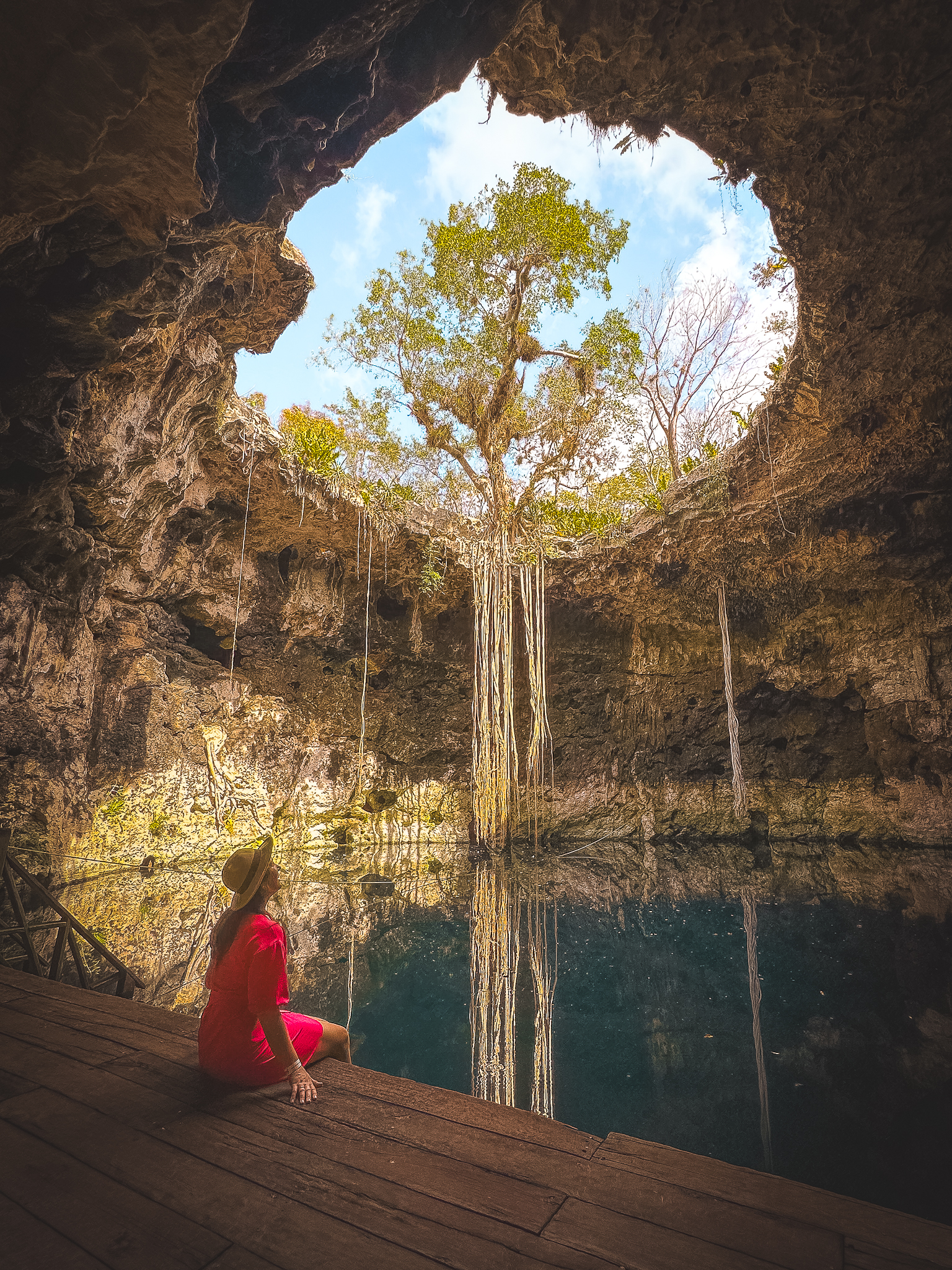15 best day trips from Merida, Mexico
This post may contain affiliate links. If you use these links to buy something I may earn a small commission at no extra cost to you! Thank you for your support!
Find out the best destinations for day trips from Merida, Mexico! From pink lakes to pink flamingos, from lost Mayan cities in the jungle to secret cenotes under the ground – here are my favorite day trips from Merida I enjoyed the most!
We loved Merida very much as it is the perfect place to explore the Mayan culture, local Mexican lifestyle as well as colonial history. We also used the city as a base to embark on adventurous day trips and weekend getaways around the Yucatán Peninsula.
In this post, you will find the best day trips from Merida with descriptions, photos, and locations on the map. We spent three amazing weeks in Merida exploring everything this city and its surroundings had to offer. Happy travels!
Read more » 17 most iconic Instagram spots in Merida, Mexico
1. Uxmal Archaeological Zone
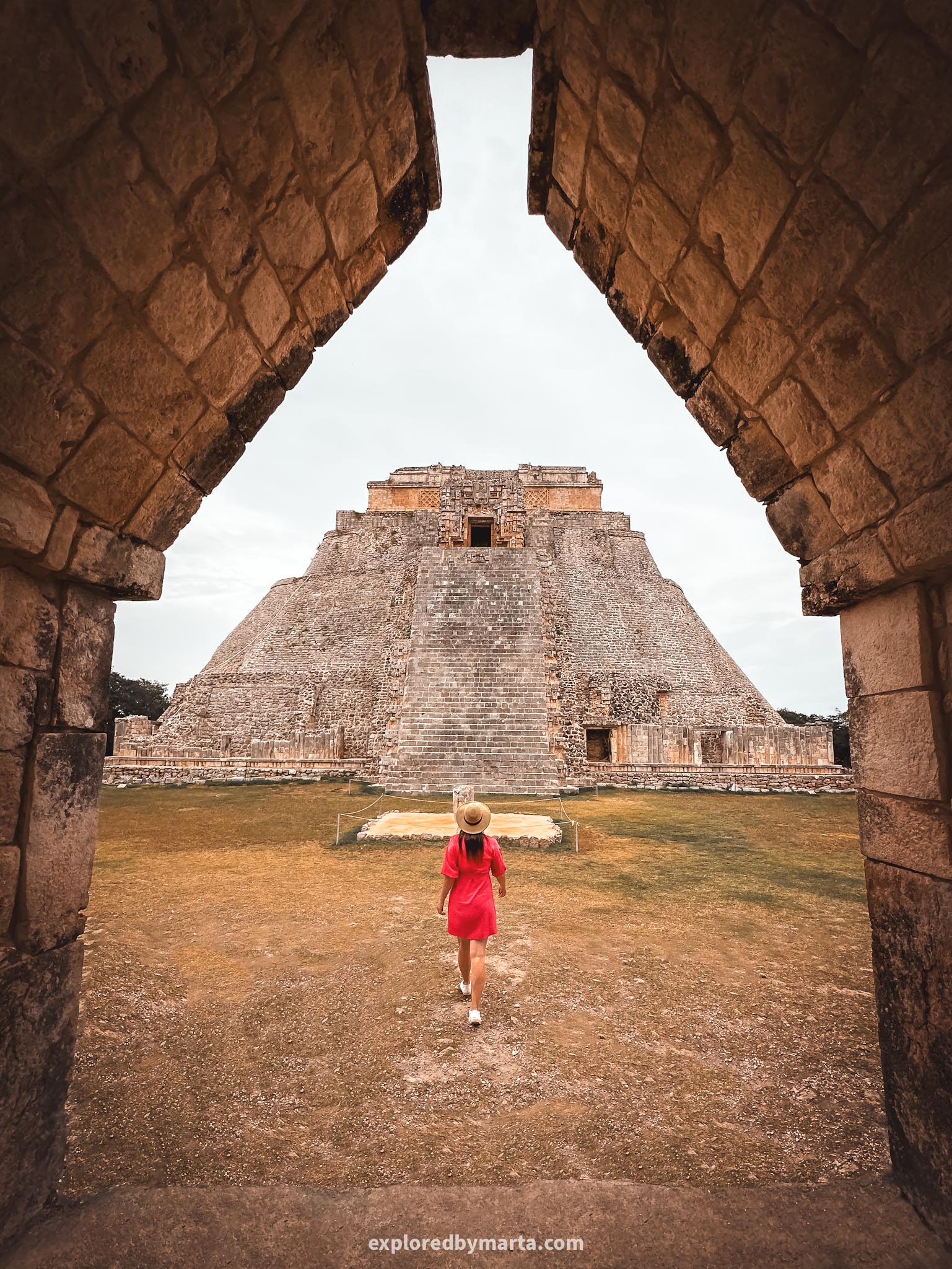
Uxmal archaeological zone dating back to the 10th-11th centuries is one of the most famous Mayan ruins near Merida and in Mexico. It is most known for its 40-meter-high Pyramid of the Magician – the main pyramid in the Uxmal ruins.
A day trip to Uxmal is one of the must-do things when visiting Merida. Skipping Uxmal is like traveling to Cancun and not going to the beach. So we rented a car and visited Uxmal on a day trip during our three-week stay in the city of Merida.
Uxmal is undoubtedly one of the most impressive Mayan ruins you will find near Merida, Mexico. The whole archaeological zone is listed as a UNESCO World Heritage Site due to its significance.

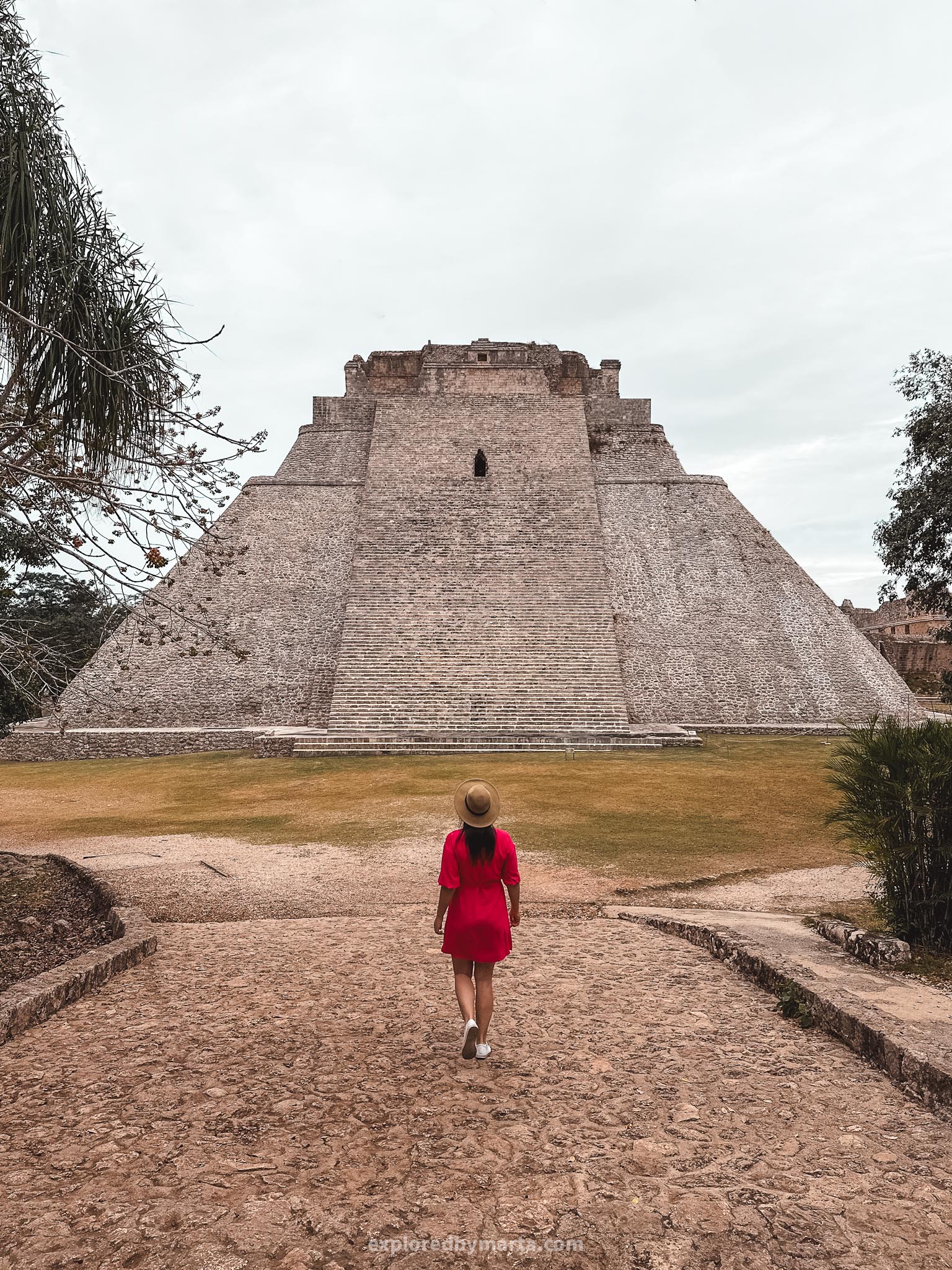
The Pyramid of the Magician is the most famous structure in Uxmal. The legend says that the pyramid was built in one night however there are various versions of who actually built it – a dwarf, a magician, or somebody else.
The pyramid has a unique feature – if you clap your hands in front of the pyramid the structure creates an echo of the clap that sounds like quetzal – a strikingly beautiful and colorful bird that is sacred to Mayan people. Such a unique experience!
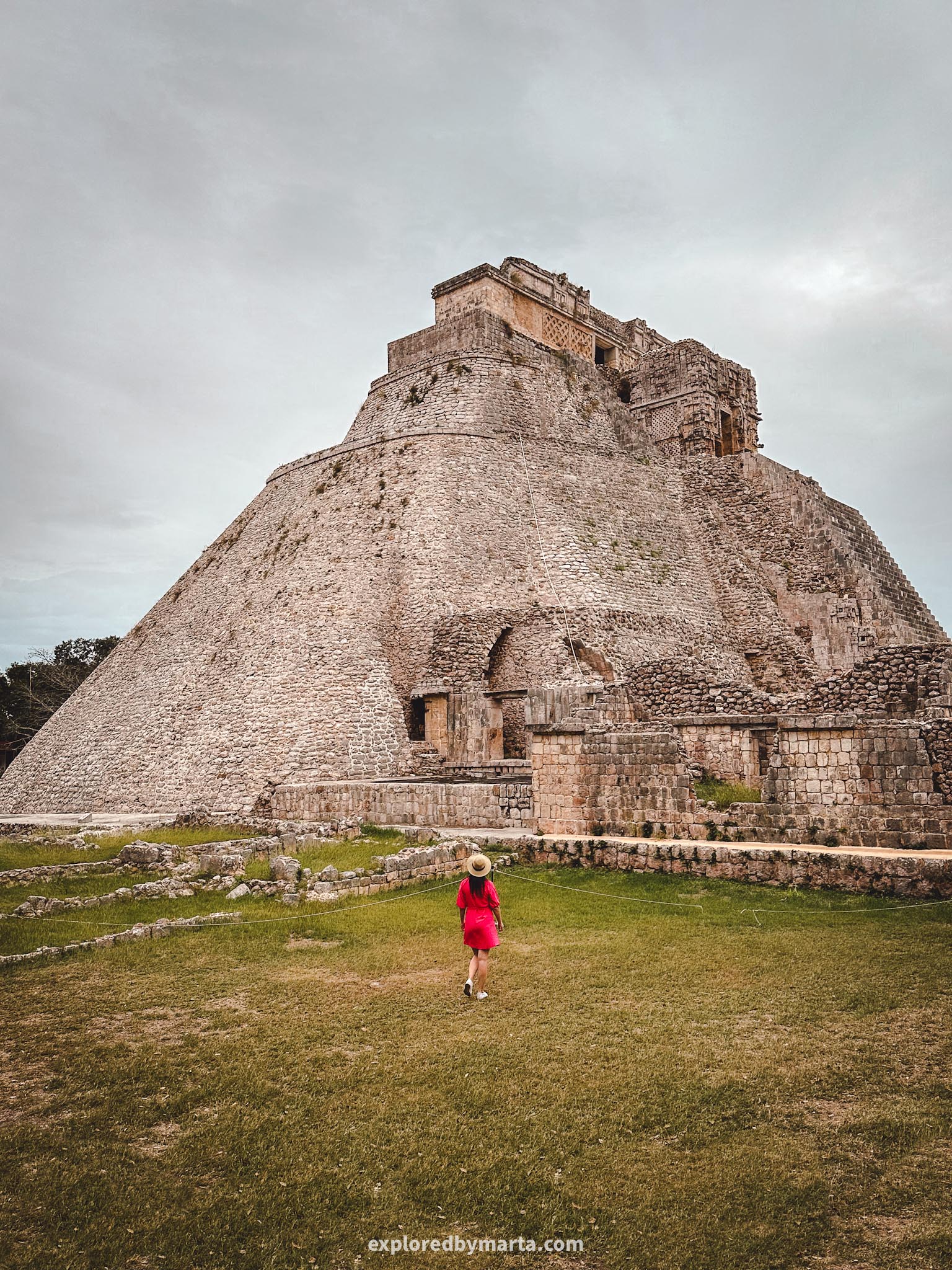
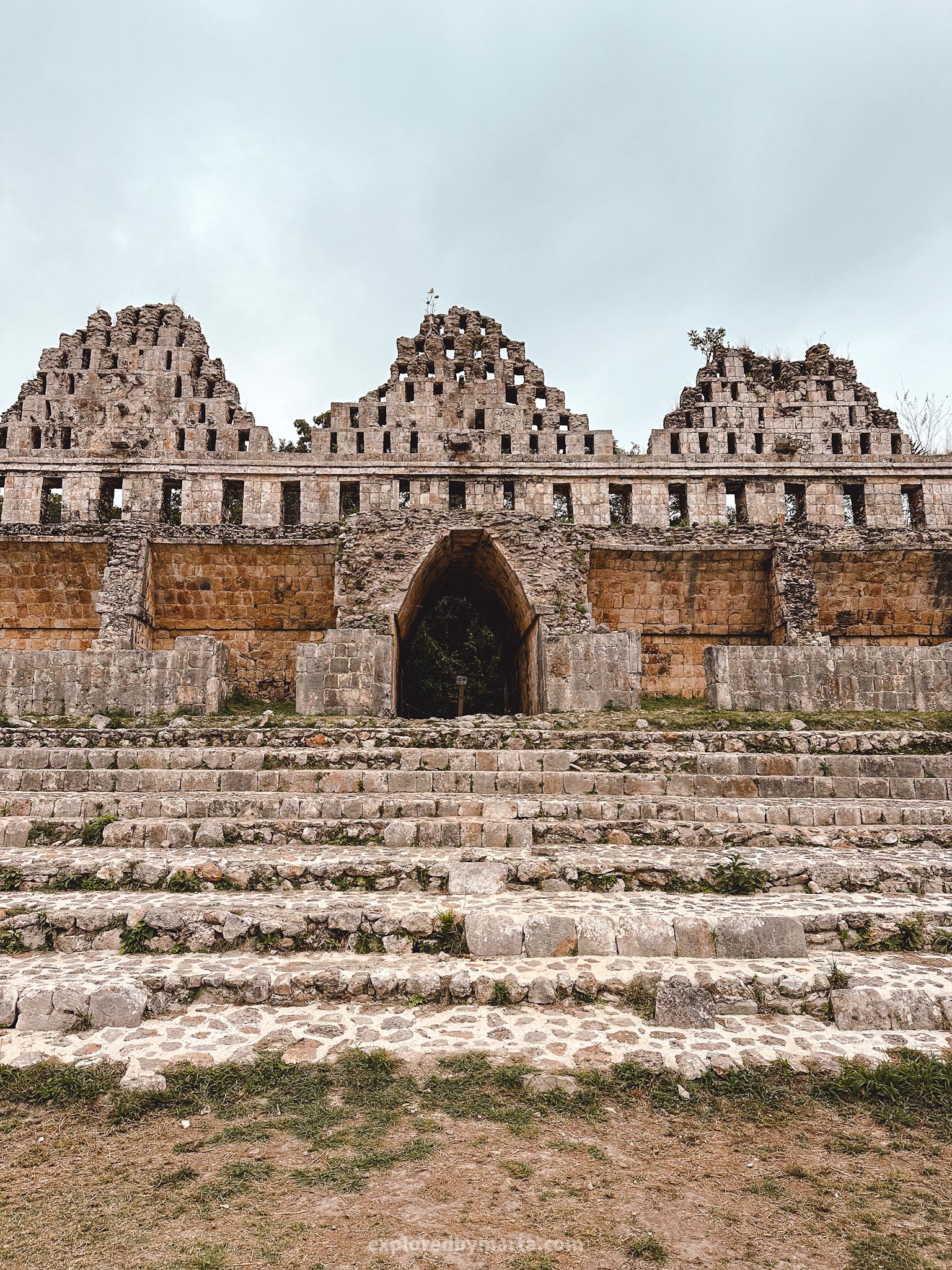
By the way, the best place to take a photo of the pyramid and observe it closer is from behind it. There is a large square called Cuadrangulo de los Pajaros or Bird Quadrangle that is surrounded by buildings and walls. This is where the first photo was taken.
Uxmal at its peak was a city of 25 thousand people so the pyramid is not the only impressive building here. Definitely check out The Governor’s Palace located on a hill, Casa de las Palomas as well as the Nunnery Quadrangle.
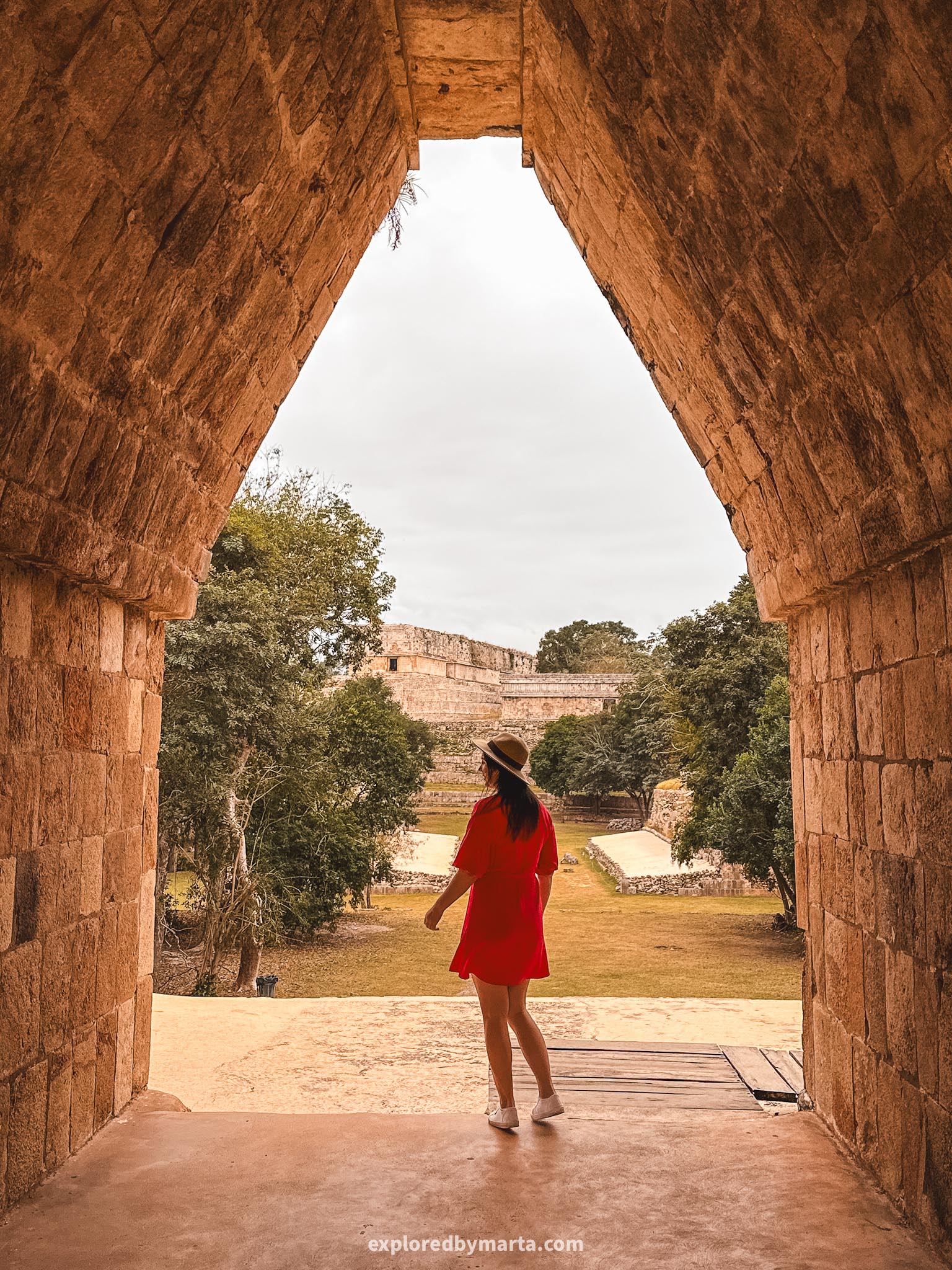
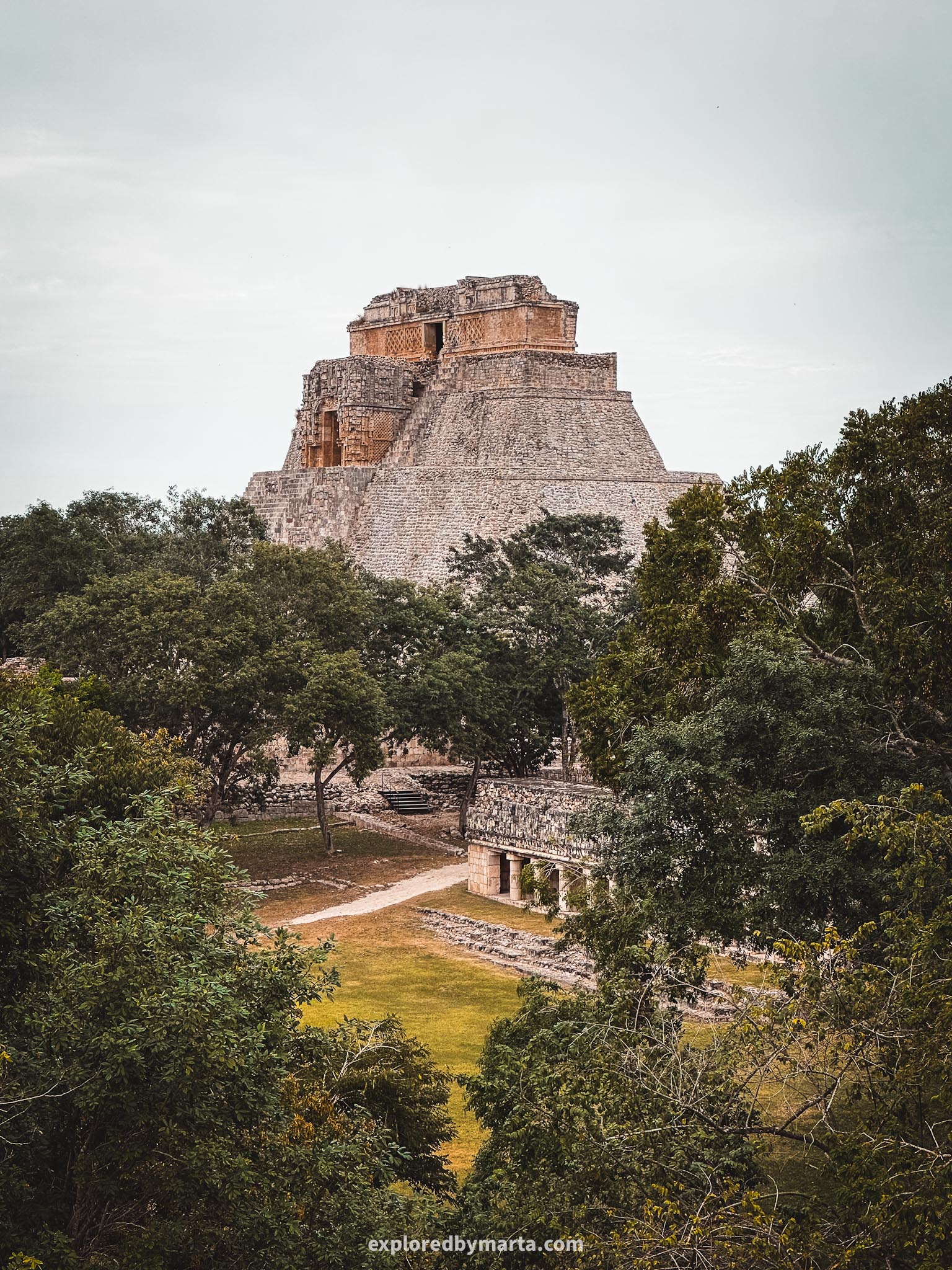
The Nunnery Quadrangle has no connection to nuns. It is a courtyard surrounded by four palaces. When the Spanish conquistadors came they thought it looked like a convent thus the name. It is the best spot to observe the unique Mayan architecture.
Despite the high prices (we paid 530 pesos each), I loved exploring Uxmal and all the historic buildings. I can see why some prefer this place instead of the overcrowded Chichen Itza. I couldn’t choose between the two. I would visit both if I were you!
Location: Uxmal Archaeological Zone
2. Mayan archaeological sites along Ruta Puuc
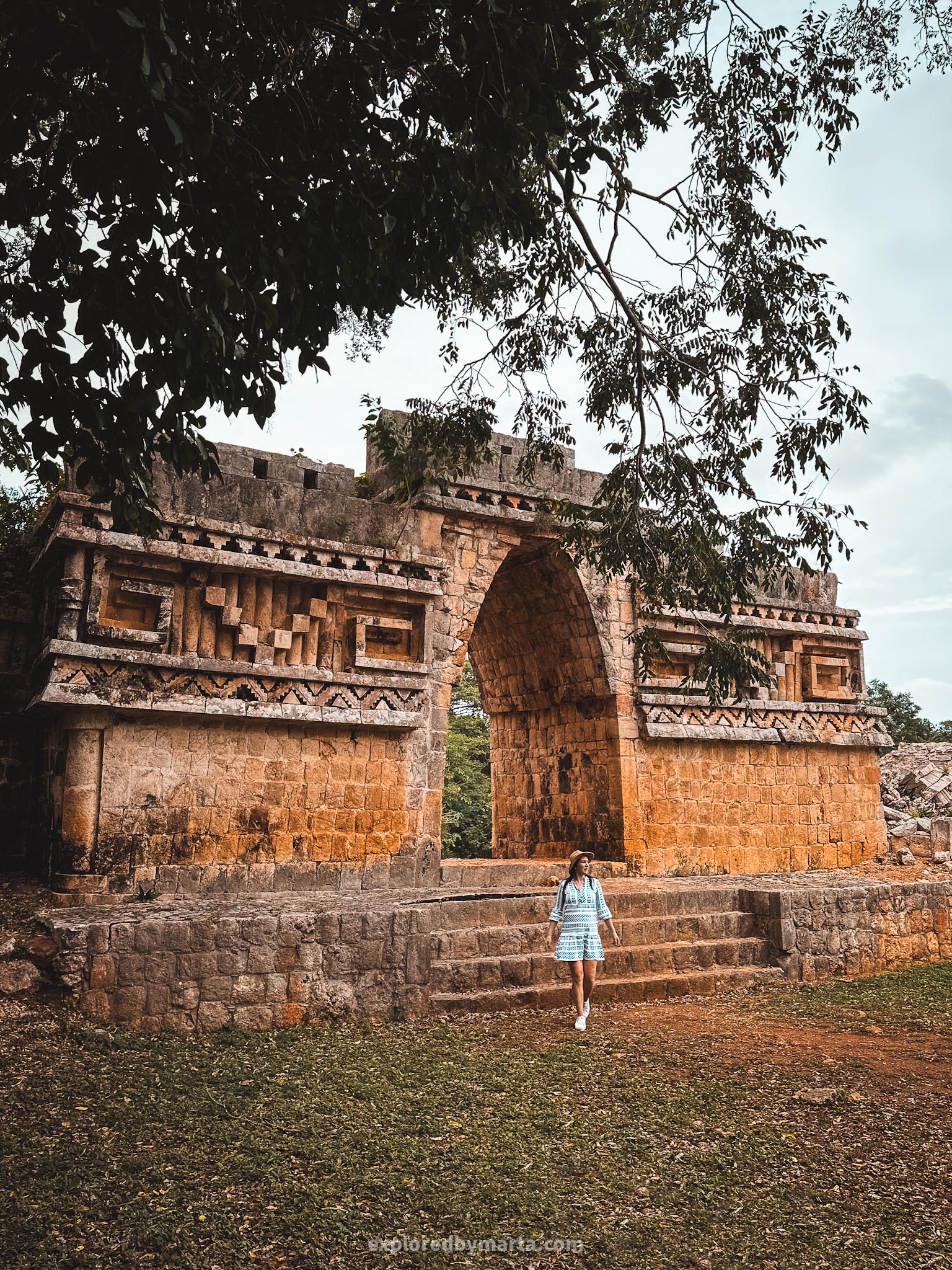
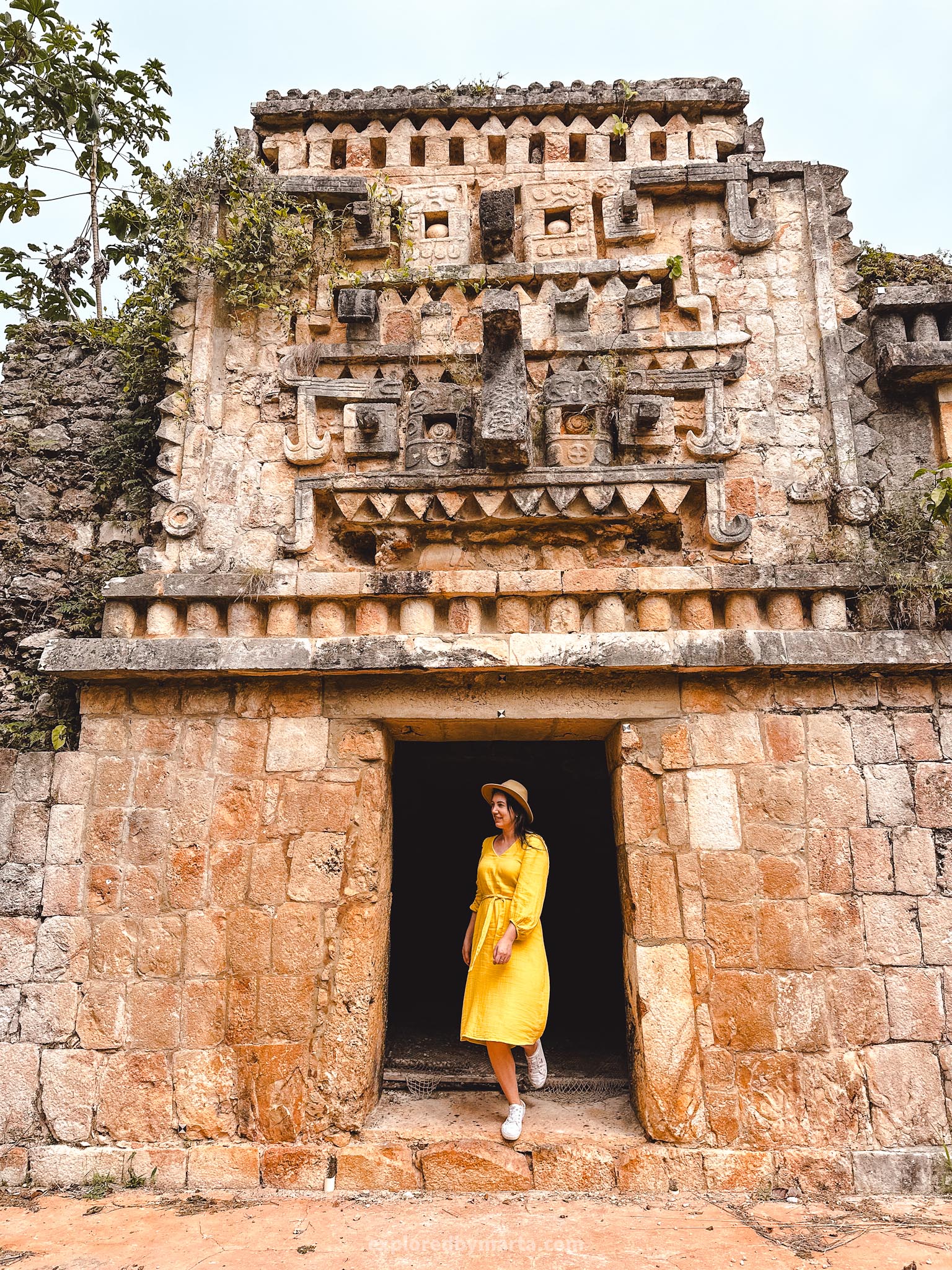
Uxmal is not the only beautiful Mayan ruins near Merida. Did you know that Uxmal is part of the Ruta Puuc route? It is a group of five unique Mayan ruins in Yucatán featuring special Mayan architecture – the Puuc architectural style.
Puuc means ‘hills’ in the Mayan language and is also the name of the region South of Merida where all these ruins are located. All of them are just a short ride from each other and are easy to visit if you have a rental car.

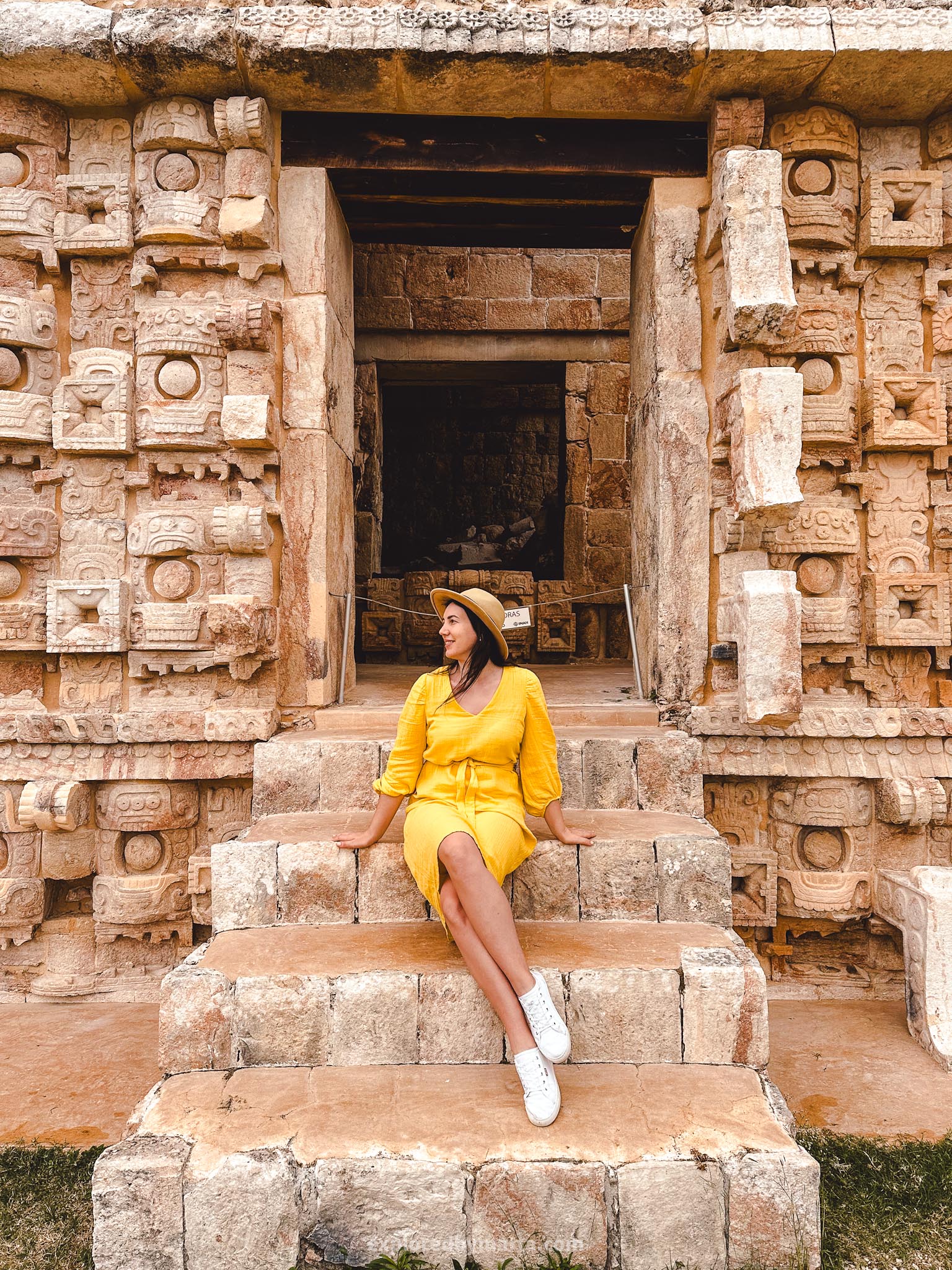
Puuc architecture usually displays stone mosaics, geometrical elements, and elaborate sculptures e.g. it often features masks of the long-nosed Mayan rain god Chaac. It also features stone arches in unique shapes.
Other archaeological zones along Ruta Puuc include the archaeological zone of Kabah, the archaeological zone of Sayil, the archaeological zone of Xlapak, and the archaeological zone of Labná (my favorite after Uxmal).

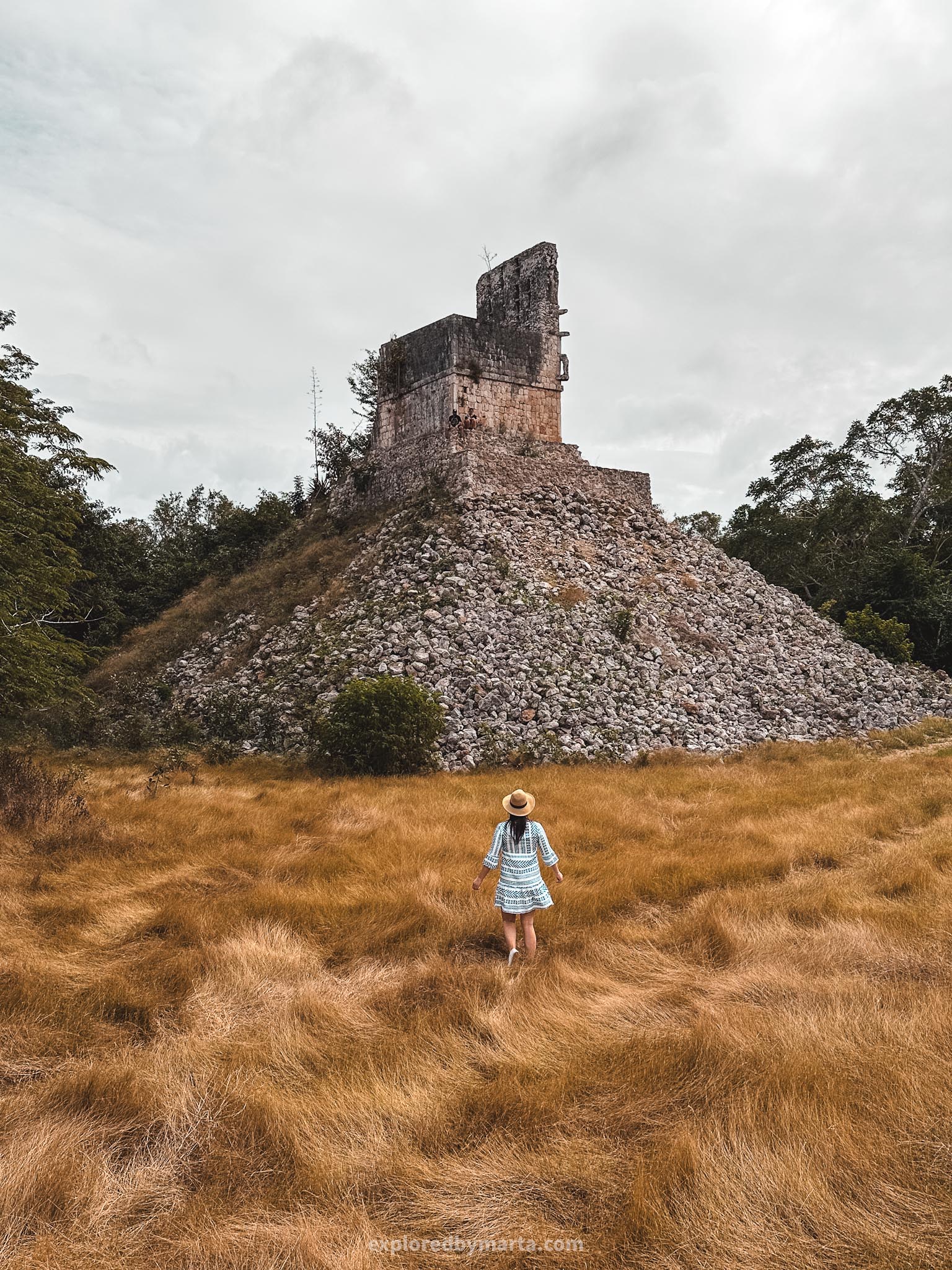
Although they are much smaller than Uxmal, they all have something uniquely special about them plus they allow you to see the ruins up close and even climb some of the buildings. The only not-so-impressive site was Xlapak.
If you only have time for one place, then go to Uxmal which is one of the most beautiful places in Mexico’s Yucatán Peninsula. Read more about the Mayan ruins along the Ruta Puuc route on my blog about the most beautiful Mayan ruins near Merida.
Location: Uxmal – Kabah – Sayil – Xlapak – Labná
3. Pink flamingos in the wild in Celestún
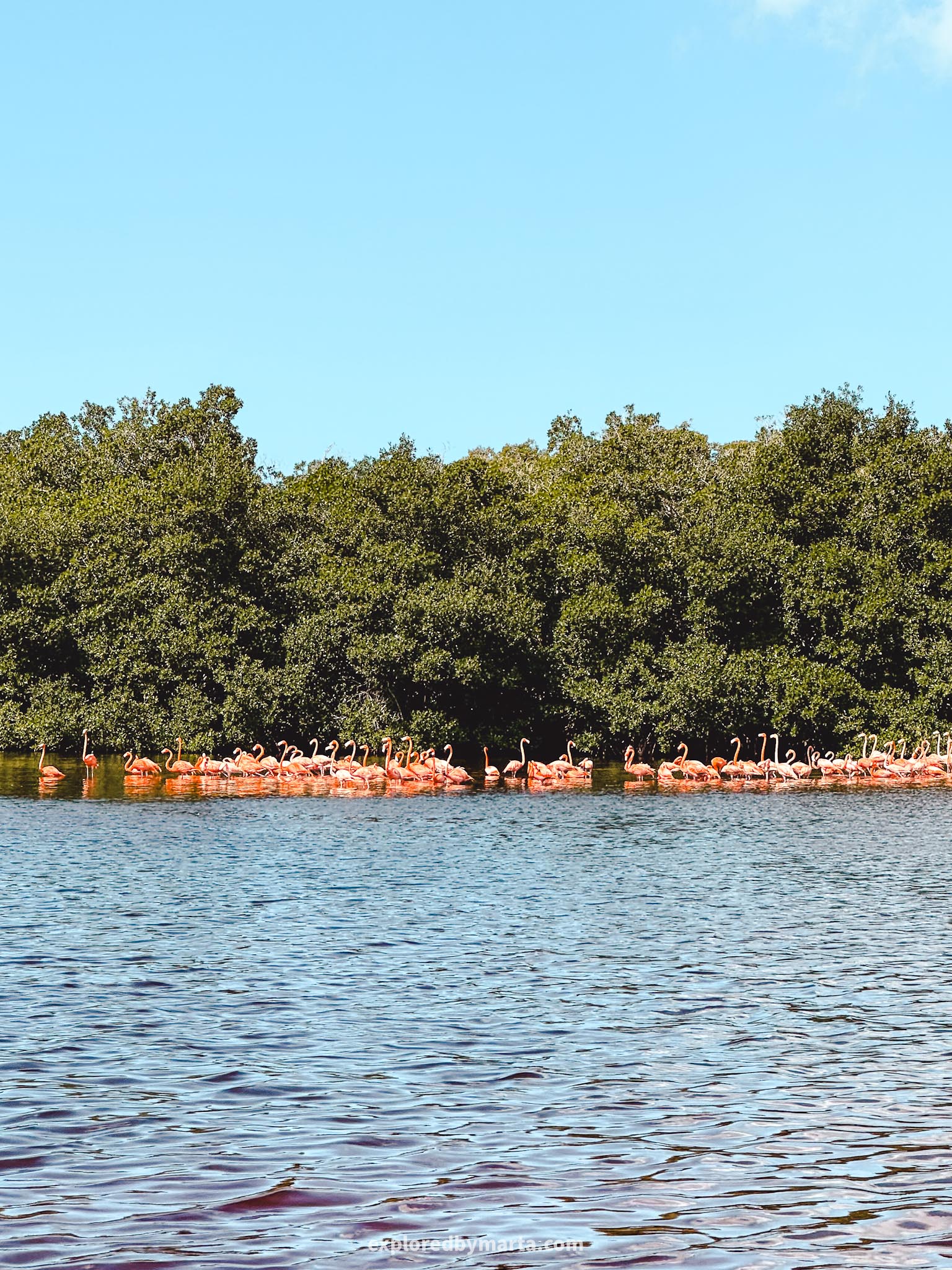
Seeing pink flamingos in the wild is a bucket list thing to do in the Yucatán Peninsula and Merida is the perfect place for that! The main spots to see flamingos in the Yucatán Peninsula are Rio Lagartos and Celestún which is only a 1 hour drive from Merida.
Flamingos live in the Yucatán Peninsula all year long but the biggest hordes of flamingos you might see from November to February during their mating season. We visited Merida in January so we rented a car and went to Celestún to see them.
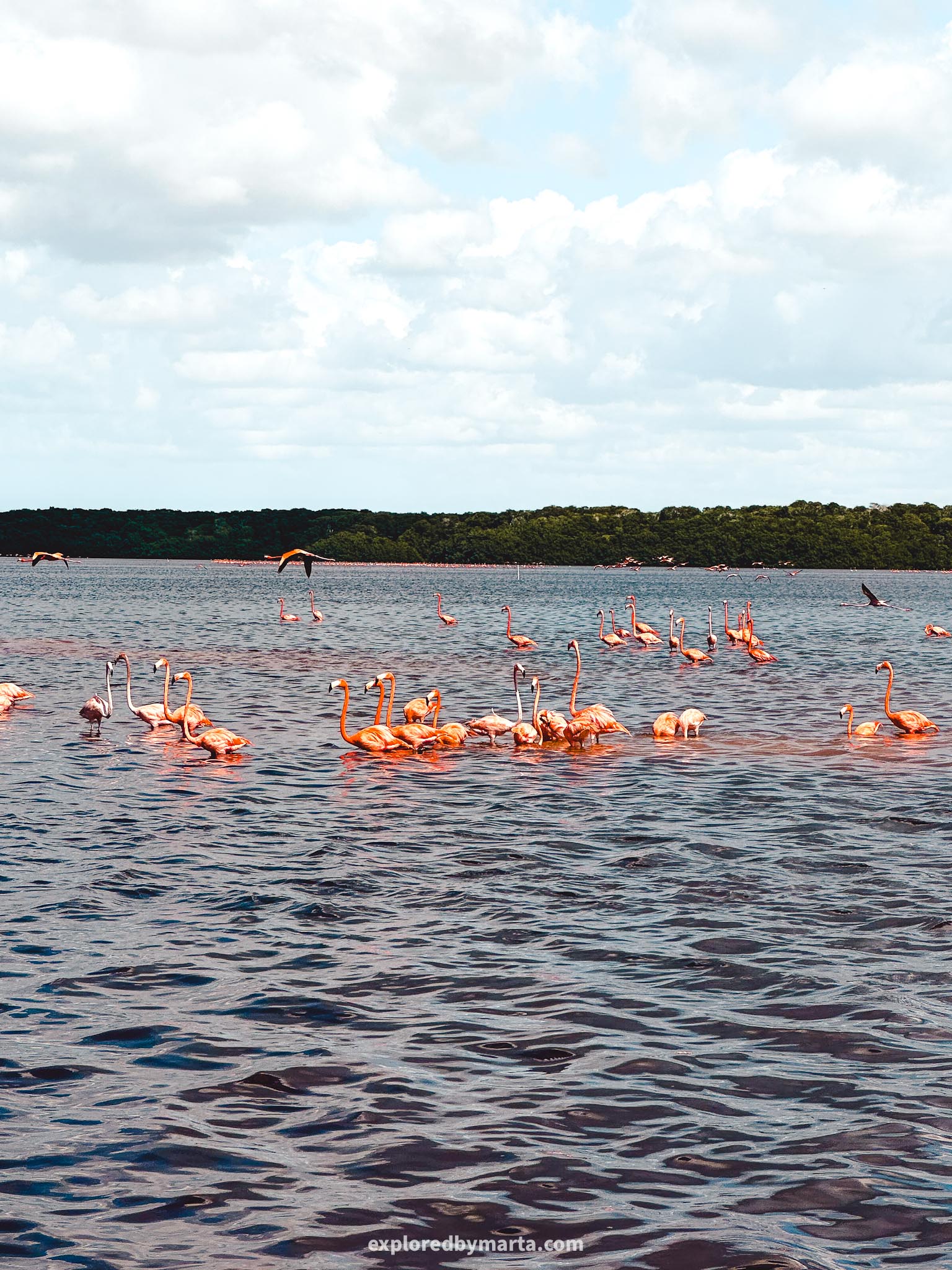
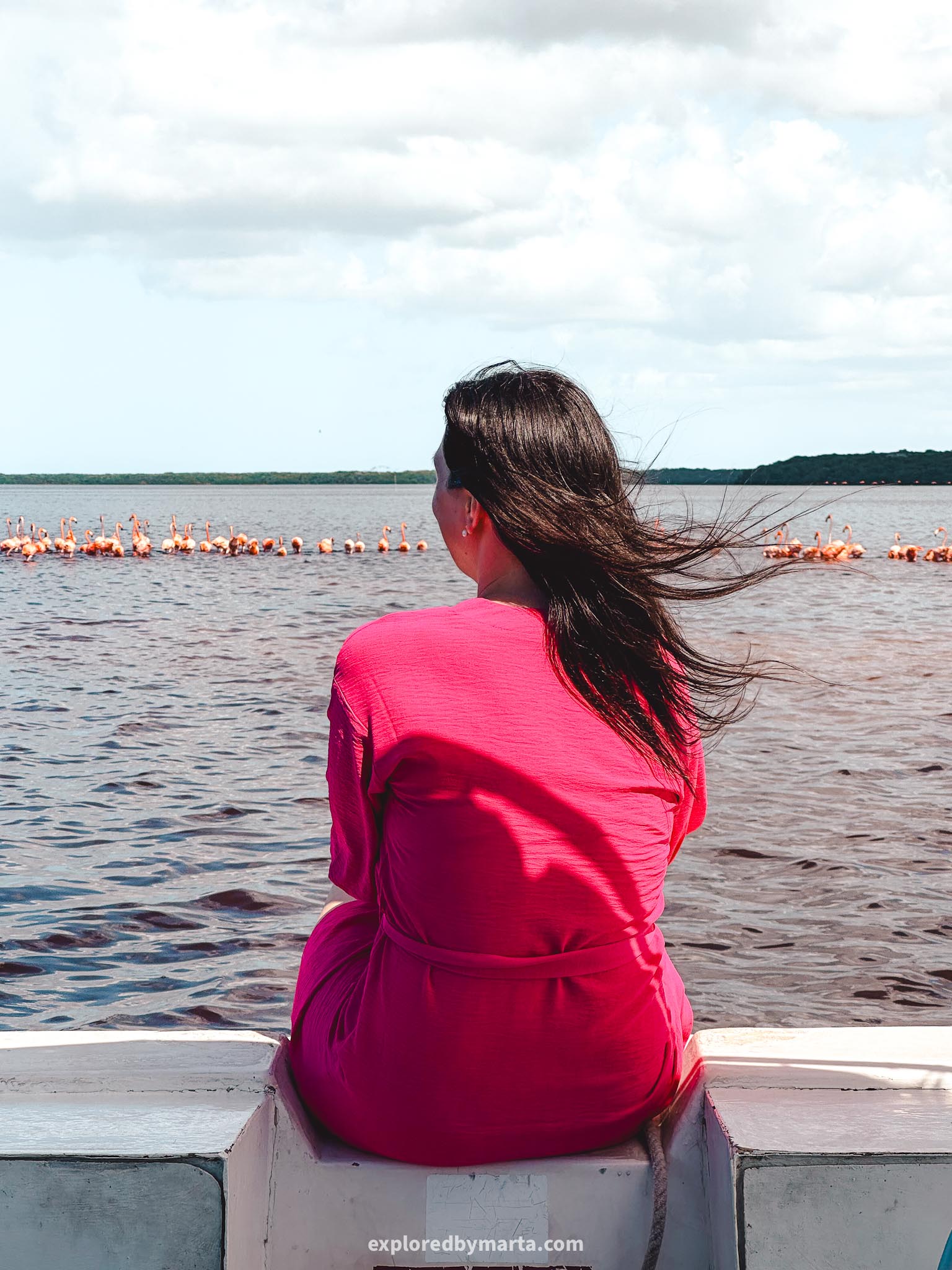
Flamingoes live deep in the Ría Celestun Biosphere Reserve so you need a boat to get to see them. For that, you have to drive to Parador Turístico Celestún boat dock where they offer boat tours to see the flamingos.
When we visited, the cost for a small boat was 3000 pesos (~180 USD) and they allowed up to 6 persons on a boat. We wanted to split the cost so we found other tourists to share a boat but you can also go on your own.
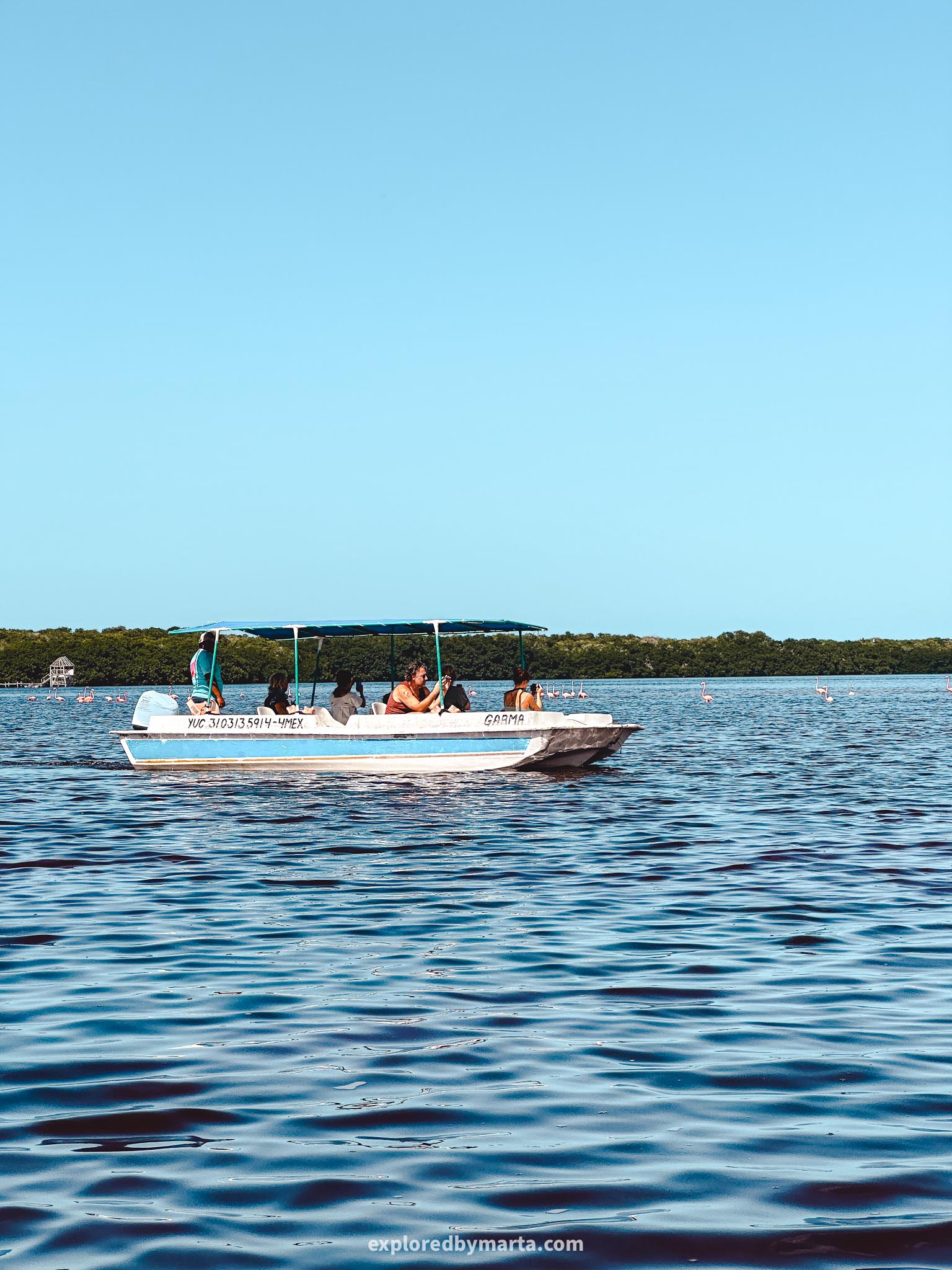

I recommend arriving sometime between 10 AM and 2 PM for the best chances to share a boat with others. We arrived at 12:15 PM and there were quite a few people already so it was easy to find a company. It was cash only!
The boat tour lasts about 1h to 1h 30min. They take you deep into the river and stop the boat near the flamingos. We saw thousands of them! Then they take you through a narrow mangrove tunnel to a beautiful cenote where you can swim.
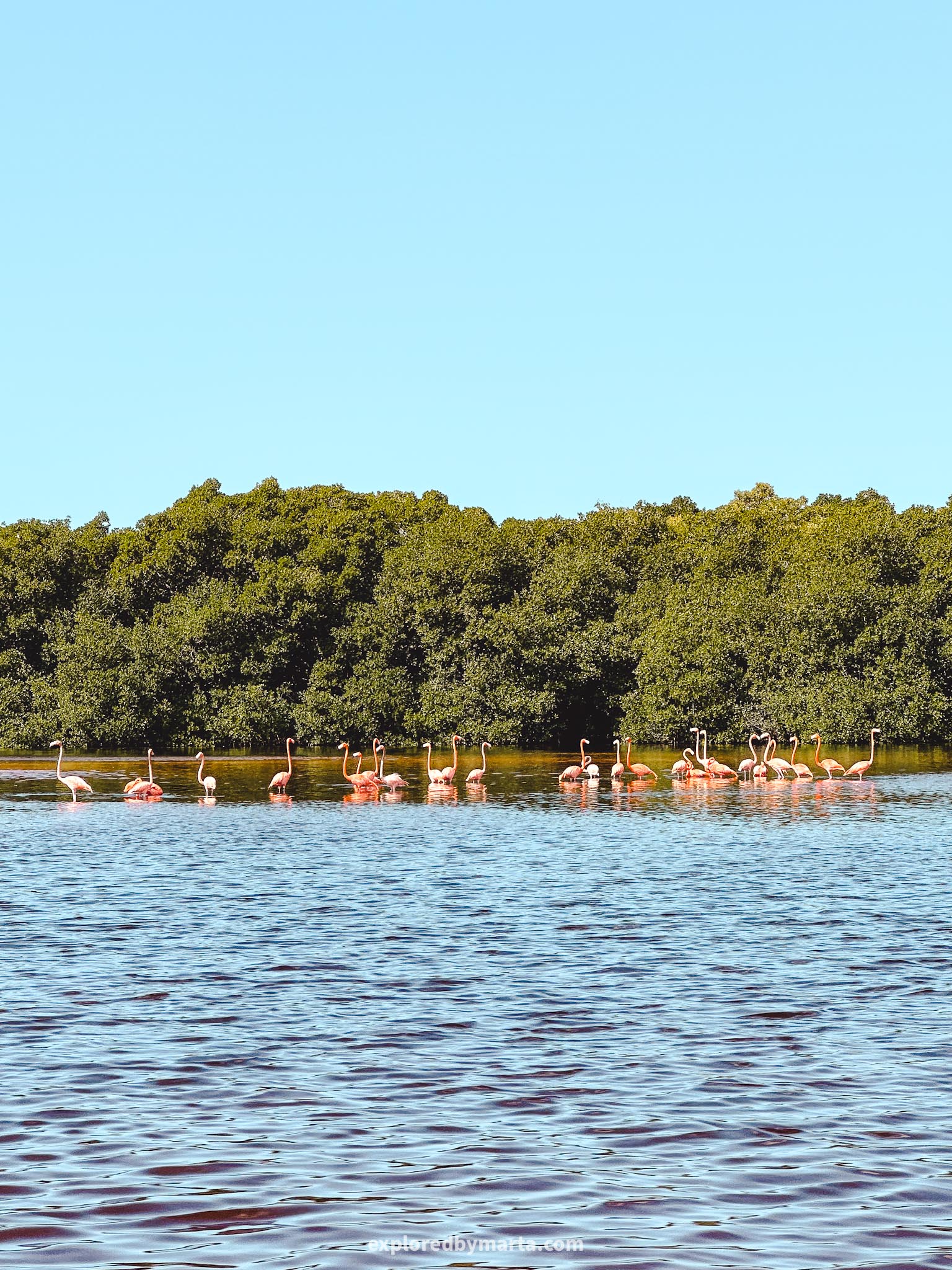
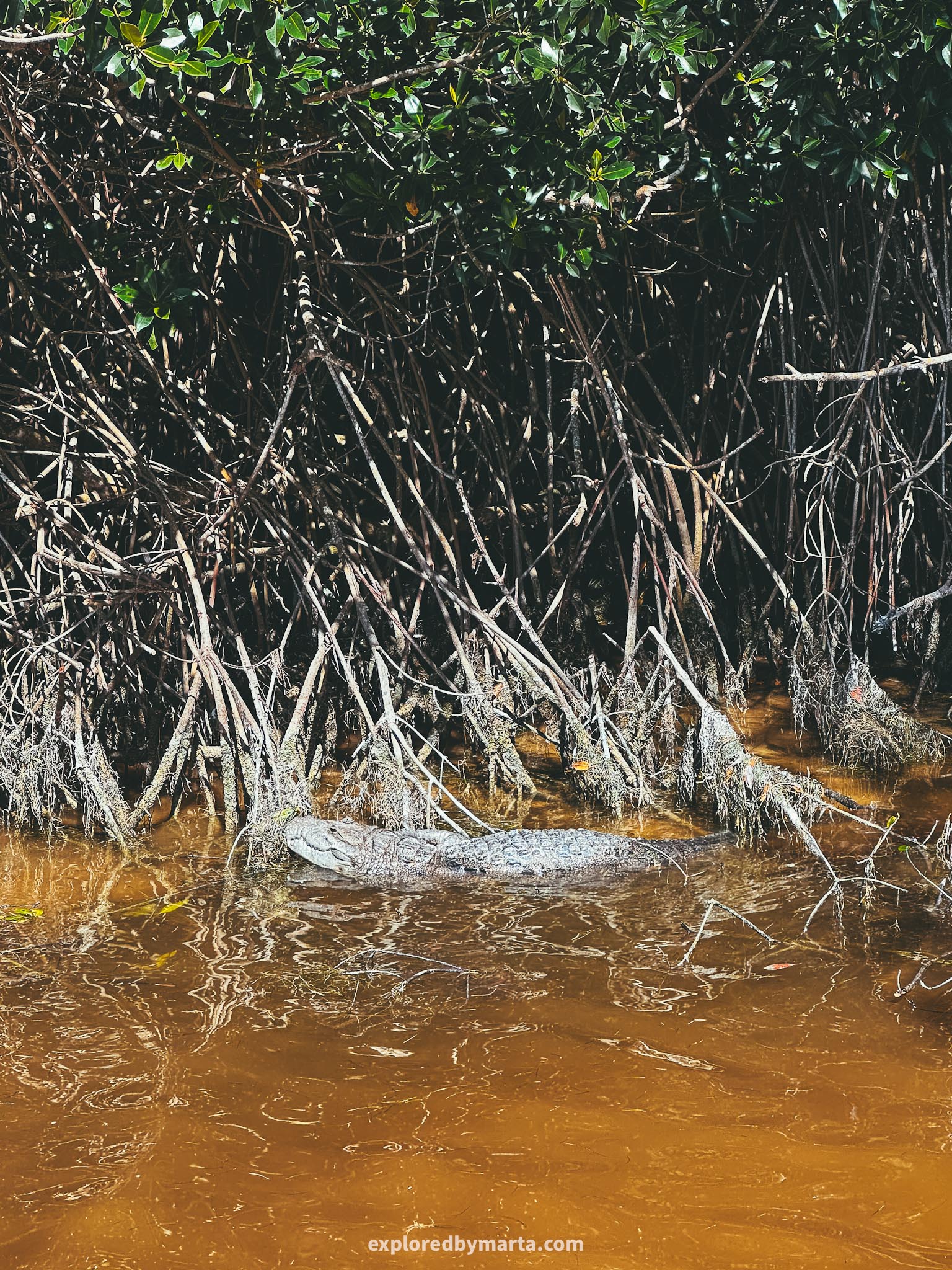
While we were there some of our group went for a swim in the cenote only to find a small crocodile nearby the cenote, haha! Luckily it looked like it already had lunch and wasn’t interested in us at all. This was a fun trip and worth the price!
After the boat trip, we drove to the beach of Celestún – Playa Sur Celestún. It is a gorgeous white-sand beach with blue water. Visiting the pink flamingos in Celestún was one of my favorite Merida day trips without a doubt!
Location: Parador Turístico Celestún
4. Ring of Cenotes Geohydrological State Reserve
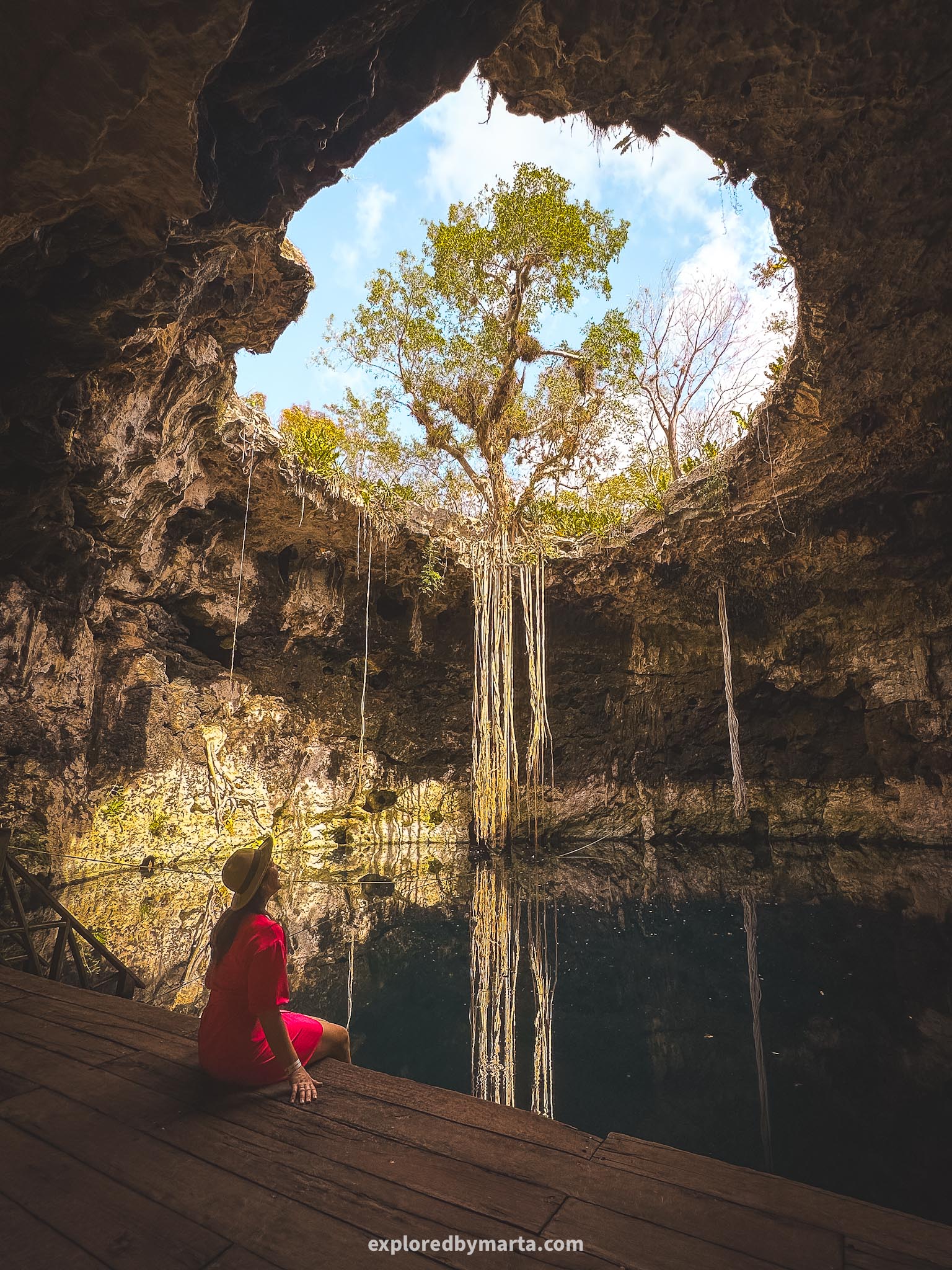
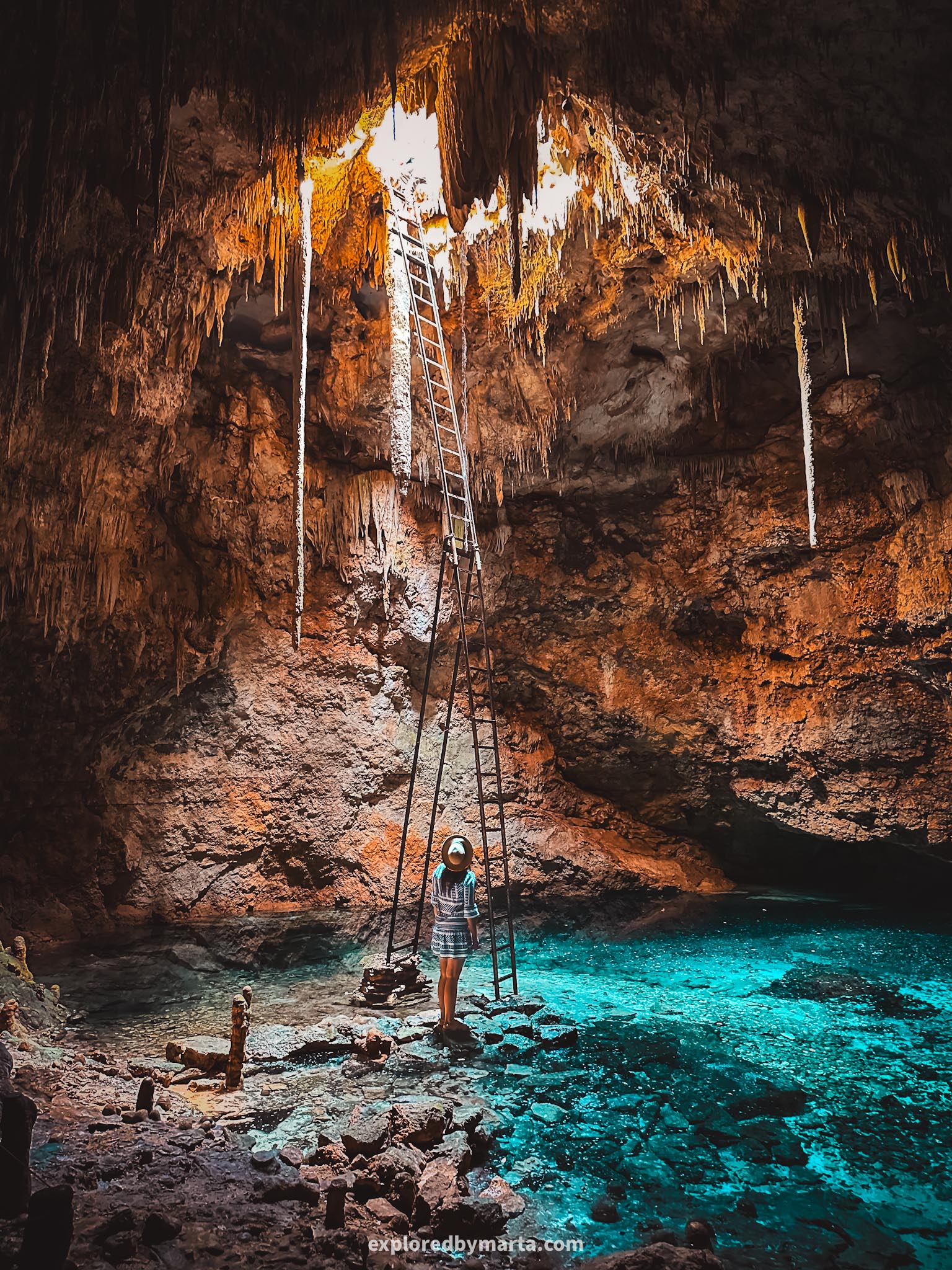
One of my favorite weekend trips (we spent 2 days there) from Merida was to the Ring of Cenotes Geohydrological State Reserve to explore the famous cenotes – water-filled natural sinkholes in the ground. The turquoise waters blew my mind!
Some of the most beautiful cenotes near Merida are located around Cuzamá and Homún municipalities just a 1 hour drive from Merida. We had a rental car and drove there ourselves but you can also go there by bus or colectivo.
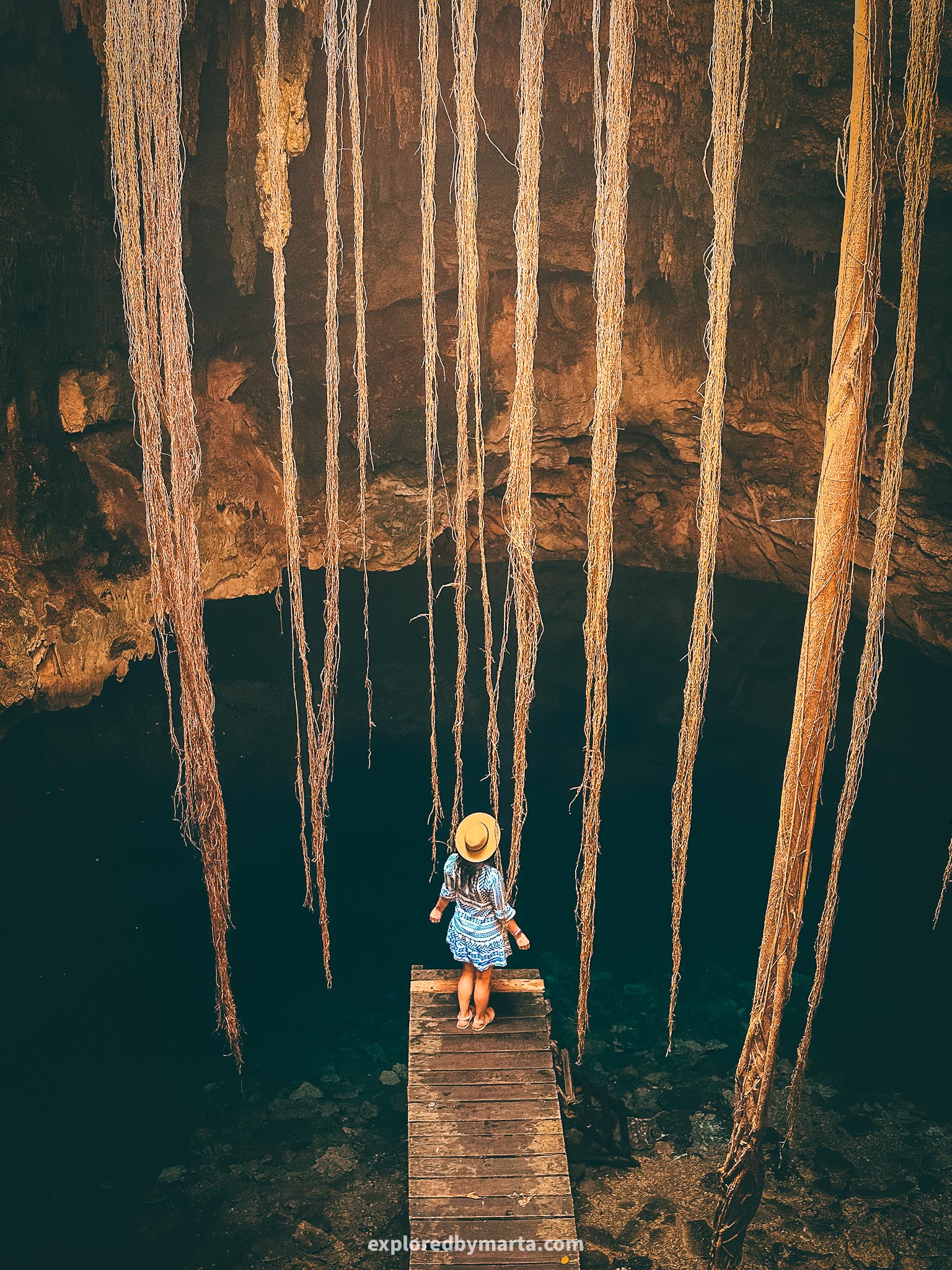
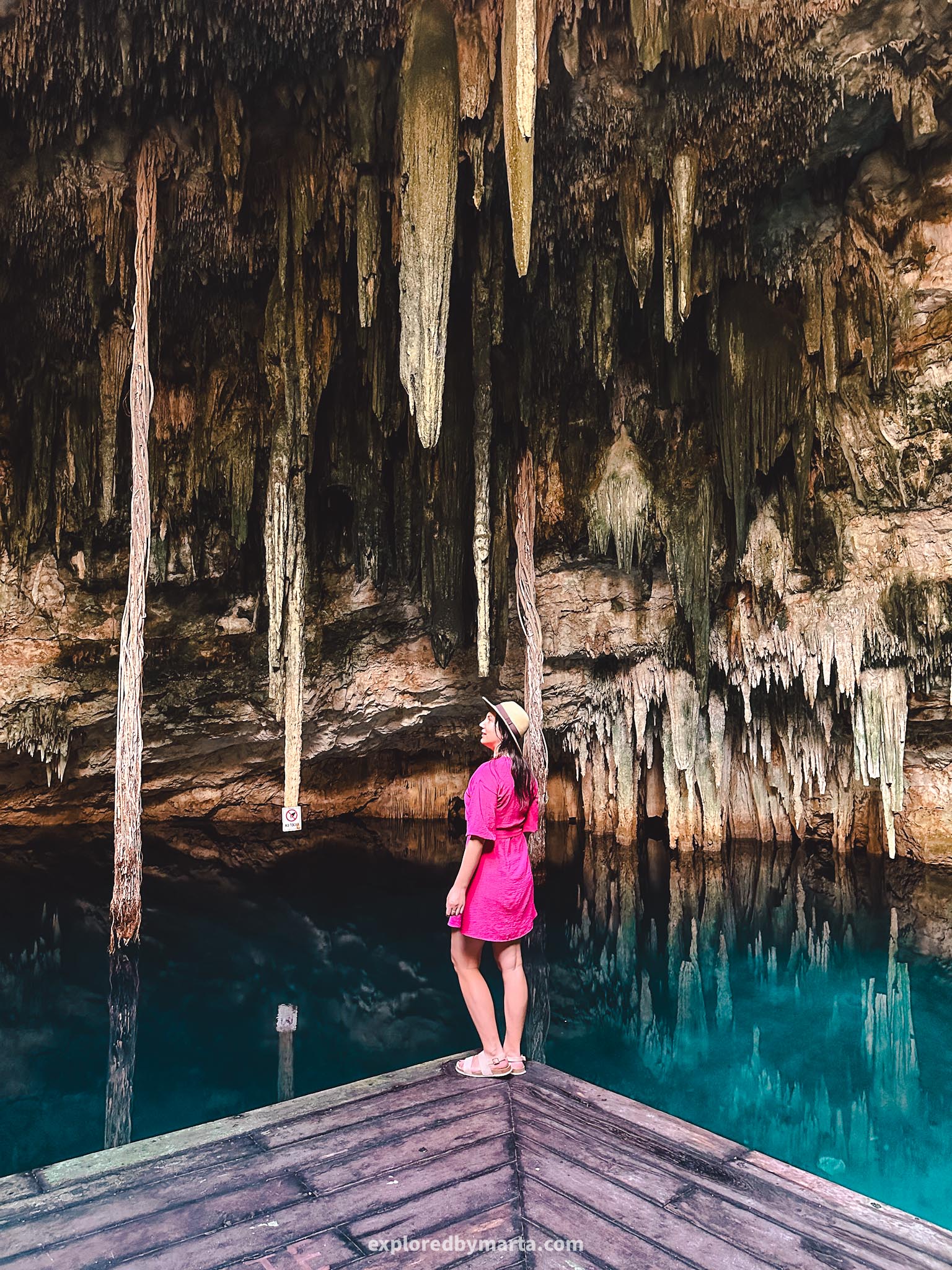
If you go by car then you can freely choose the cenotes you wish to visit. I recommend the three Cuzamá cenotes where you travel into the jungle by a horse-drawn rail cart or the three Santa Barbara Cenotes in Homún. See more cenotes near Merida here!
If you are not sure you want to drive on your own, you can join a guided tour from Homún or Cuzamá (you will see guides everywhere on the streets) and travel to cenotes by a moto taxi with a guide. Oh, and bring cash!
Location: Ring of Cenotes Geohydrological State Reserve
5. Mexico’s Yellow City – Izamal
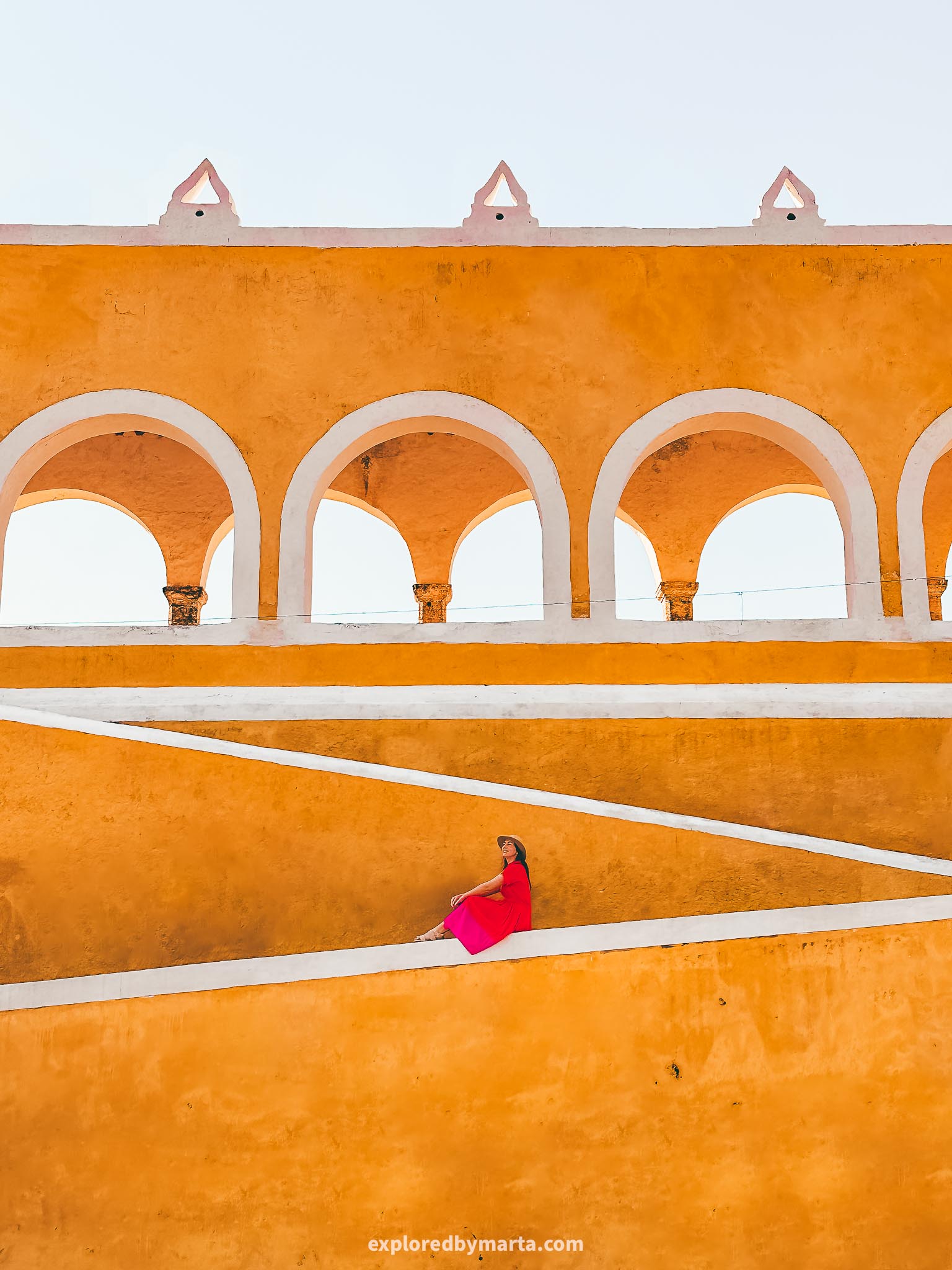
If you are up for a photo-worthy and memorable day trip from Merida, then you must go to Mexico’s Yellow City – Izamal. This Pueblo Mágico (one of Mexico’s magic towns) is just a 1-hour drive from Merida and will only take 3 to 4 hours to explore! Worth it!
The colonial town attracts visitors with its yellow color as all the buildings in the center of this magical town are painted yellow (no, not the entire town) so you will get plenty of those iconic Instagram photos in this town near Merida!

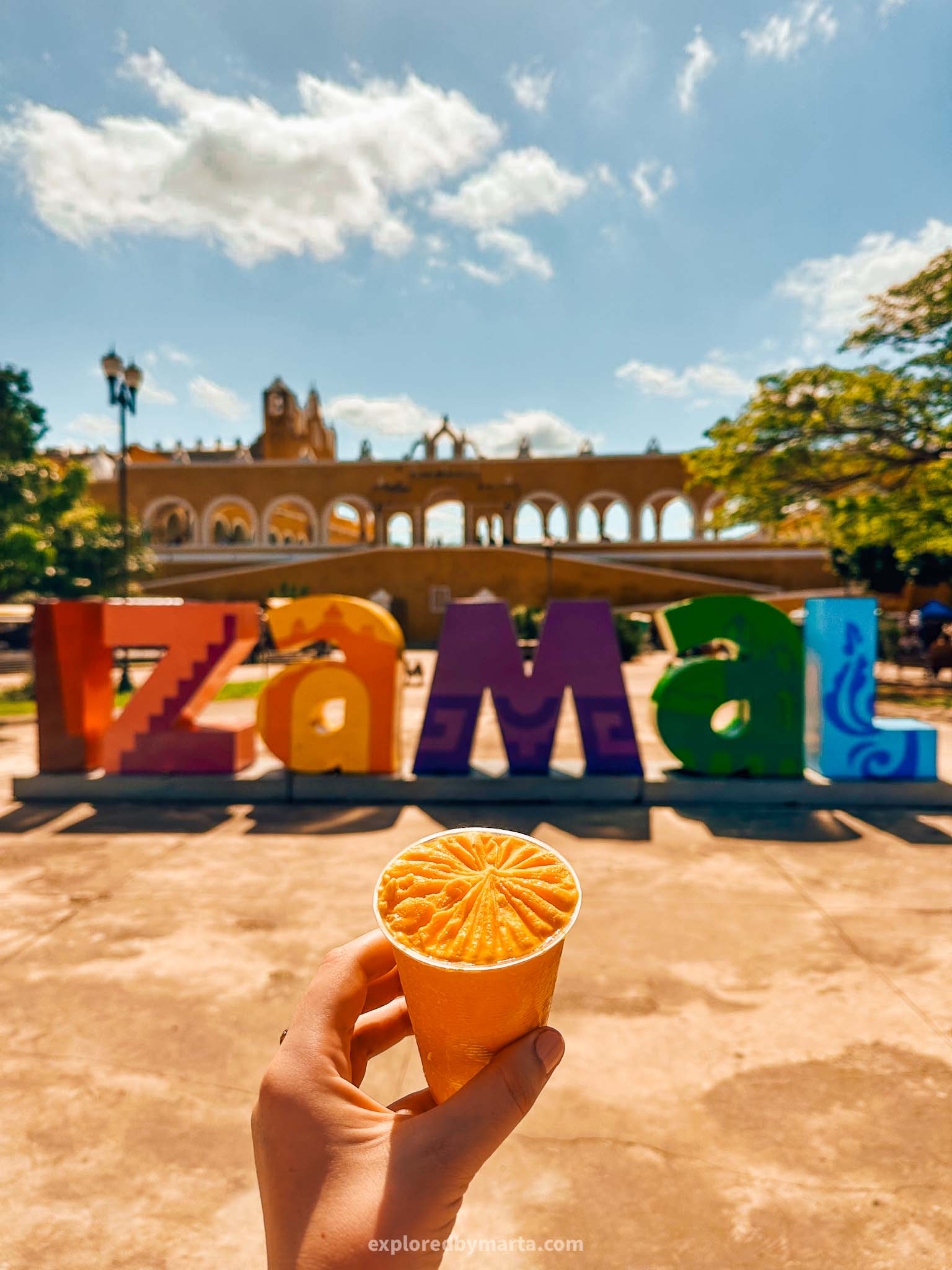
The most famous attraction in Izamal is the Convento de San Antonio sitting atop a hill (there once was an ancient Maya pyramid) in the heart of the town. Next to it, you will find the second-largest atrium in the world surrounded by a beautiful yellow arcade.
Other must-do things in Izamal include climbing the Mayan pyramids – Kinich Kak Moo and Itzamatul, eating the yellow corn ice cream, visiting 5 de Mayo Park, Mercado Municipal de Izamal, and trying Mayan dishes at Restaurant Kinich. We loved it all!
Location: Convento de San Antonio in Izamal
6. Beach day at Progreso
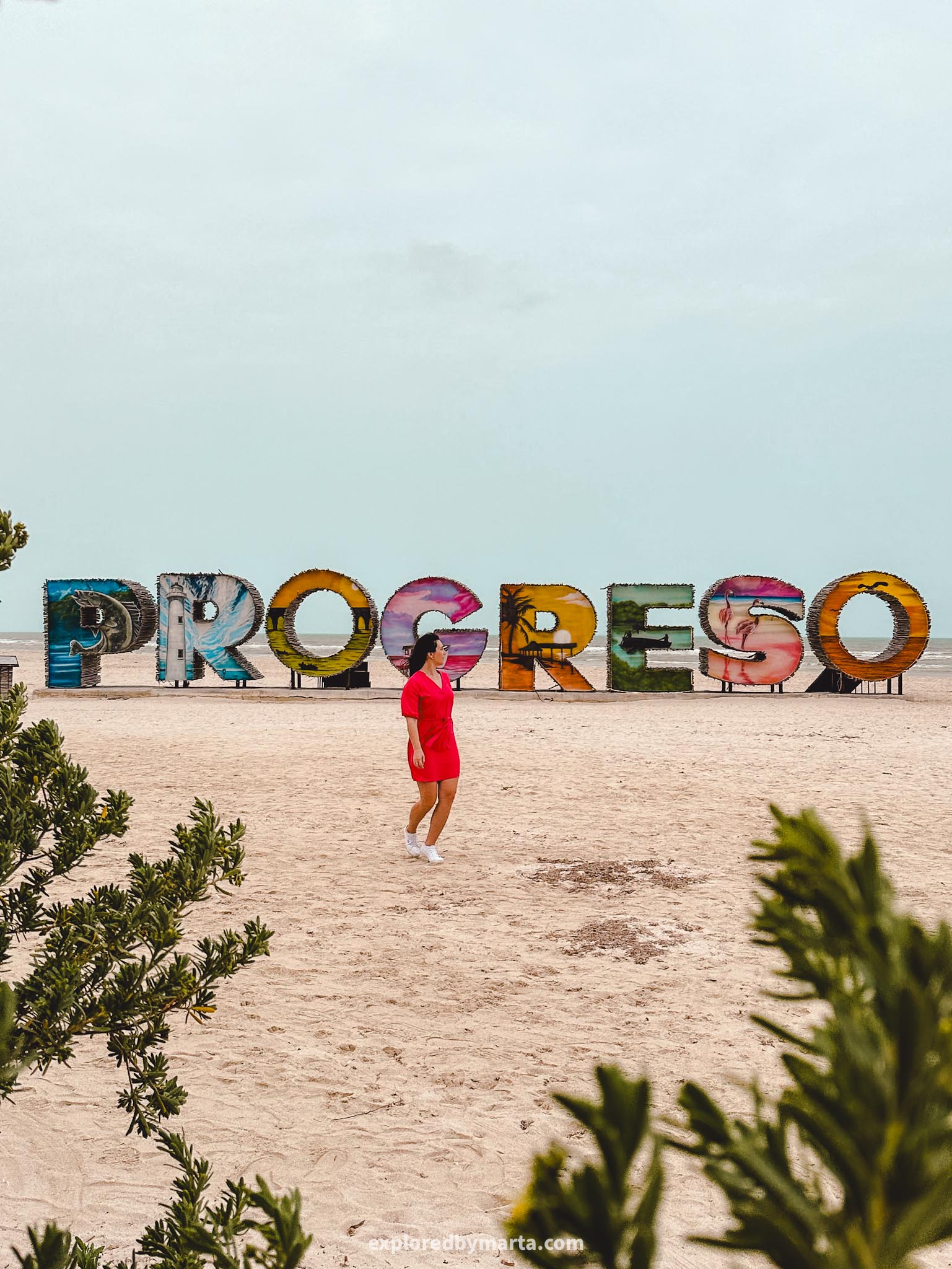

Merida is a majestic city with incredible architecture, rich culture, tasty food, and plenty of things to do but there is one thing the city lacks – a beach. So one day we woke up in Merida, jumped into our car and in 30 minutes we were at a beach in Progreso!
The small town of Progreso is the most popular beach destination for people who live in Merida. It is a port city that regularly welcomes cruise ships and because of that, it has developed at a faster pace over the years. A great place to escape the buzz of Merida!
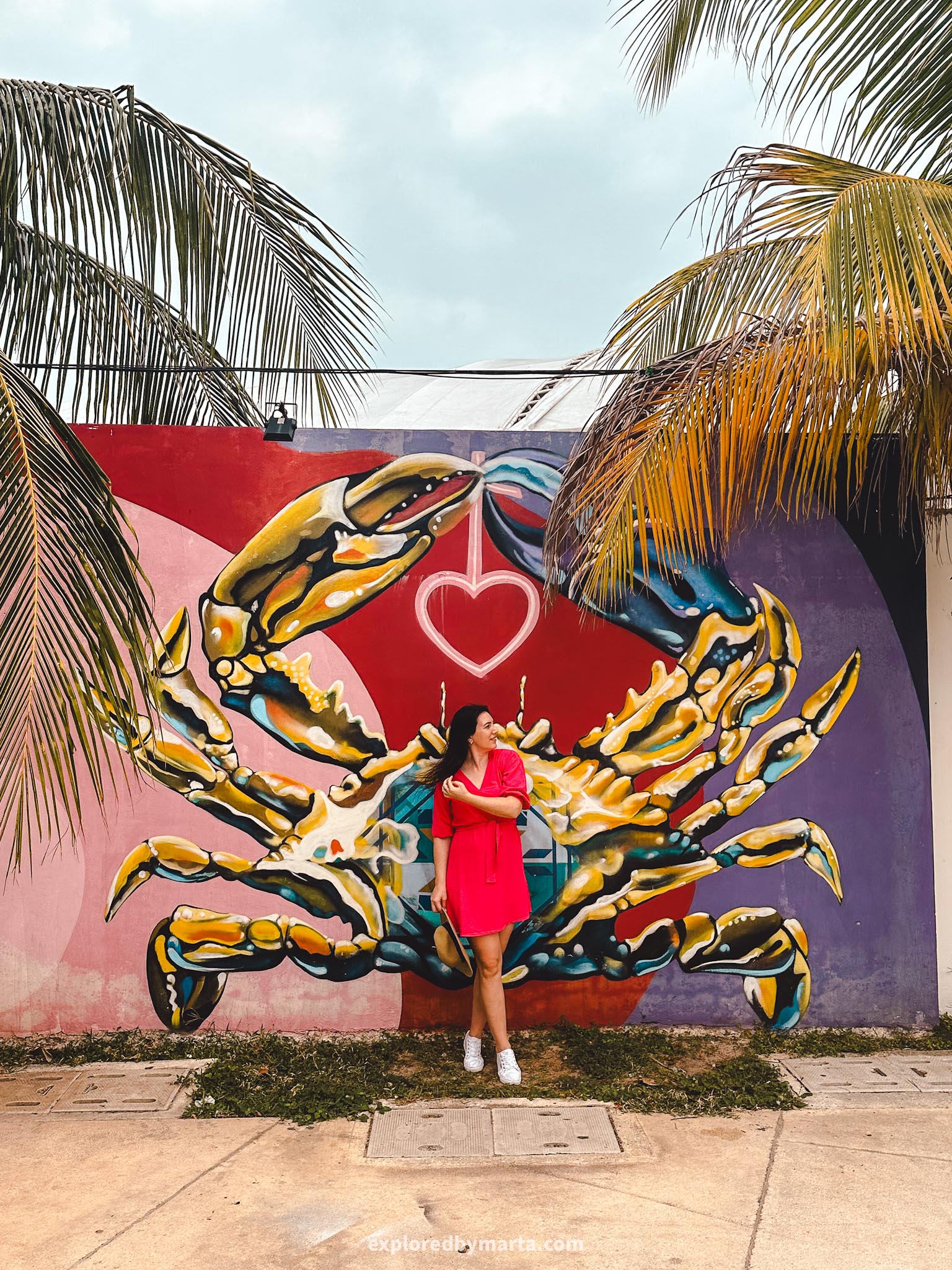
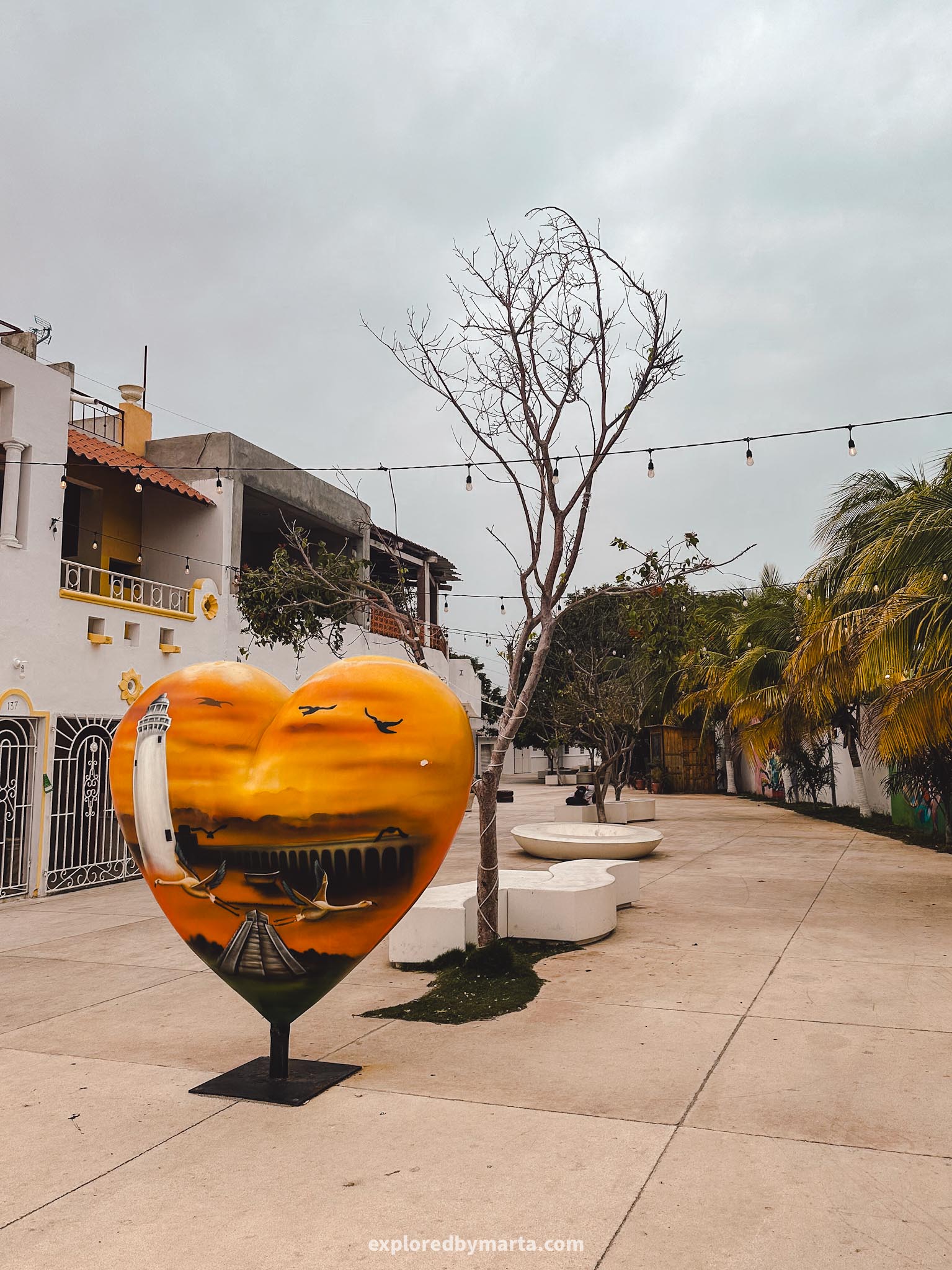
Progreso has a beautiful beach promenade, palm-lined sandy beach, places to relax, and many restaurants ready to welcome and feed you. We spent half a day in Progreso exploring the beach town and enjoying the fresh ocean air.
Besides the promenade and the beach, I recommend checking out the little artsy Callejón del Amor street with street art, photo corners, decorative light strings, and benches to sit on and enjoy the street that once was, basically, a garbage dump.
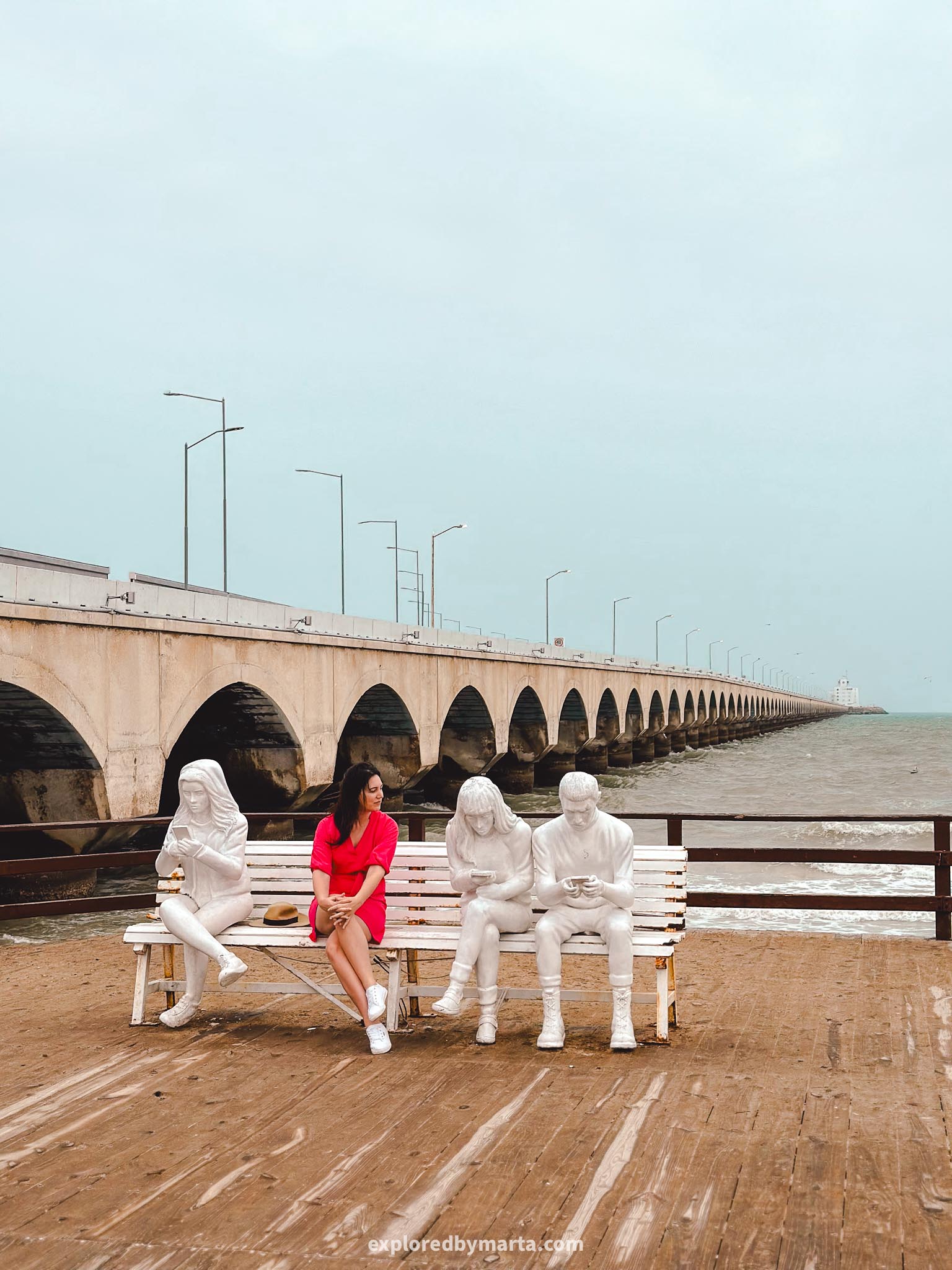
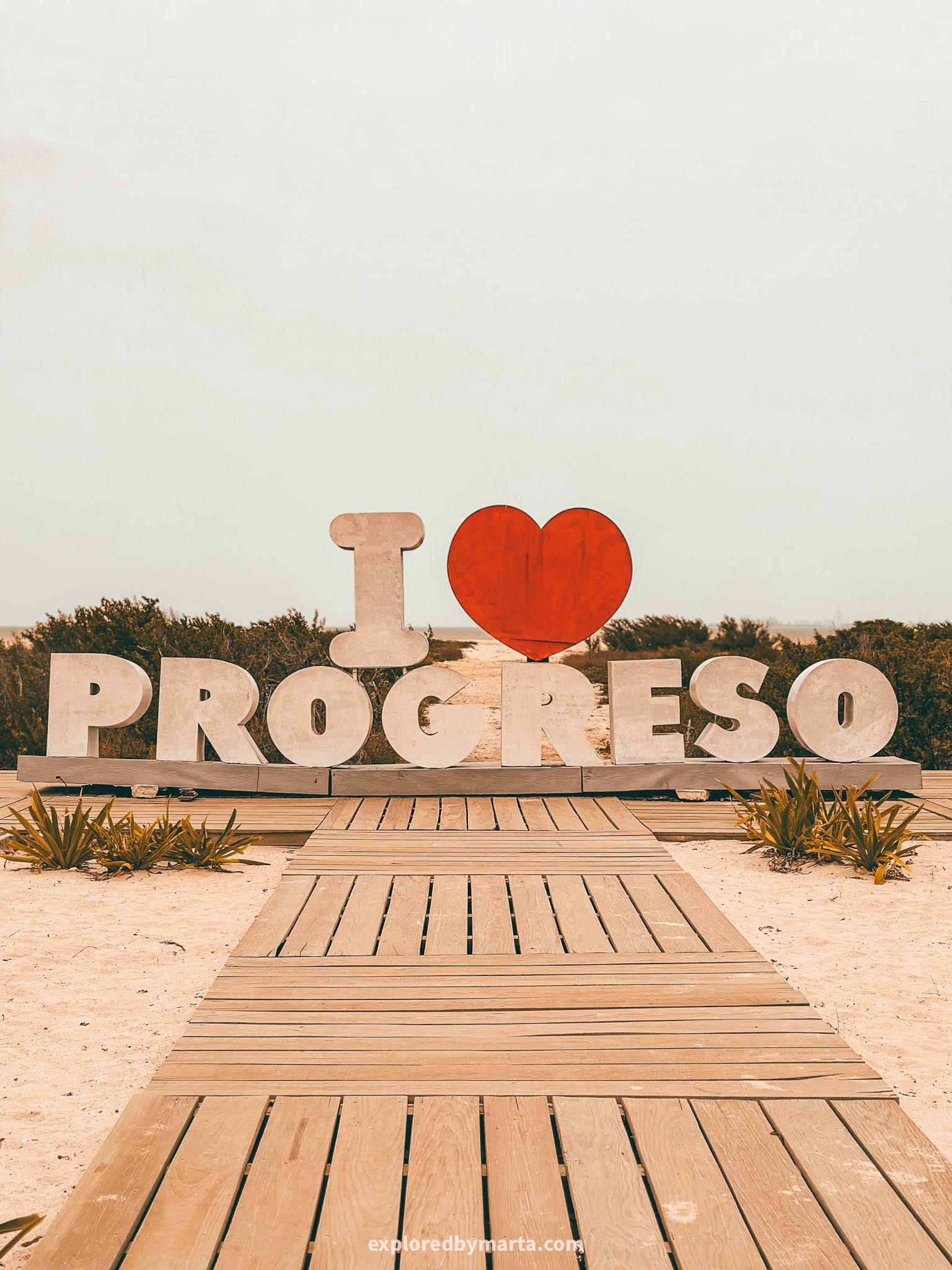
Don’t forget to walk to the El Deck hangout area with the modern-time Monumento Conectados art installation – a bench with statues looking at their phones. It is located right next to the cruise ship dock stretching into the sea.
We also walked to more remote Playa León beach with the large Progreso letters and the ‘I love Progreso’ art object. If you arrive in Progreso later in the day, consider staying until sunset as you get the perfect view of the sun setting into the Gulf of Mexico!
Location: Playa de Progreso – Callejón del Amor – Monumento Conectados – El Deck – Playa León
7. Xcambó Archaeological Zone

Xcambó Archaeological Zone are less-visited Mayan ruins located just a 1-hour drive from Merida, Mexico. We paid 95 pesos each for entry and, as you can see from the photos, this is still one of the sites where you can climb the pyramids!
Xcambó was built between 350-550 AC and served as a commercial port as well as managed the salt mines. We combined a visit to Progreso beach town with a visit to this archaeological site as they are located near each other.
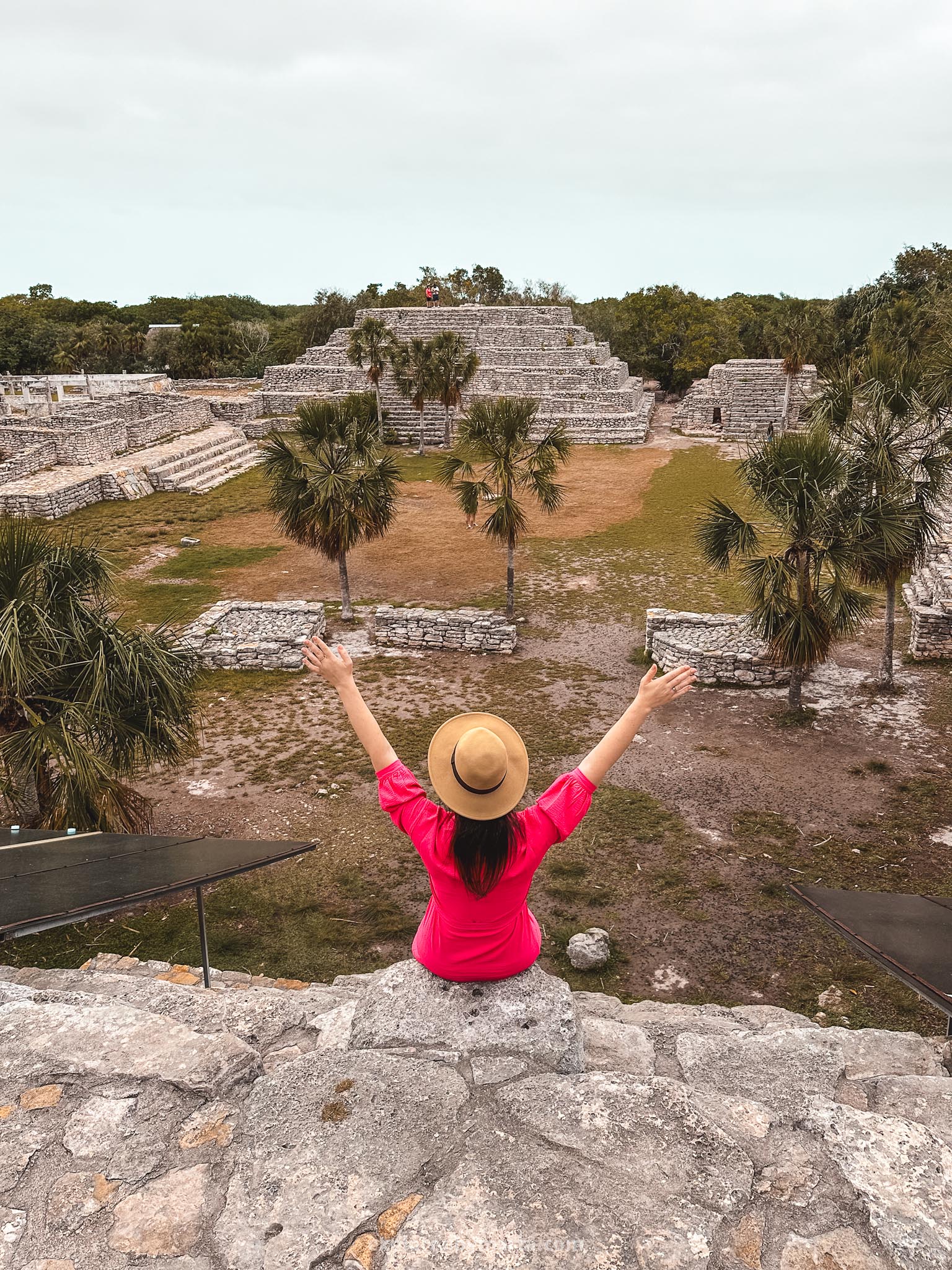
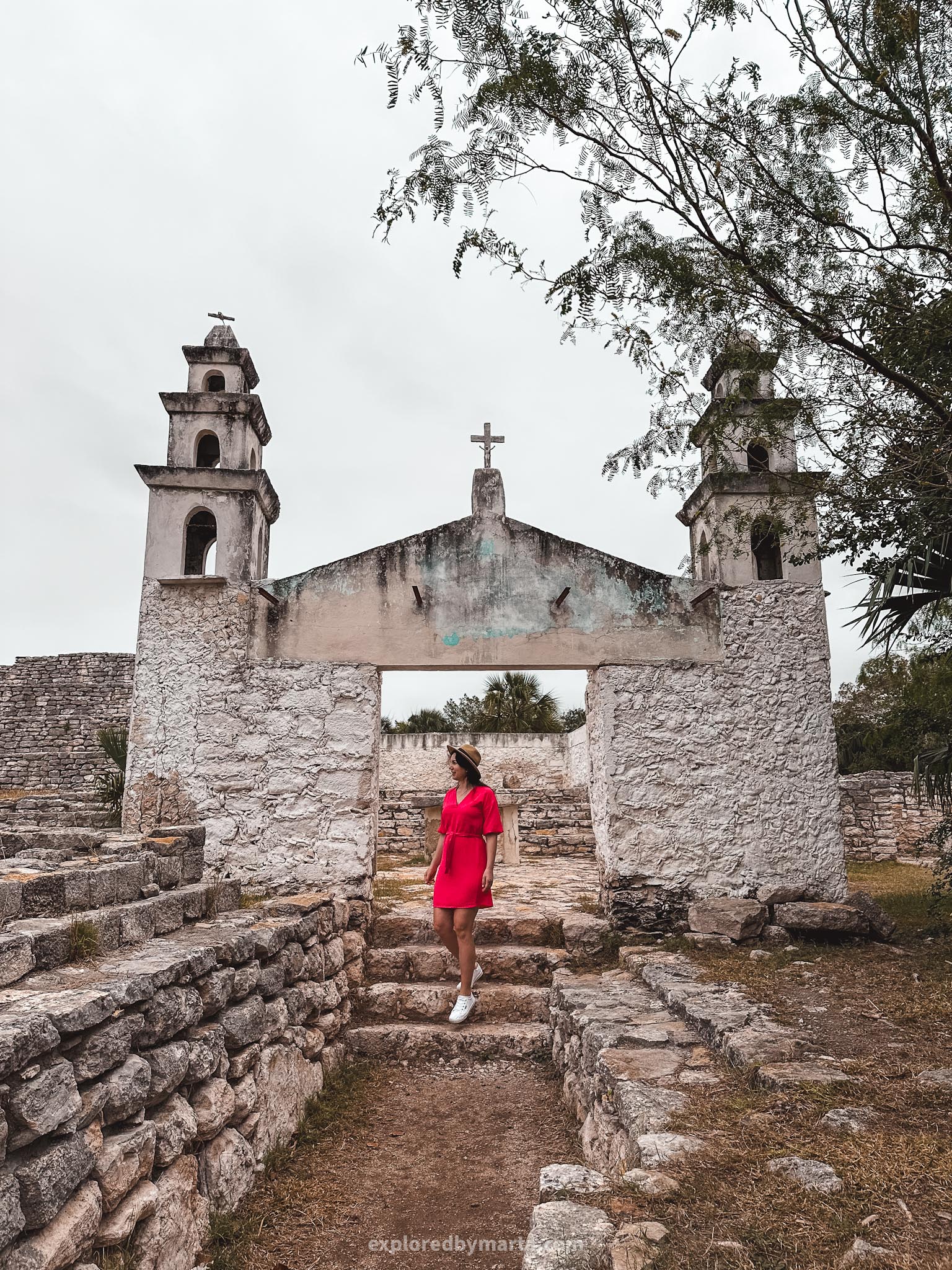
You are allowed to freely roam around the historic village exploring all the buildings and pyramids. There are several platforms, temples, and also bigger and smaller pyramids where you are allowed to climb up to the top.
This was actually the first archeological site that we visited in Yucatán and holds a special place in my heart because this was the place where I climbed a Mayan pyramid for the first time in my life, haha!
Location: Zona Arqueológica Xcambó
8. Pink salt lakes at Las Coloradas

Las Coloradas is one of the most beautiful places in the Yucatán Peninsula! The bright pink salt lakes and the massive salt hills are a sight to see! Although Las Coloradas is quite a distance from Merida (a 3-hour drive), I think it is worth a visit!
However, visiting this place is also a bit of a game of luck. Before coming here I studied all the reviews on Google Maps and felt really conflicted. It is a decent drive and to go there and to not get what I wanted would be a disappointment.
But we decided to go and somehow managed to arrive here on the perfect day with the best weather conditions (we visited on February 4th). It was sunny, no clouds, and the lake was screaming pink color at us! So what is the best time to come here?
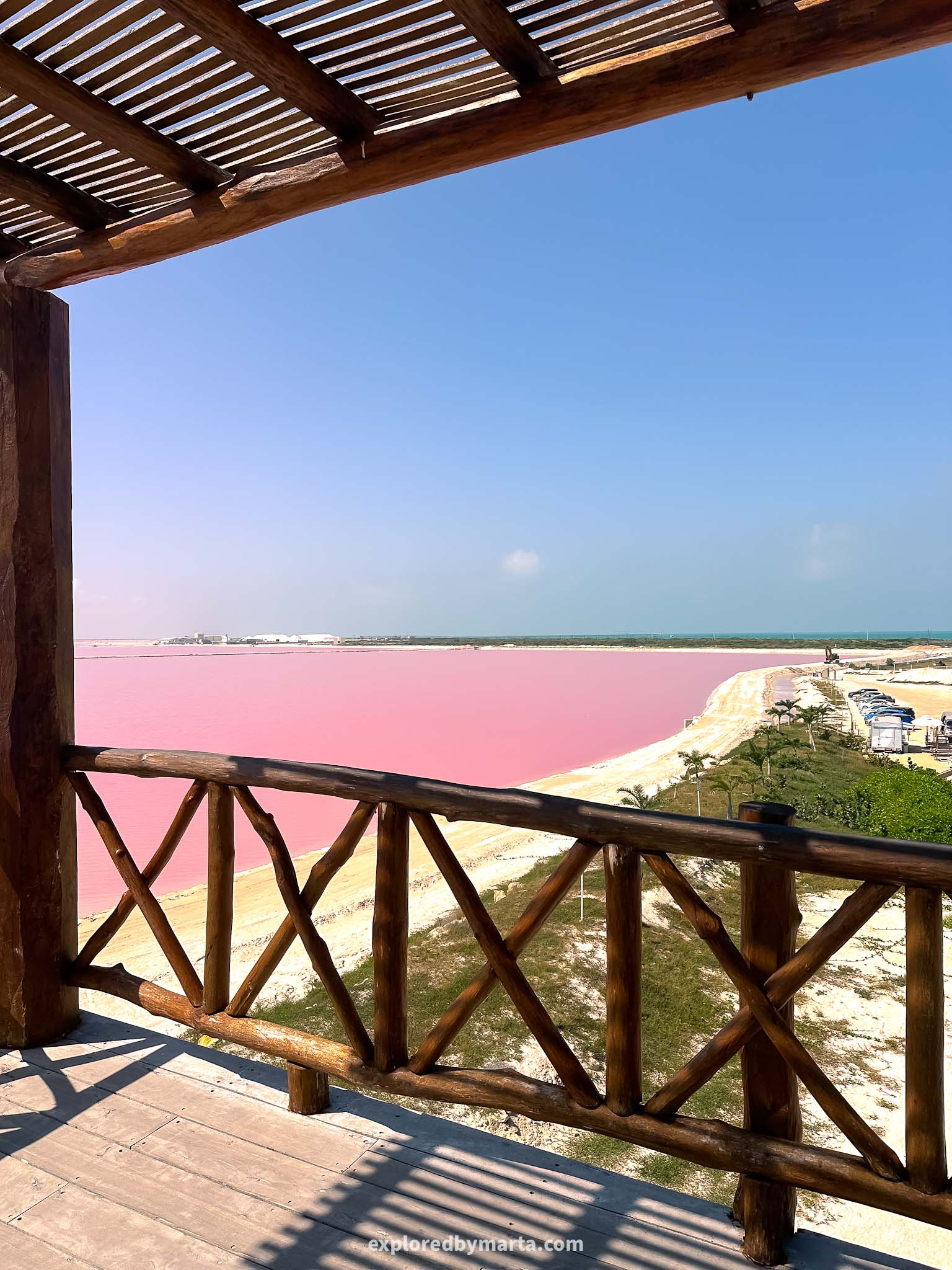
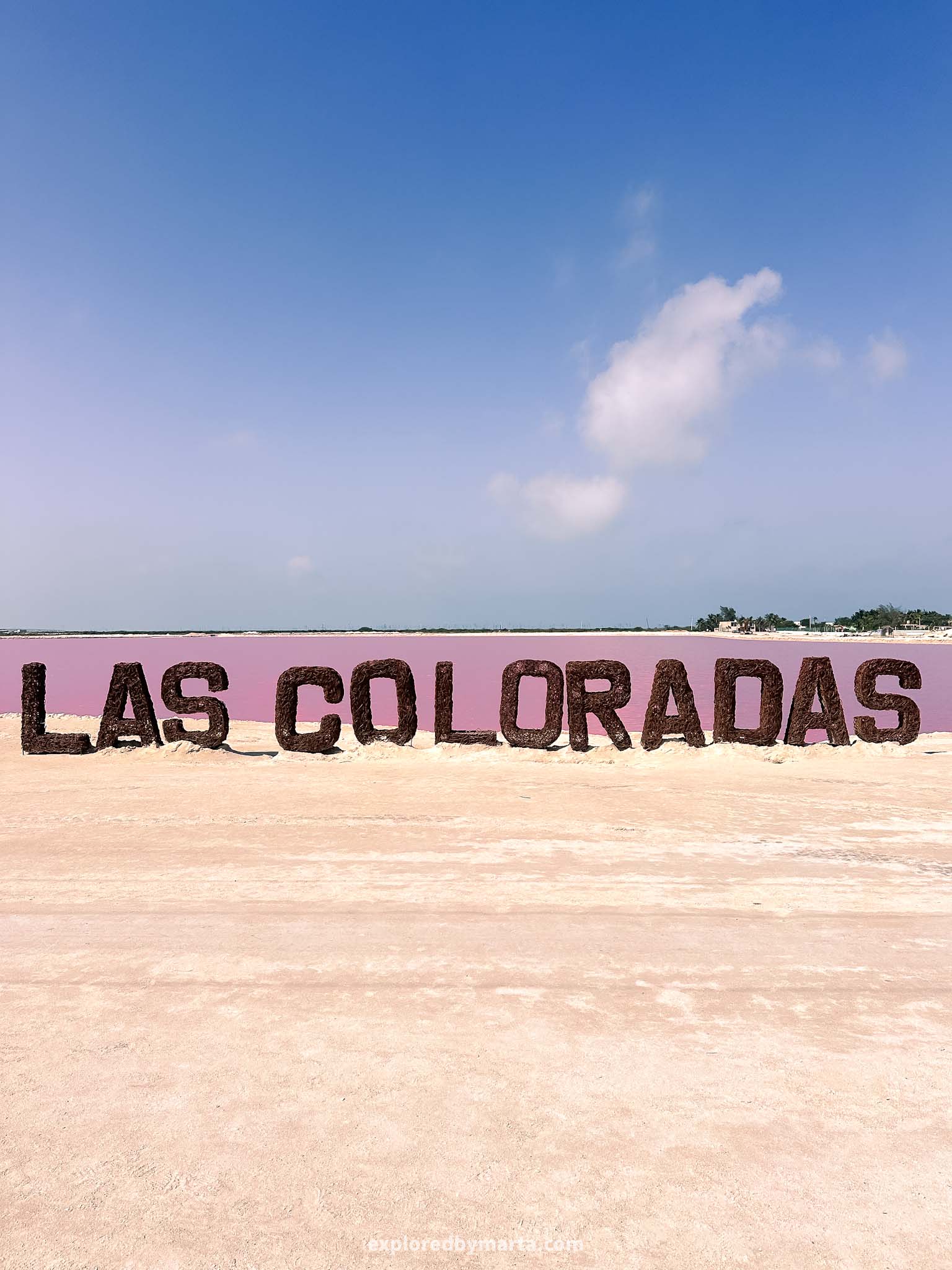
The lakes won’t be pink if there was a storm or a lot of rain over the previous days, you will see a bright pink color only on sunny days (no clouds) and the best angle of the sun will be around midday. And a little bit of wind will make the color pop!
So how to get there? The right place to go is marked on Google Maps as Las Coloradas Parque Turistico. There you will find the ticket office, the observation tower, and the entrance to the pink salt lagoons.
Shortly before arriving, we were met with a group of guides who stopped us and one of them took us to the ticket office. Don’t be scared of them, haha! You can’t visit the lagoons on your own so you need one of those guides anyways!
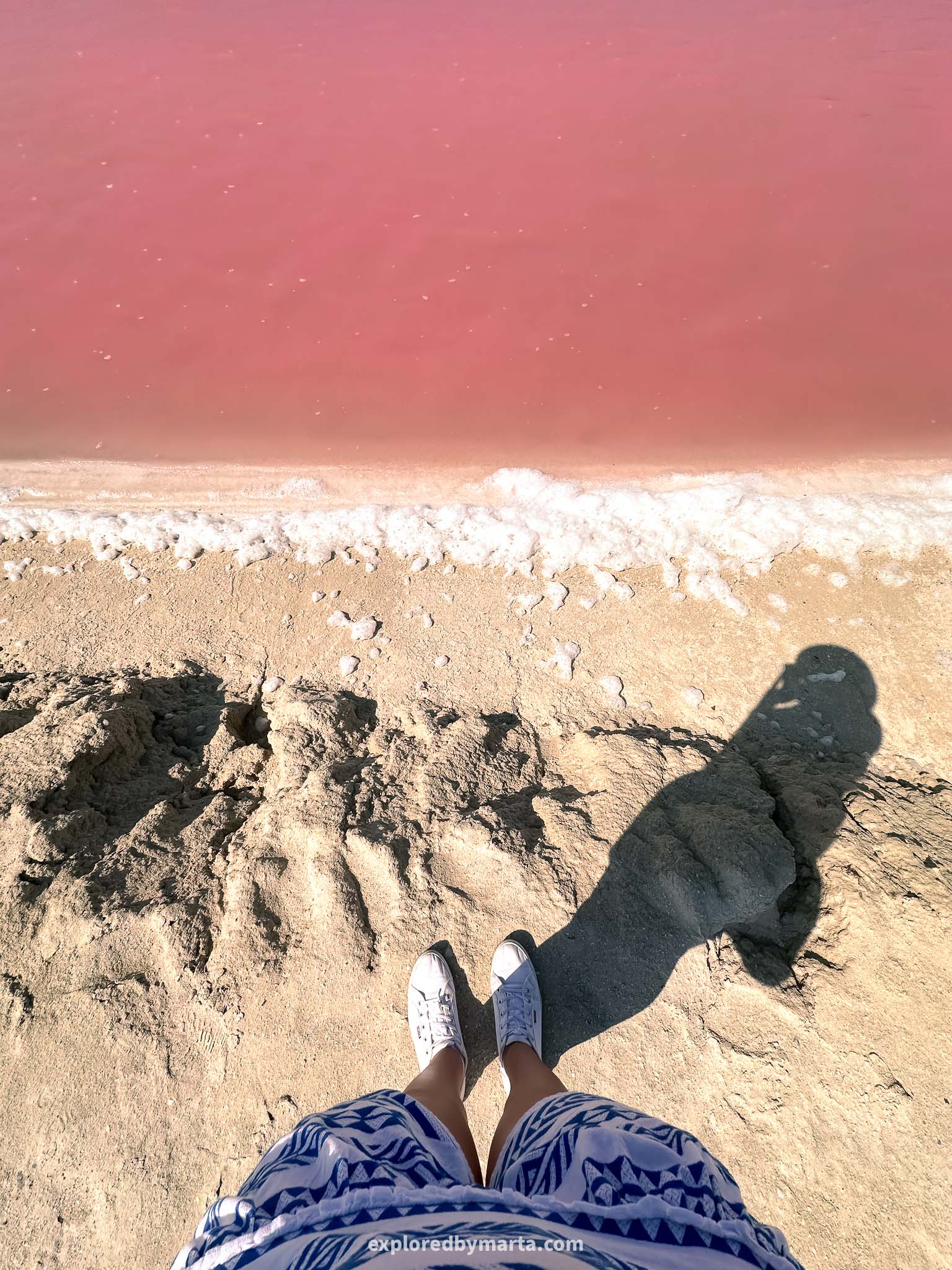
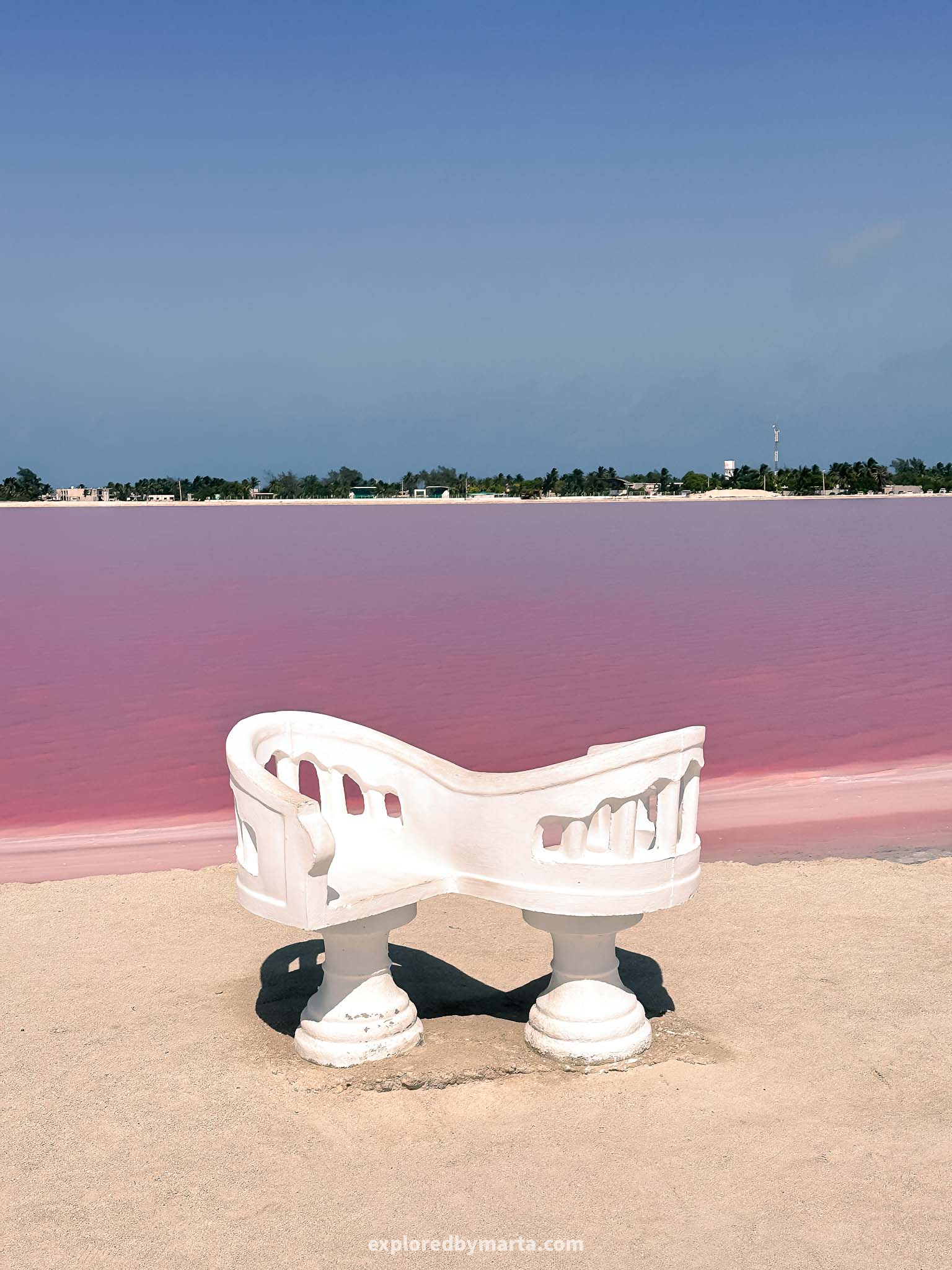
After you have chosen a guide, you will then have to drive to the ticket office and pay for the entrance. There are three options – you can do a walking tour, you can do a bicycle tour, or a safari tour by car. All have different prices and lengths.
We chose the cheapest option (~350 pesos per person) and went on a walking tour with the same guide that picked us. At first, we climbed the observation tower and then walked by a road along the pink lake. The tour lasts about 45 minutes.
While the guide tells you stories about the place, you are allowed to take as many pictures as you like. There are different photo spots along the way. But you are not allowed to touch the water or swim there.
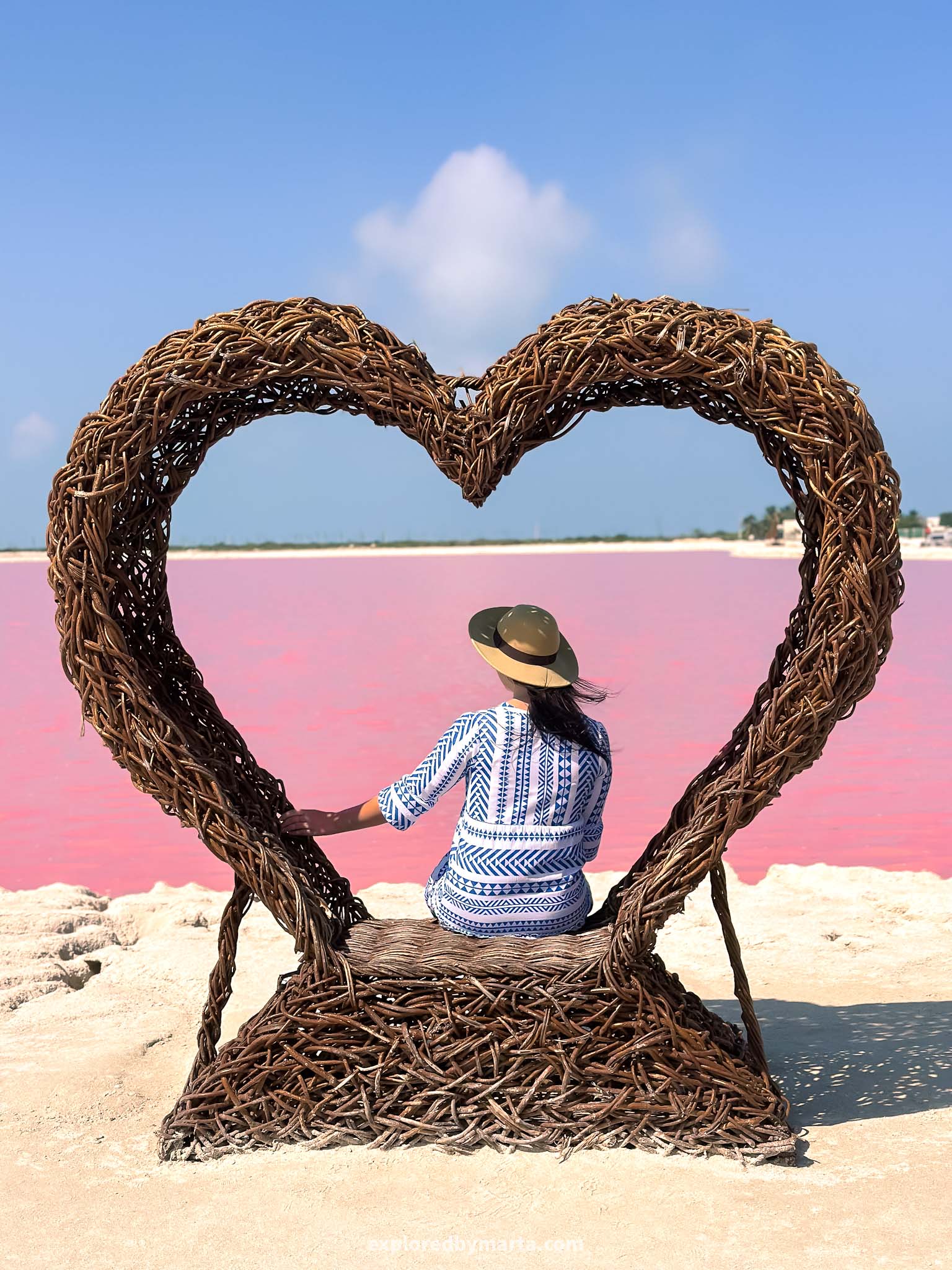
After the tour, the guide asked for a tip which is meant as payment for his service. Overall we really liked visiting Las Coloradas. However, I highly recommend checking out the latest reviews on Google Maps before you come!
Take into account that they usually harvest salt here around late July to August and the pink color is less visible. The guide also told us that after one hurricane the lake lost its pink color for a whole year so better make sure it’s worth coming!
You should also know that the lake is not natural. It is a pink pond owned by a large company that produces salt and you can’t see much of it unless you pay for the guided visit. Yes, it is very commercialized but I wouldn’t say I was disappointed.
Location: Las Coloradas
9. Chichén Itzá Archaeological Zone
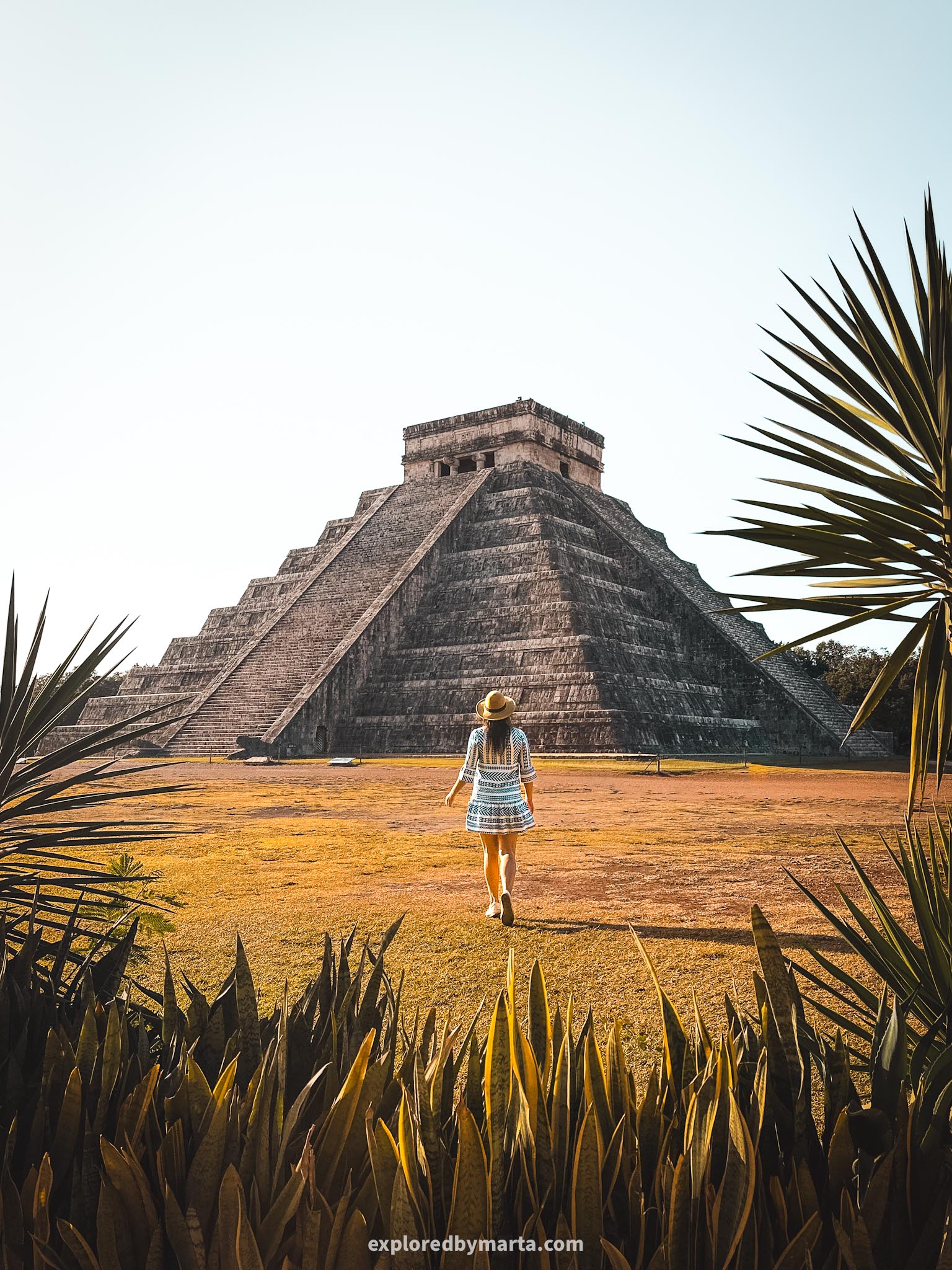
Chichen Itzá is the most famous archaeological site in the Yucatán Peninsula and one of the most visited places in Mexico. It was declared a UNESCO World Heritage Site and was voted as one of the New Seven Wonders of the World in 2007.
Historically it was one of the largest Mayan cities dating back to 600 AC. It existed as a major regional center for many centuries until its decline by the 12th century. It still operated until the Spanish conquistadors arrived in the 16th century.
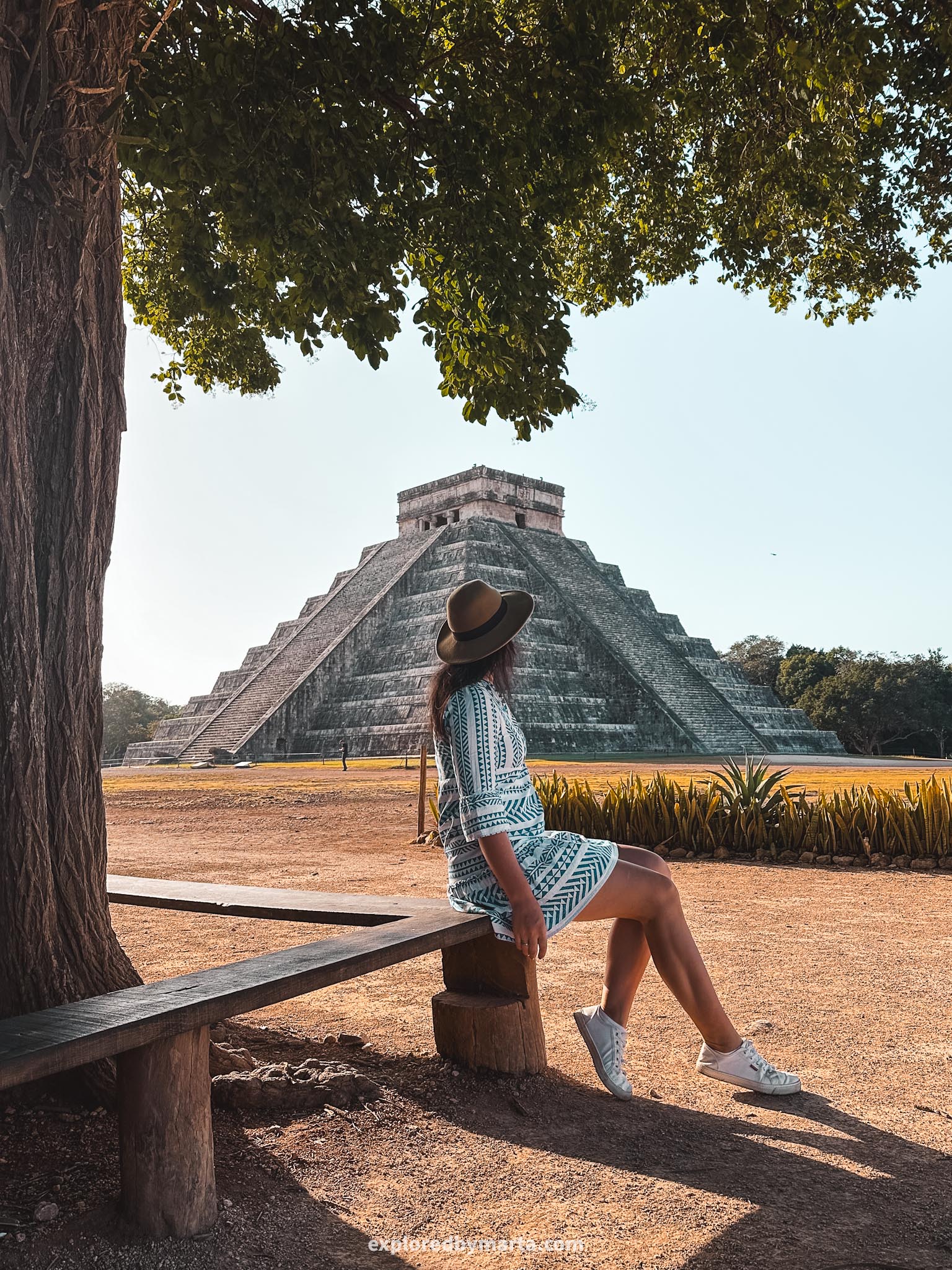
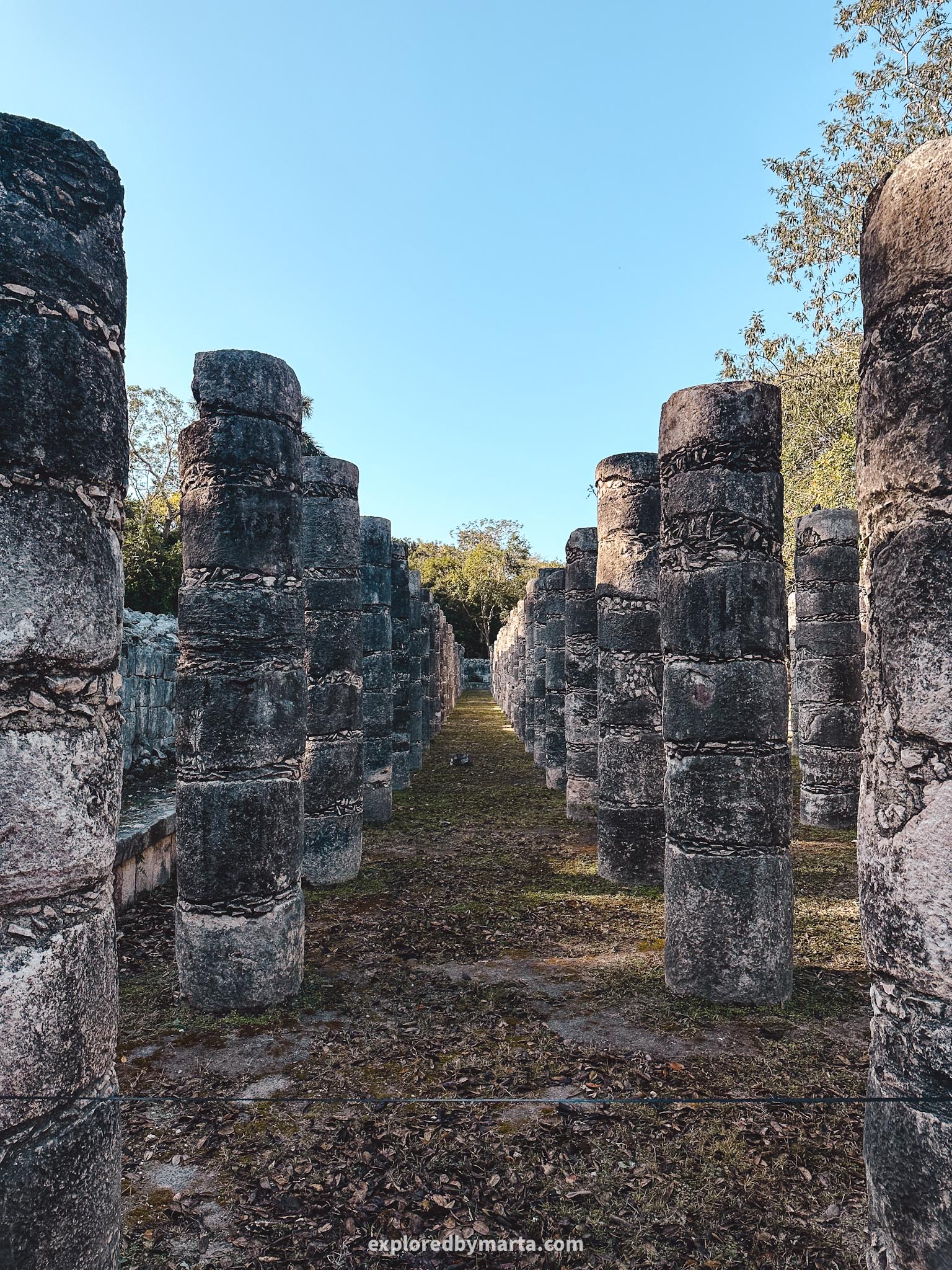
Chichén Itzá archaeological zone consists of multiple temples, pyramids, structures, and even a sacred cenote (cenote sagrado) where Mayans deposited valuables and gifts including human sacrifices as a form of sacrifice to their rain god Chaac.
The most famous structure is, of course, the great pyramid El Castillo (the castle) which is also known as the Temple of Kukulcan. The pyramid with the temple on top of it is 30 meters high and was built sometime between the 8th and 12th centuries.
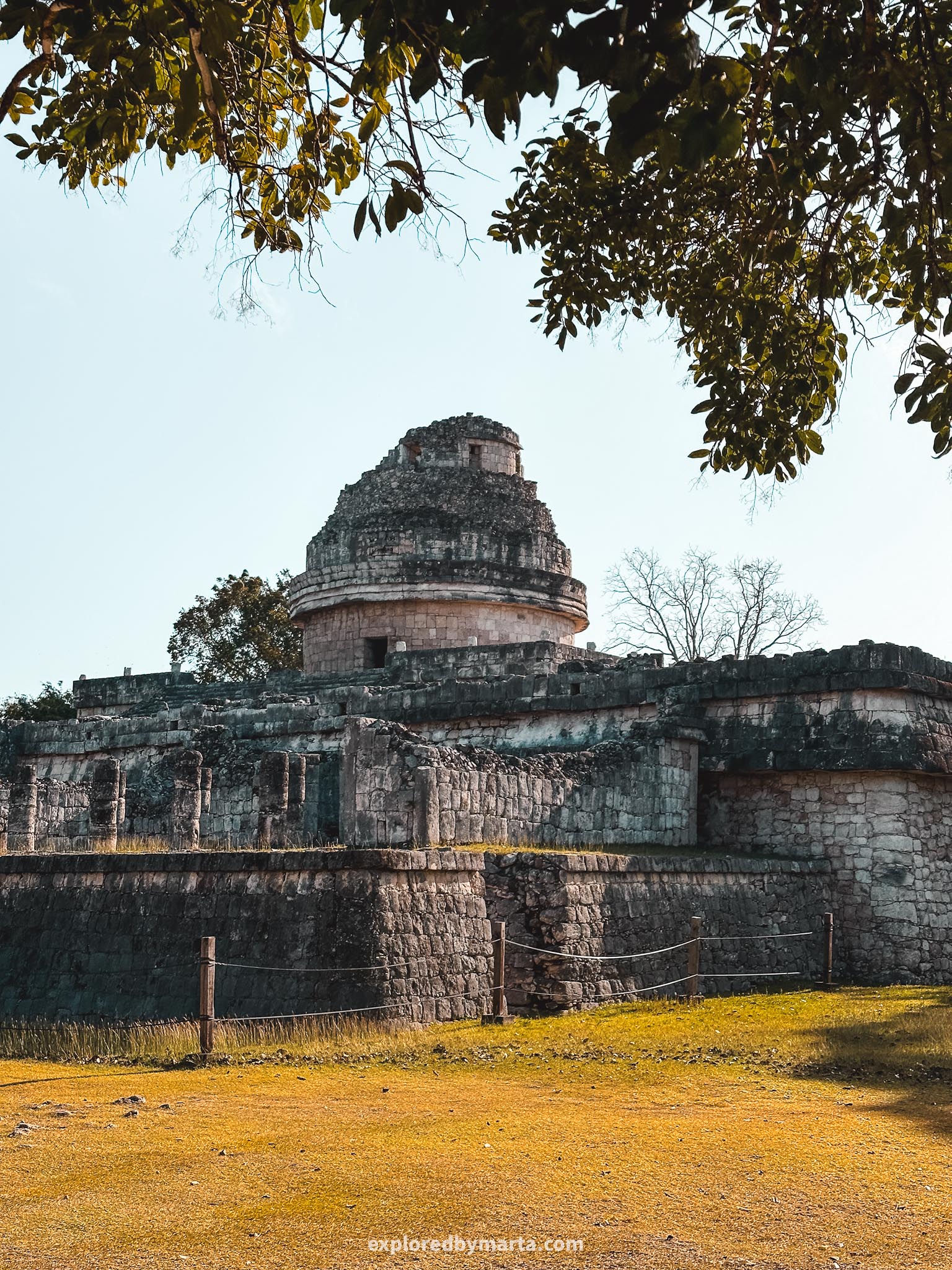
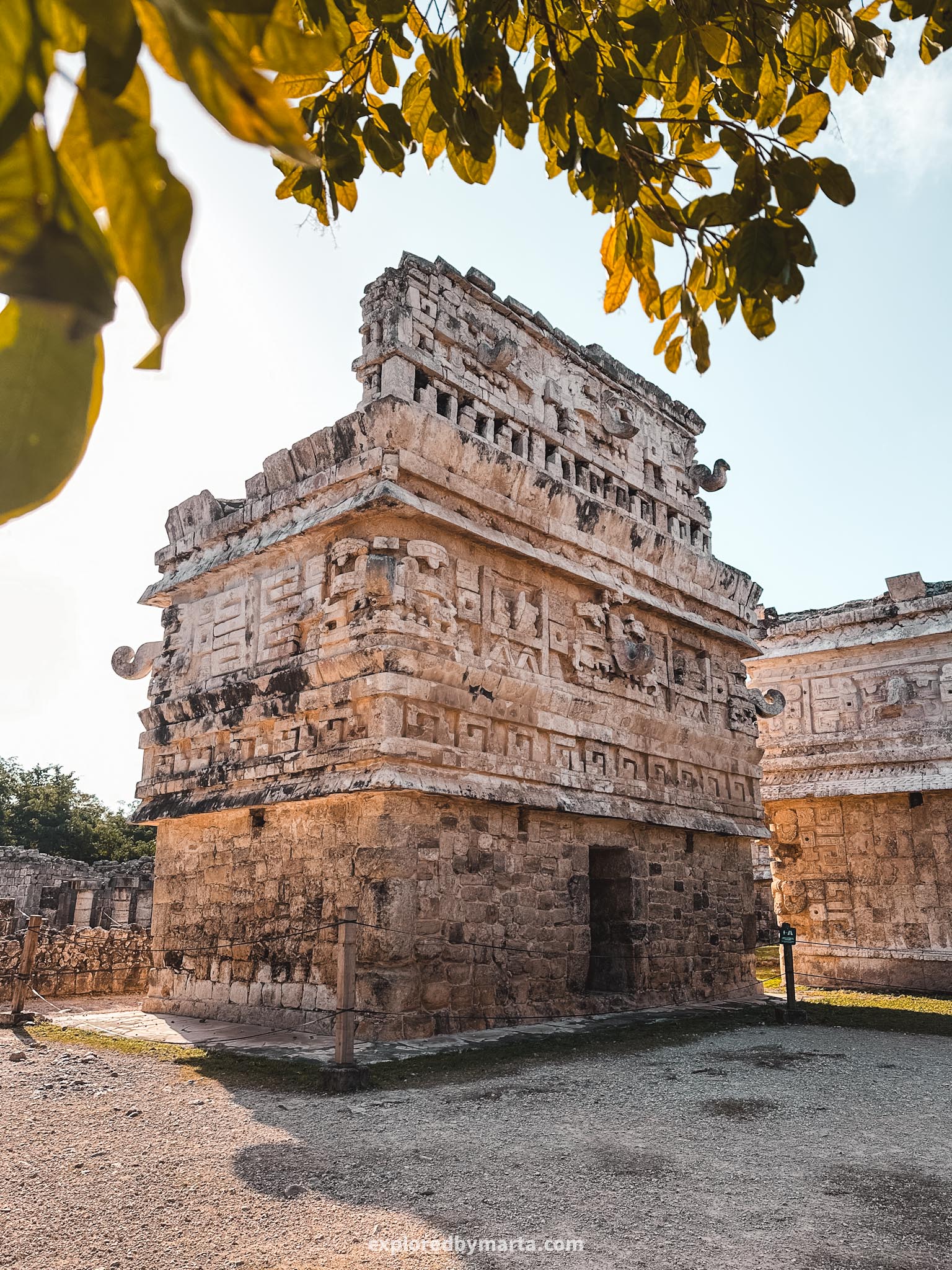
Interestingly, when you clap your hands in front of the staircase of the pyramid, the echo of the sound mimics the voice of the quetzal bird. The same effect happens at another large pyramid in the Yucatán Peninsula – Uxmal.
Besides the Chichen Itza pyramid, other structures nearby include the Temple of the Warriors with a group of a thousand columns around it, the Temple of the Great Tables, the Ballcourt, and the Eagles and Jaguars platform.
A little bit further away you will find one of my favorite buildings – El Caracol (the snail) which is a Mayan observatory dating back to the 10th century. Next to it, there is a building complex – Las Monjas – boasting an extravagant Puuc architectural style.
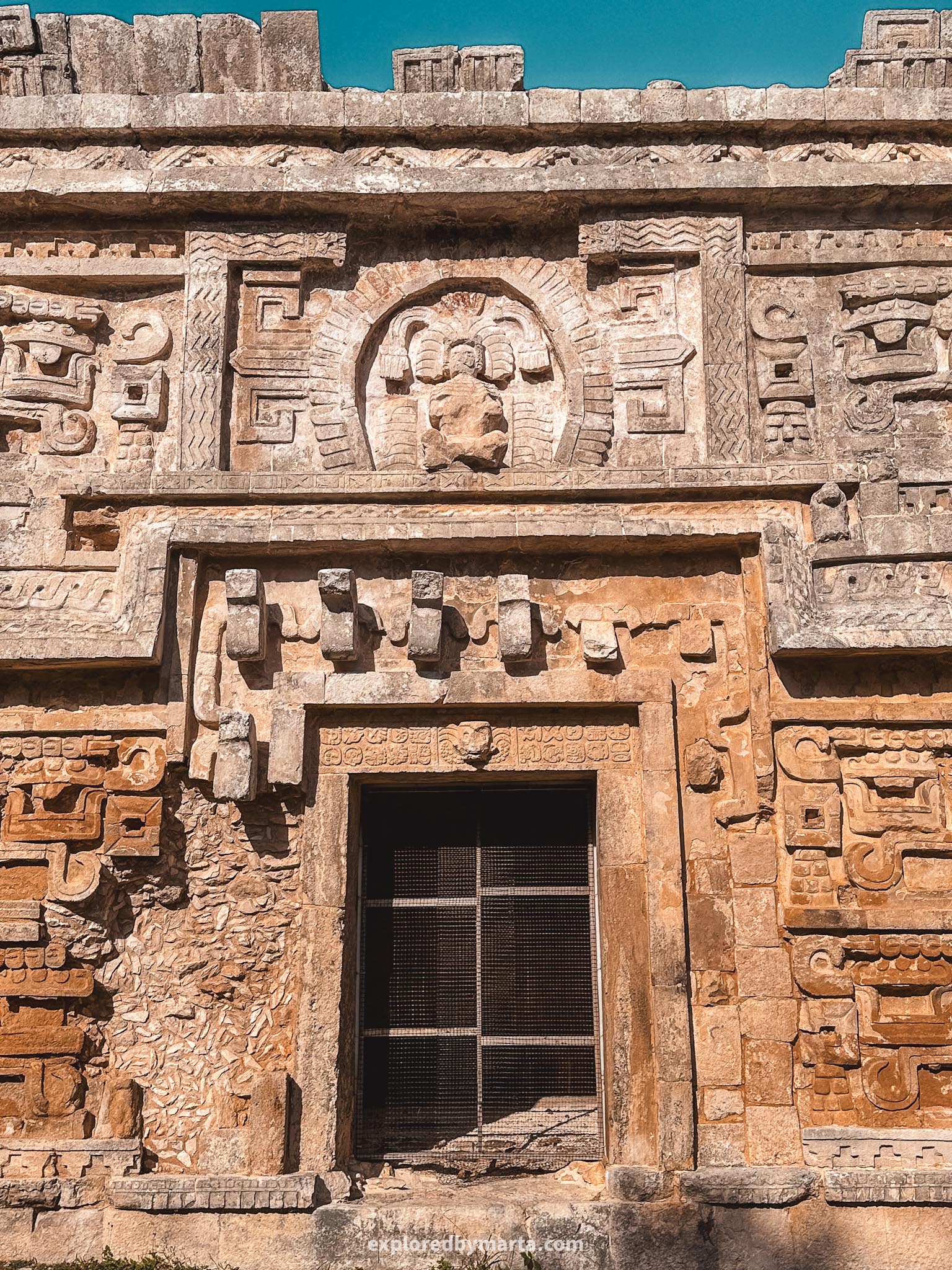
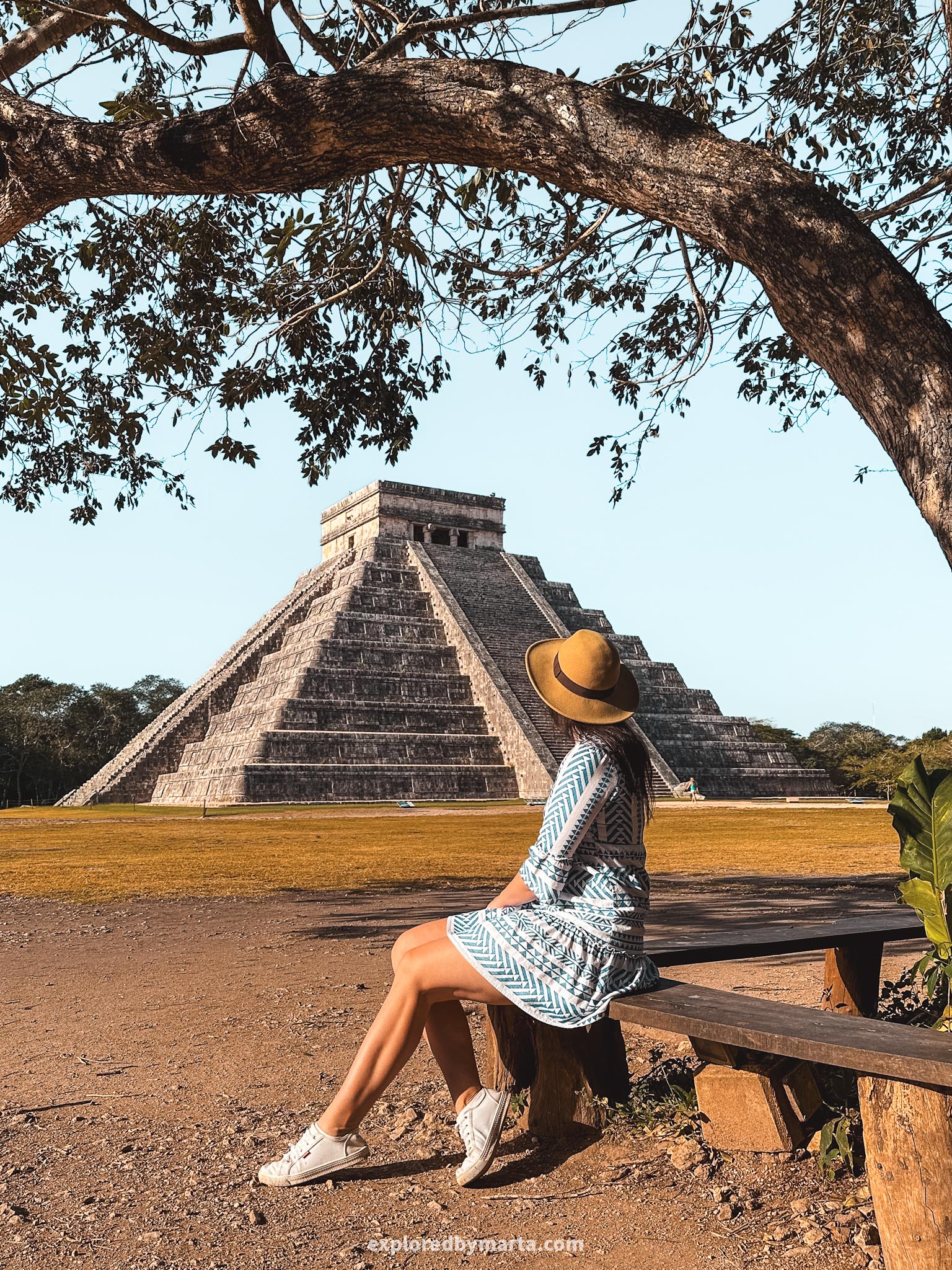
Visiting the Chichen Itza pyramid site is one of the bucket list things to do in the Yucatán Peninsula. It comes with its challenges – the site is a popular destination and always gets crowded so I recommend arriving first thing in the morning.
The site opens at 8 AM, the parking next to the entrance opens at 7:30 AM. We arrived even before that so that we could be amongst the first ones in. At 8 AM there was already a long line of people so it is best if you have a car and can arrive early.
For parking, we paid more than 100 pesos (in cash) but for the entrance fee (by card) we paid more than a staggering 620 pesos each. If you want, you can hire a guide on the spot (extra fee) who will tell you the history and take you all around the site.
Location: Chichén Itzá
10. Ek Balam Archaeological Zone
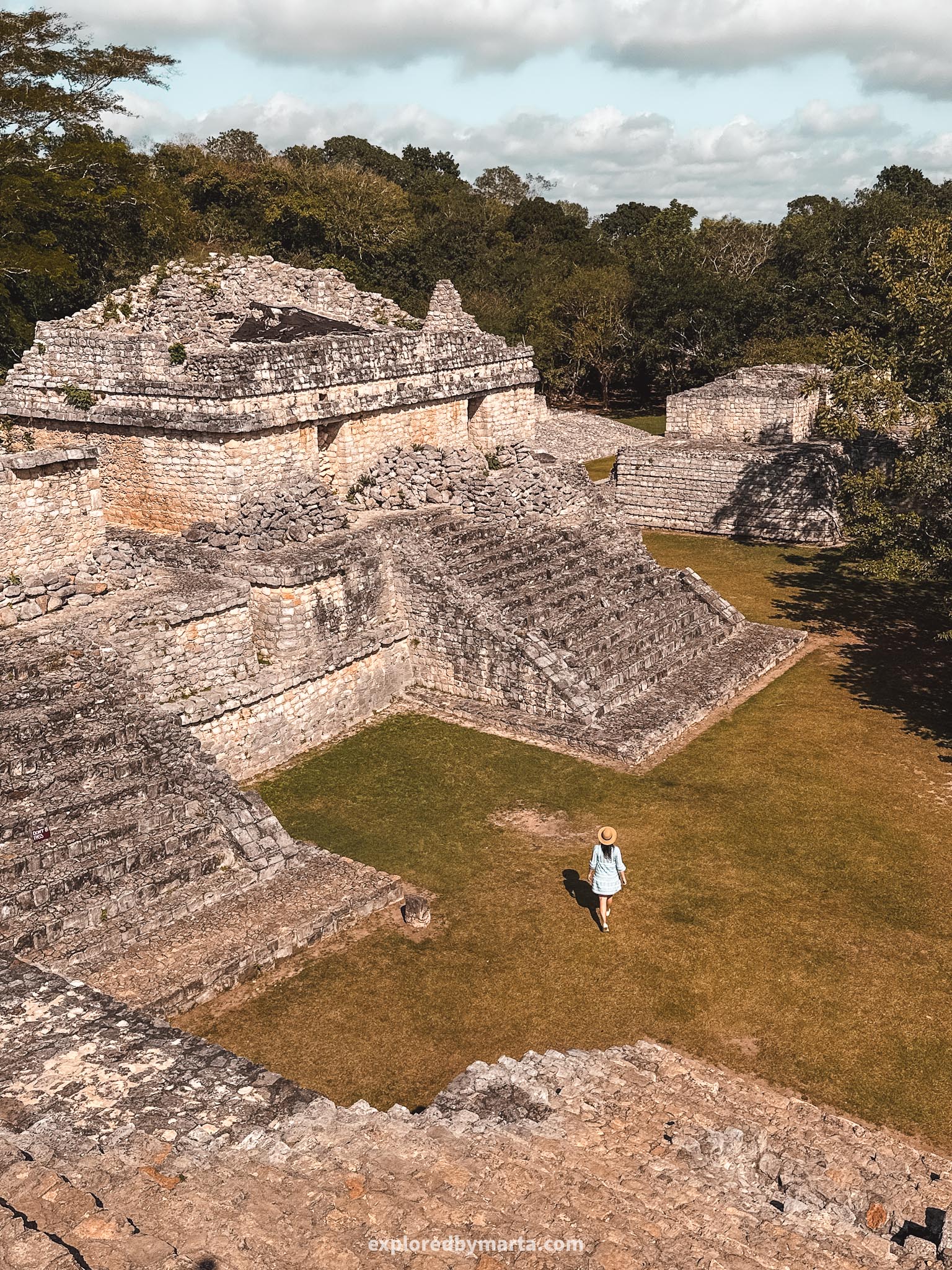
Ek Balam Mayan ruins is one of the most important sites in Mexico’s Yucatán Peninsula. Let’s start with the best part about it – you can climb the Mayan ruins and pyramids! Not all of them but enough to enjoy amazing views over the jungle.
Them allowing us to climb the pyramids kind of offsets the massive entrance fee – we paid 550 pesos each plus 100 pesos for parking. Theoretically, you can pay by card (entrance fees) but because of the bad network, we ended up paying in cash.
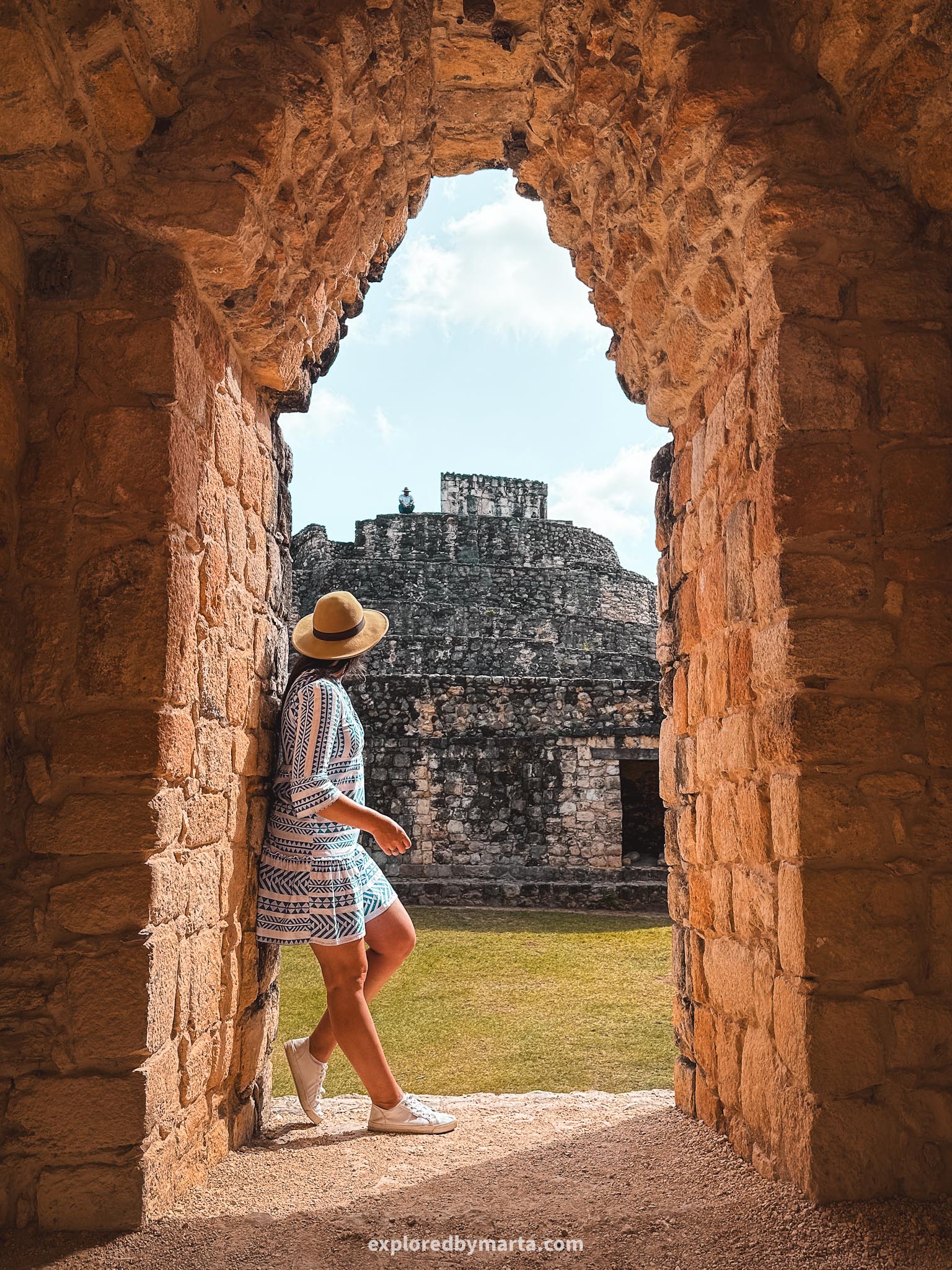

Ek Balam is located a short drive away from Valladolid and a 2-hour drive from Merida. The name Ek Balam translates as the black jaguar or the jaguar star in the Yucatecan Mayan language. That’s why you will see many black jaguar souvenirs on the site.
Ek Balam site features multiple impressive buildings and pyramids. The largest structure in Ek Balam is the Acropolis. It is like a temple pyramid with a staircase in the middle where you can climb up to the top to see incredible views over the jungle.


To both sides of the central staircase, you can find entrances to temples decorated with stone carvings and mosaics. They are believed to be burial places for Ek Balam rulers. One of the entrances depicts an open mouth of a jaguar (photo above).
Other notable structures in Ek Balam include the Oval Palace (you can climb it), the Entrance Arch, The Twins, or two lookalike temples, as well as the Ballcourt. Historically, Ek Balam was a booming city during the 8th and 9th centuries.

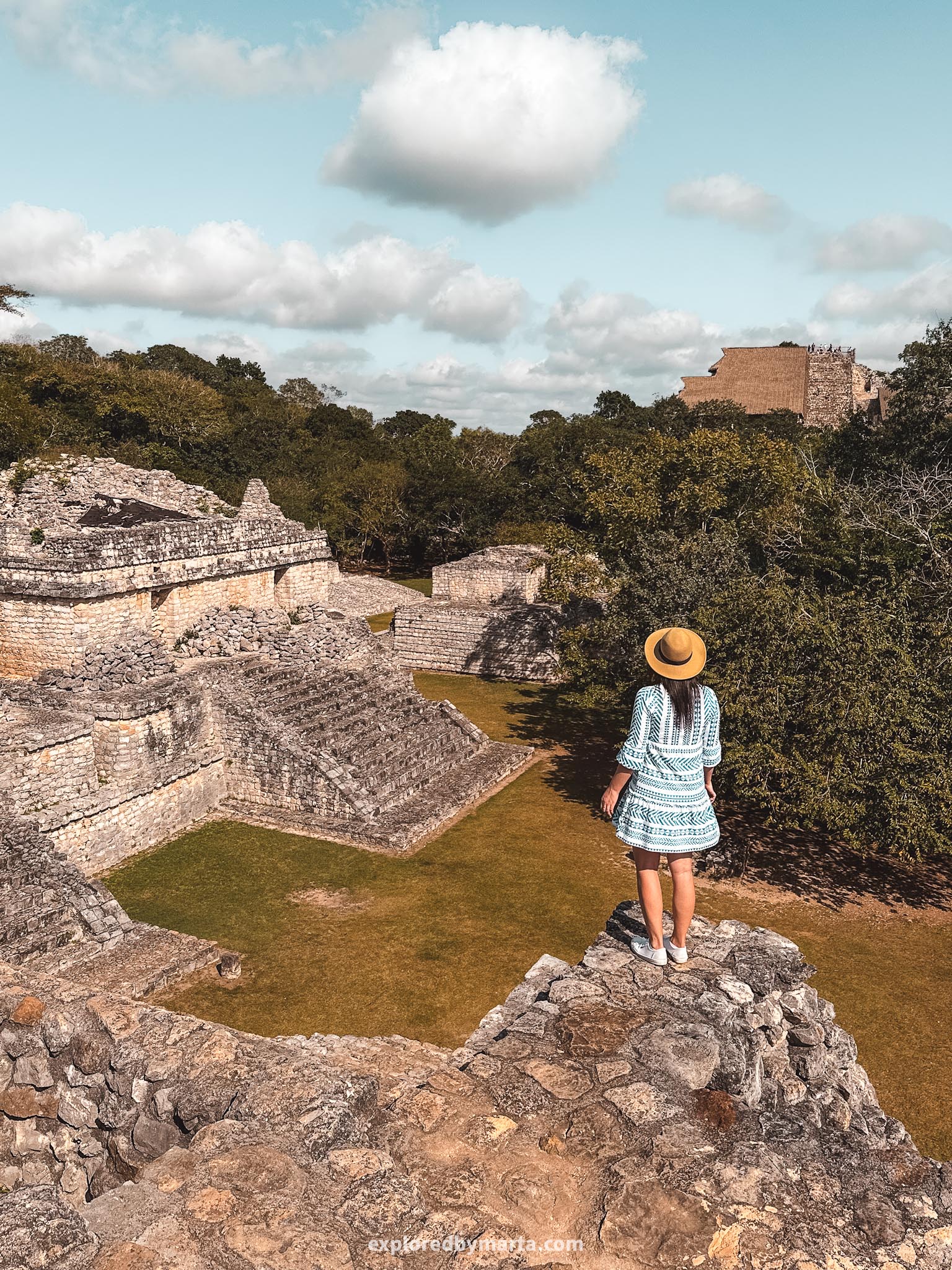
Overall I liked exploring Ek Balam. These weren’t my favorite Mayan ruins mostly because of the inflated entrance fee but I also don’t regret coming here. It is always cool to explore how the Mayan civilization lived before the Spanish found them.
Ek Balam is amongst the last larger Mayan archaeological sites where you are allowed to climb the pyramids. Other larger sites where you can get panoramic views over the jungle are to the South towards Bacalar (like the Dzibanché Archaeological Zone).
Location: Archaeological Zone of Ek Balam
11. The rainbow-colored city – Valladolid
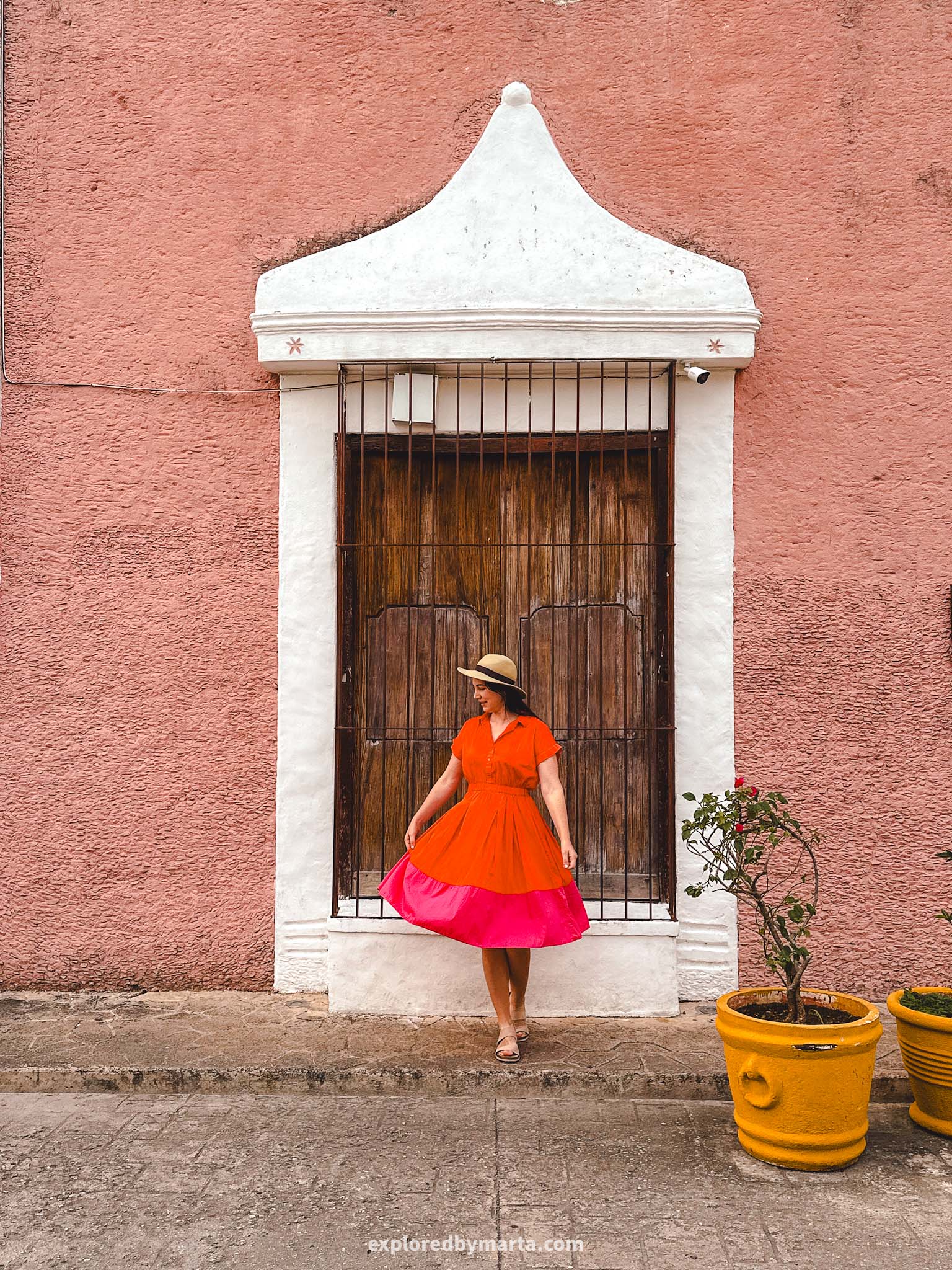
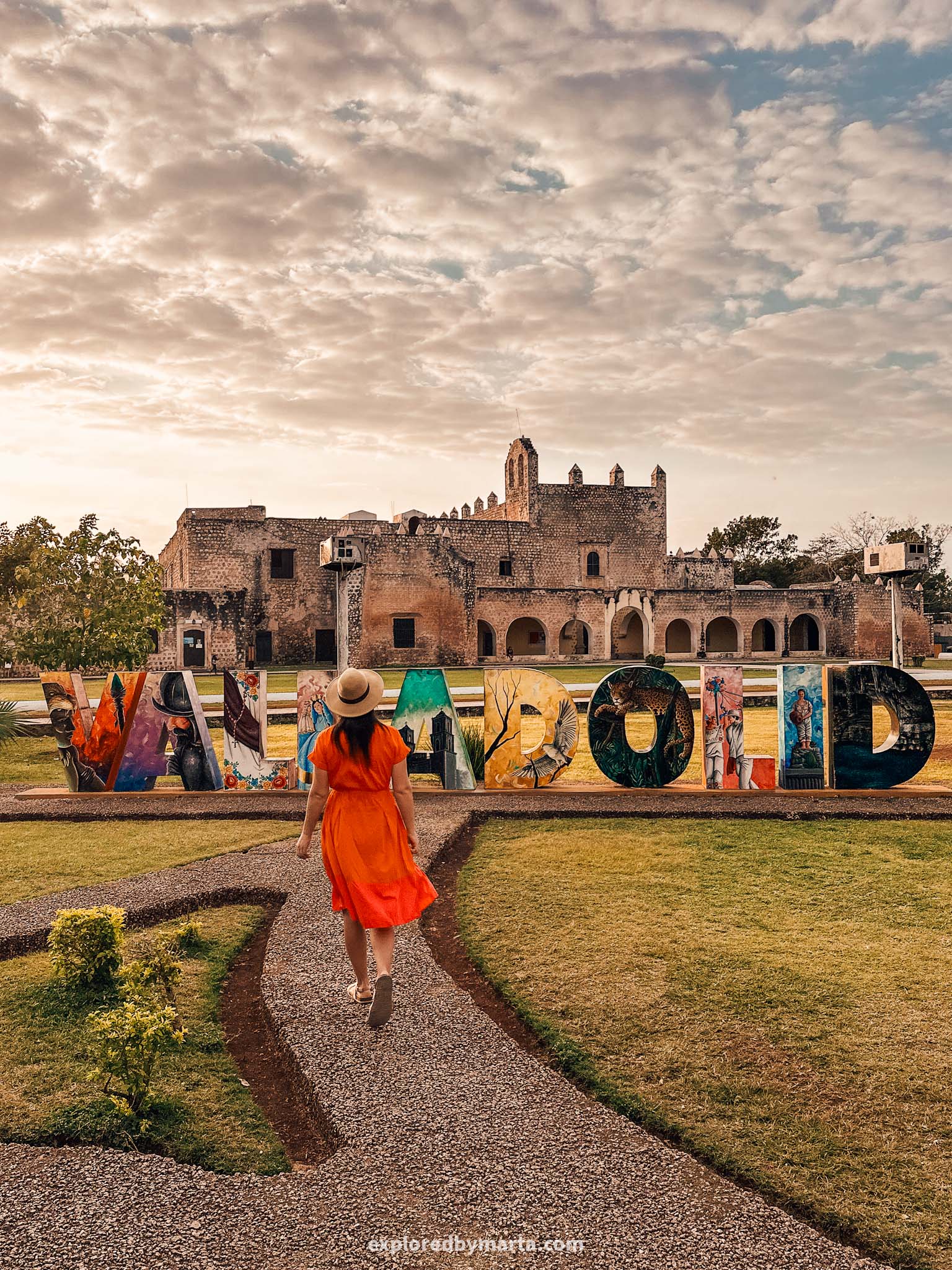
Another magical town (Pueblo Magico) to stop by just a day trip away from Merida is Valladolid. This picturesque city really surprised us with its rainbow-colored streets and majestic colonial architecture!
Valladolid is a colonial town and was founded and built by the Spanish conquistadors. The city now sits in a place where there once was a Mayan city. Many historical buildings were built using stones from nearby Mayan sites including Chichen Itza.
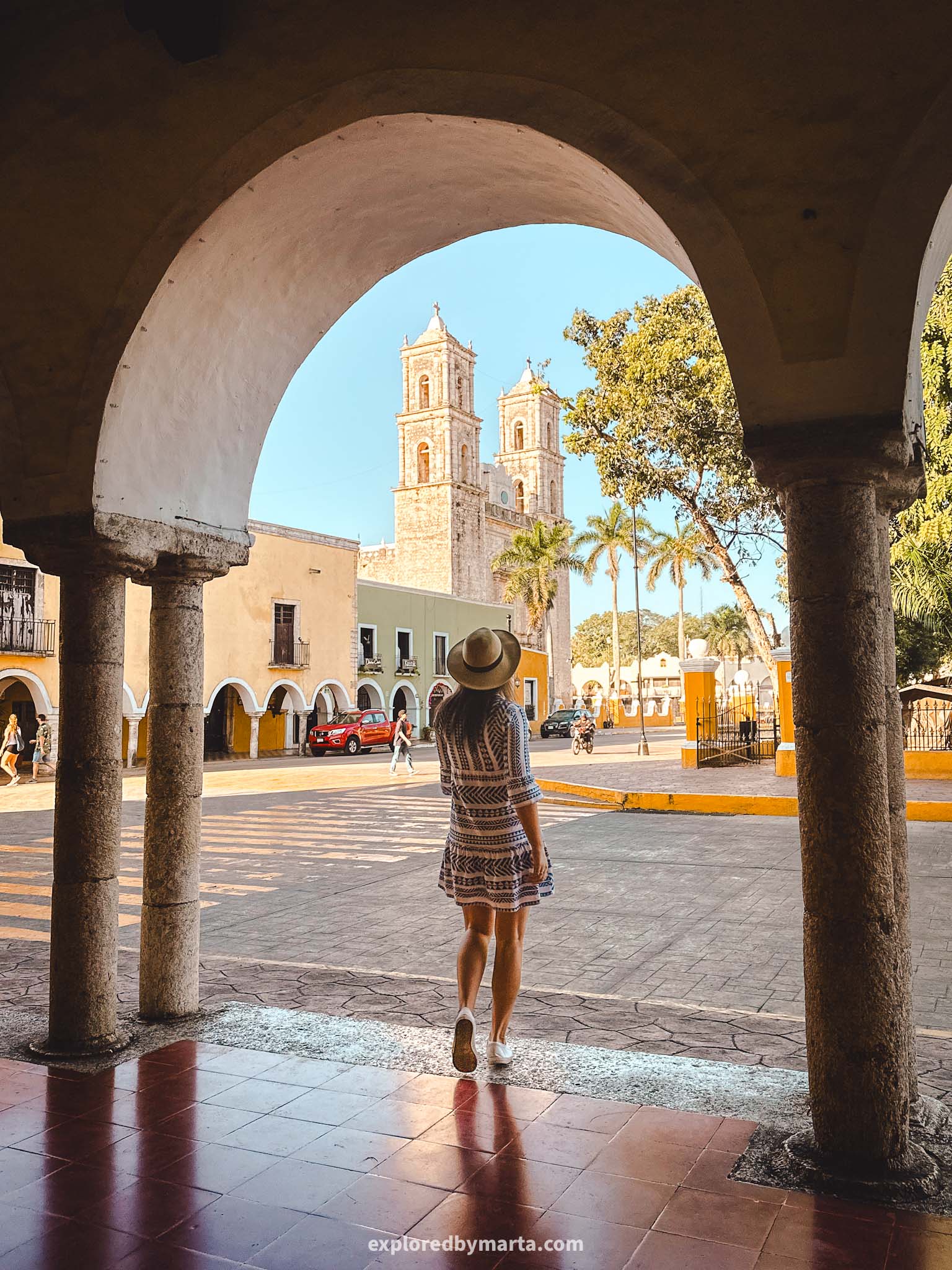
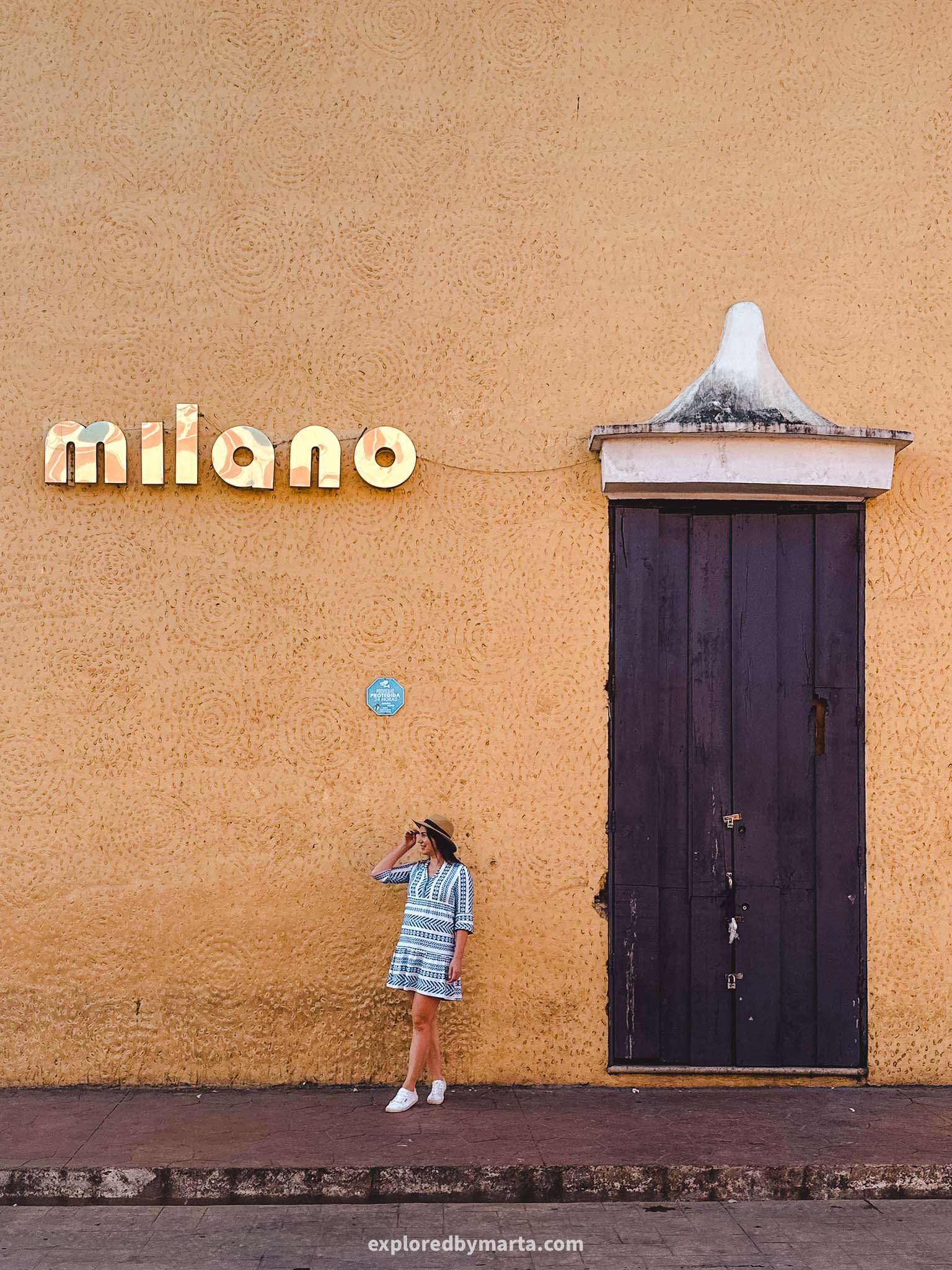
Thanks to its proximity to the famous Chichen Itza ruins, Valladolid has grown from just a stopping point along the way to the world-famous Mayan pyramid to an established tourist destination in the Yucatan Peninsula.
We actually spent three weeks in Valladolid exploring everything this city and its surroundings had to offer. Besides such famous landmarks as Chichen Itza or Ek Balam archaeological sites, there are many other things to do in Valladolid.
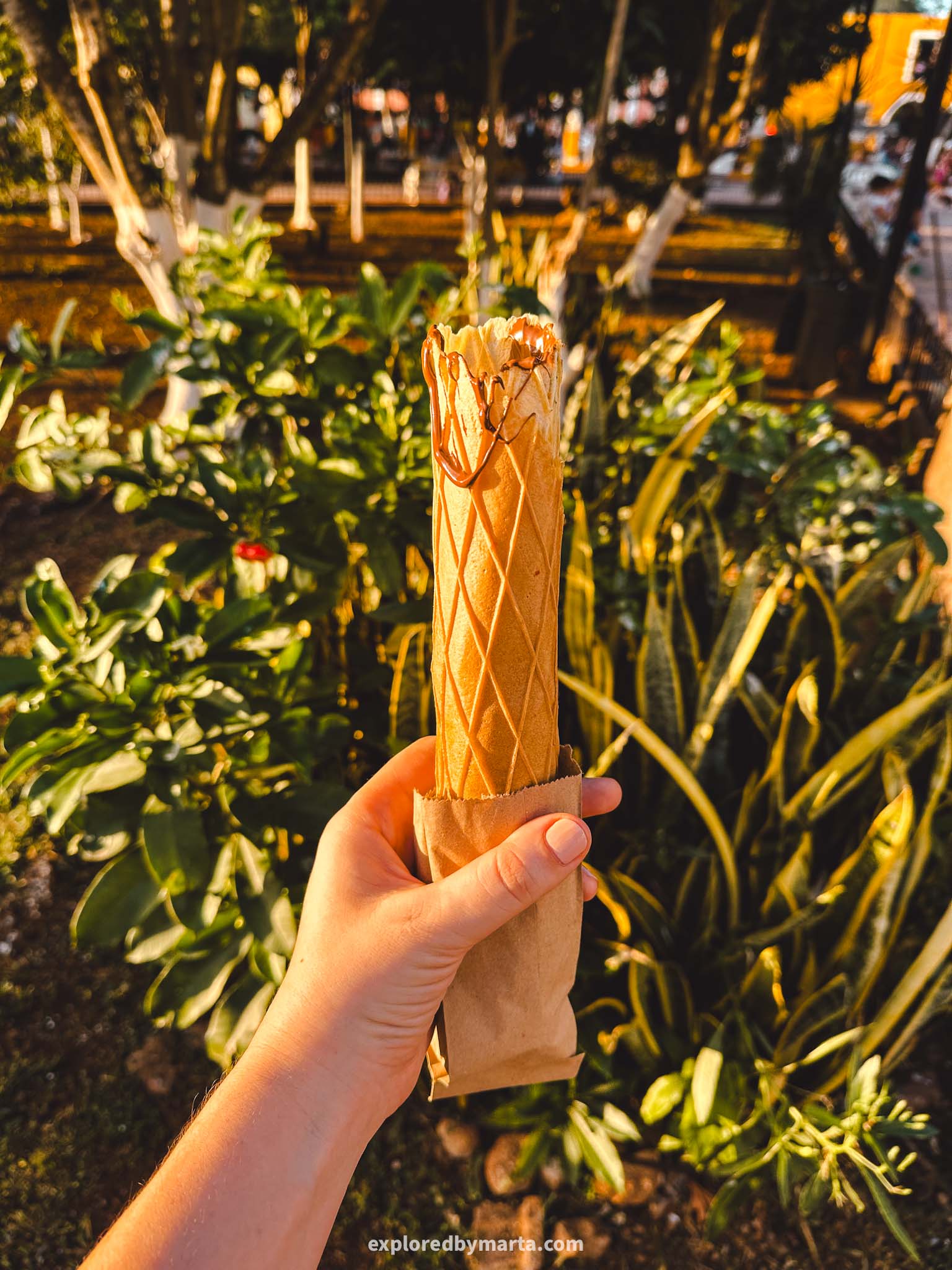

A must-visit place in Valladolid is Parque Principal – we went to the main square numerous times to grab those tasty marquesitas, churros, and gelatos, and watch Mayan dancers performing while juggling dish trays on their heads!
Right next to the main square, there is one building that stands out – Templo de San Servacio or Church of San Servacio. It is a colonial church with two bell towers founded in the 16th century along with the whole city but was remodeled in the 18th century.
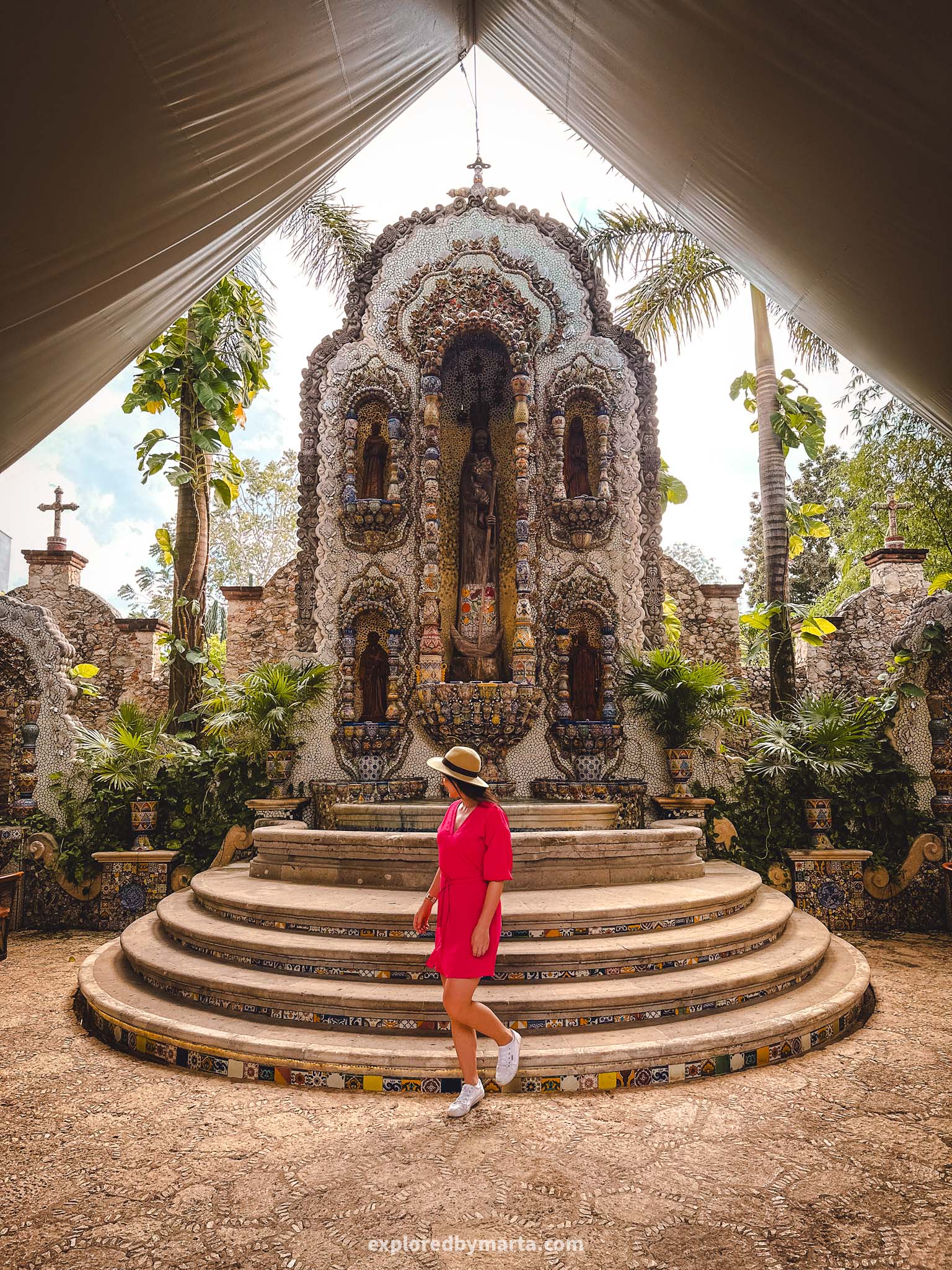

You will also want to walk the colorful Calzada de los Frailes street – one of the most colorful streets and iconic Instagram spots in Valladolid! The street goes from the historic center to another major landmark – the Convent of San Bernardino de Siena.
The convent is one of the oldest and most emblematic buildings in Valladolid, and is definitely worth visiting! It was built and founded in the middle of the 16th century by the Franciscan order who arrived at Yucatan after the Spanish conquest.


But did you know that there is a cenote right in the heart of Valladolid city? Yep! Cenote Zaci is a gorgeous large cenote located in the very center of Valladolid just a short walk from the main plaza. Like really, just two blocks away! Do check it out!
You will also want to try some tasty food. Trying the local legend – longaniza de Valladolid – is a must. But you might also try some tasty and juicy tacos – I recommend stopping by El Tigrillo street stand or Yakunaj Cocina Mexicana for a nicer meal.
Location: Parque Principal de Valladolid
12. The famous cenotes near Valladolid!
If there is one more thing besides Chichen Itza that Valladolid is famous for then those are cenotes! I have visited what seems to be around 30 or more cenotes in the Yucatan Peninsula and no other place can compare to the beautiful cenotes near Valladolid!
When I was doing research it was hard to even choose 10 cenotes because there were a lot more that looked beautiful but you can’t visit them all, can you? So here are five cenotes that are the most unique, the most famous, and the most beautiful ones.
1. Cenote Suytun
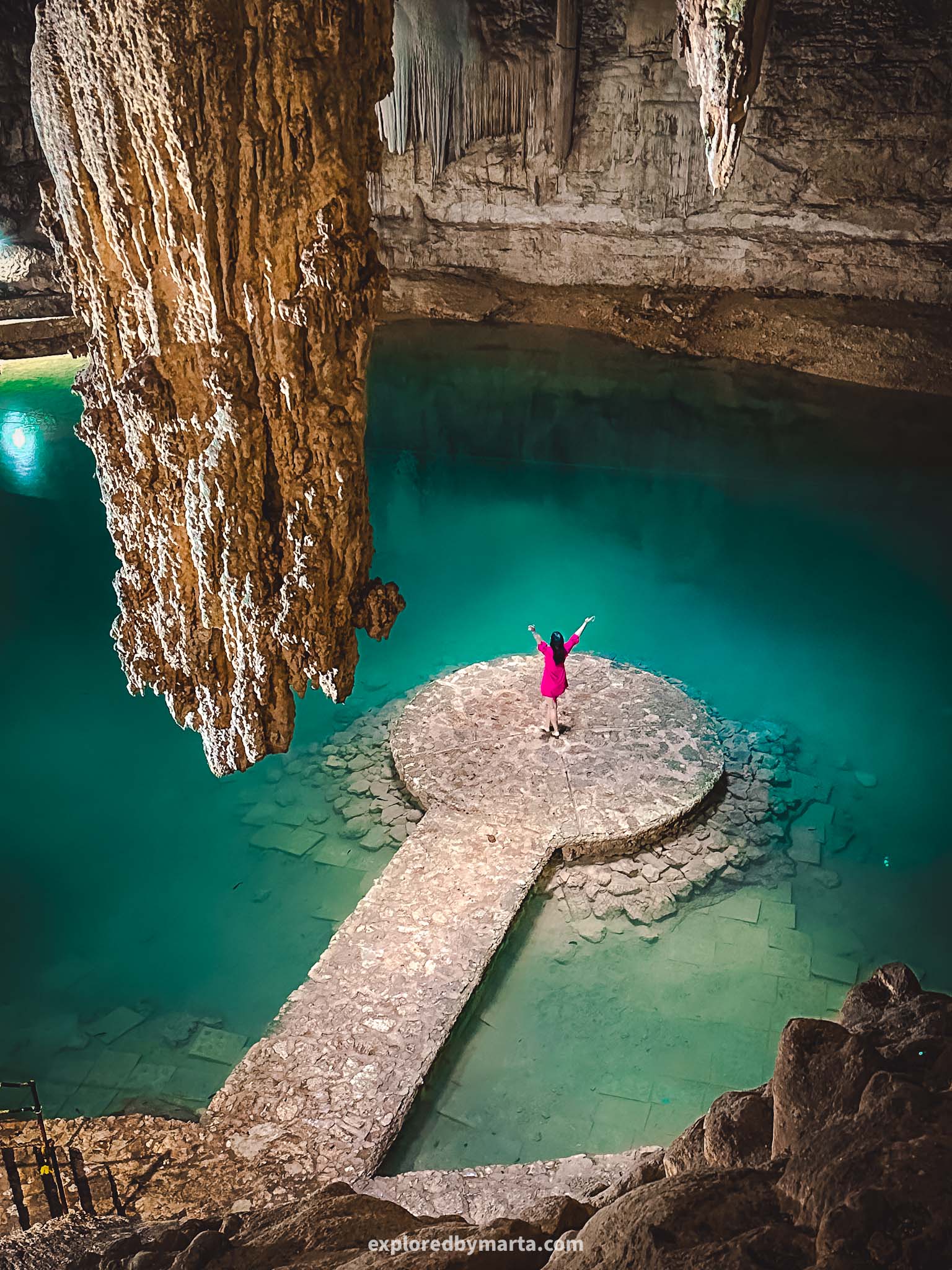
Located just a 10-minute drive from the city, Cenote Suytun is one of the most iconic cenotes near Valladolid. Nowhere else you will find a stone pathway leading into the middle of a large underground cenote with a hole in the ceiling right above it.
If you time your visit right, there will be a light beam shining through the hole and illuminating the whole place. Or maybe it will shine right onto the stone platform. We arrived in the morning so we did not see the light beam.
Tip! We visited this cenote on March 9th and the stone platform was dry. However, the water level can be higher or completely cover the platform after rainy periods. The best way to make sure how it looks is by checking recent reviews on Google Maps.
Location: Cenote Suytun
2. Cenote Ik Kil
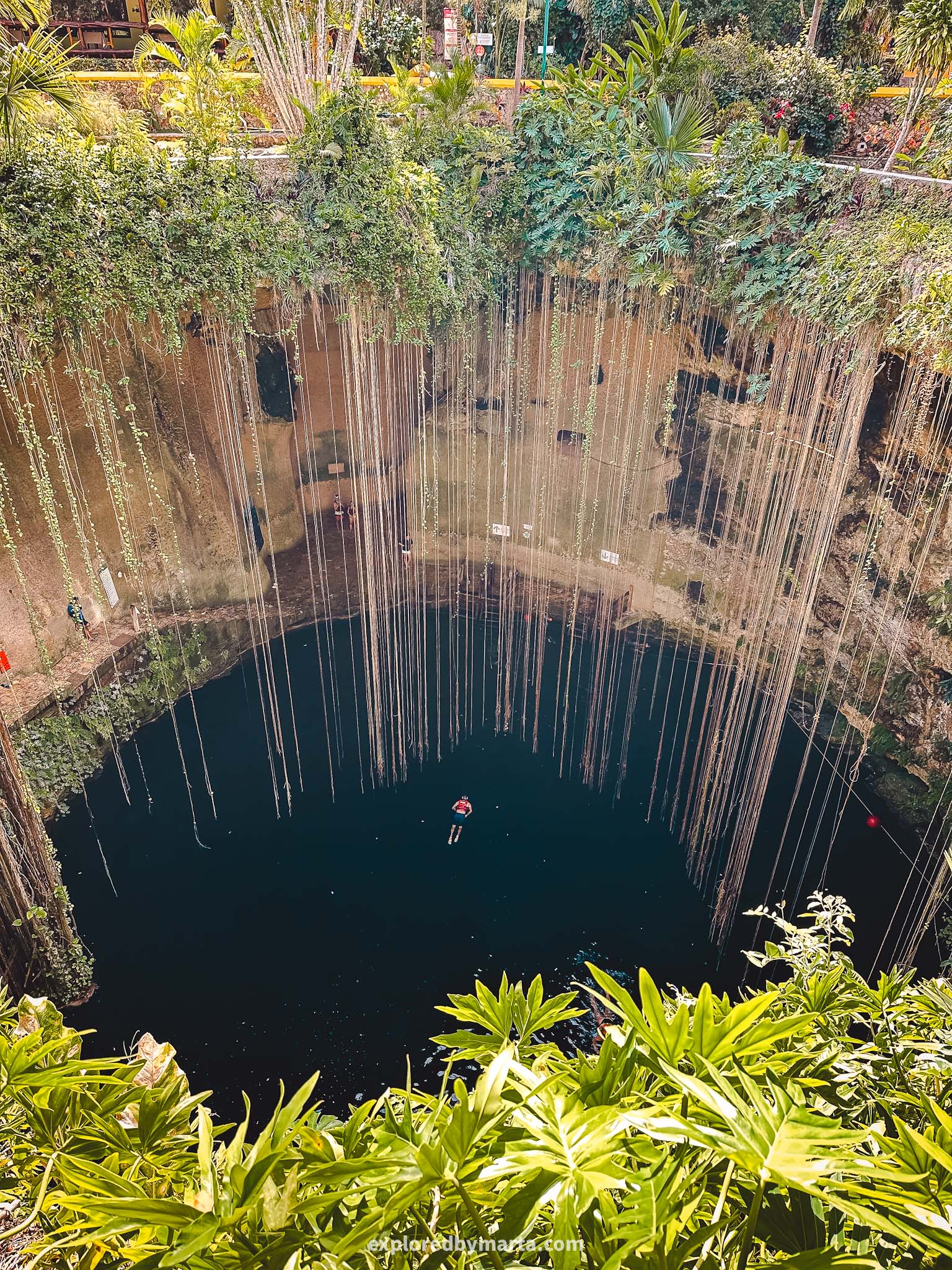
Cenote Ik Kil is an oasis in the jungle! This cylindrical cenote is one of the most beautiful cenotes near Valladolid, Mexico, and also one of the most visited places in the area. Especially thanks to its proximity to the famous Chichen Itza ruins.
The cenote stands out with its circular shape and 26-meter walls covered by hanging plants and tree roots. The cenote itself is 40 meters deep and served as a place for sacrifices for ancient Mayans a long time ago. It is simply gorgeous!
Location: Cenote Ik Kil
3. Cenote Xcanahaltun
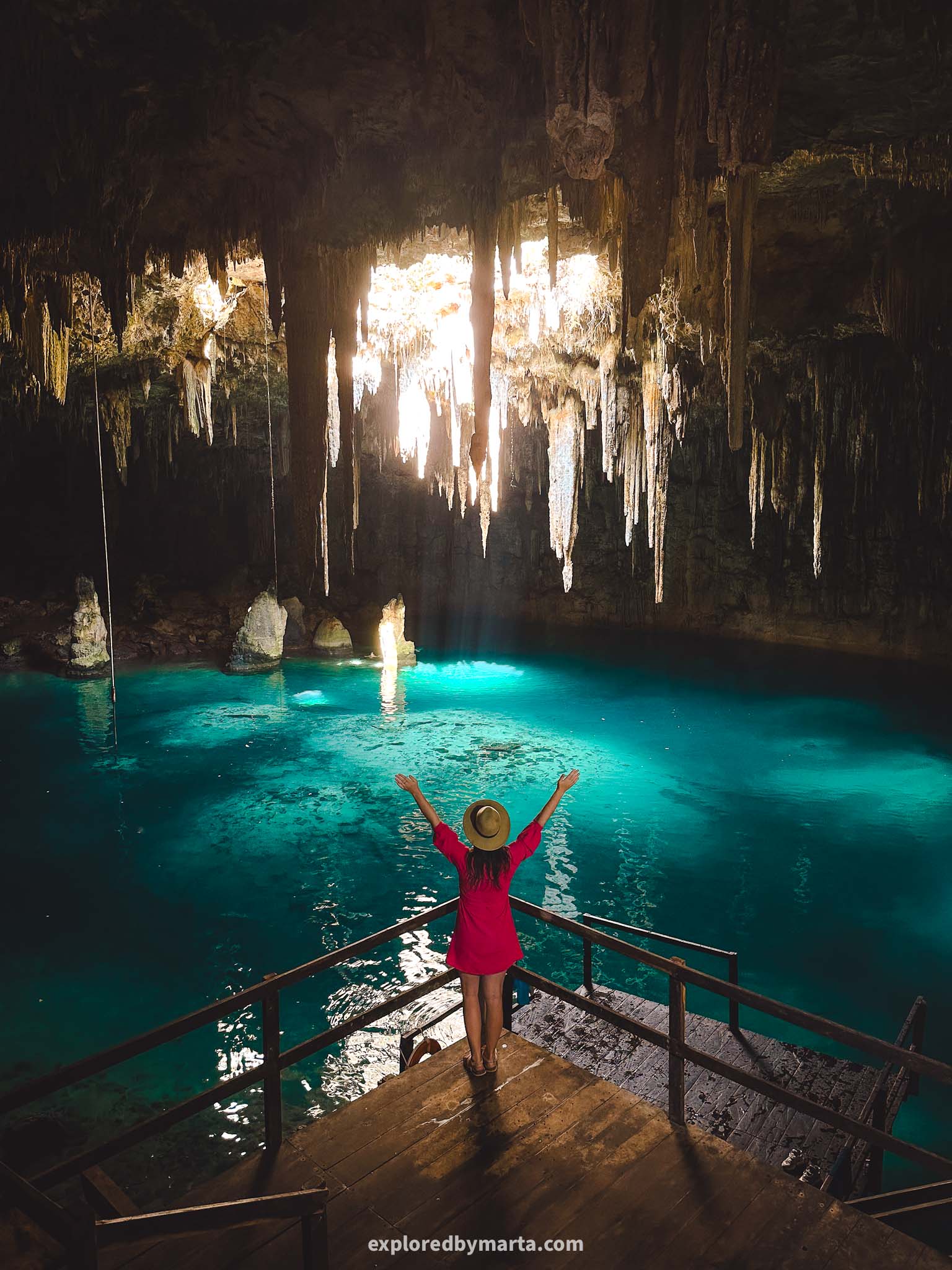
I didn’t expect much from Cenote Xcanahaltun as I had already visited many stunning cenotes but as soon as I entered the majestic cave I fell in love and this place immediately became one of my favorite places in Yucatán!
The glorious cathedral-sized cenote is actually like a large underground lake with a small hole in the ceiling that lets natural light inside the cavern. The ceiling is adorned with icicle-type stalactites and looks absolutely spectacular.
You can enter the crystal clear water from a wooden platform located on one side of the ‘lake’. The entrance to the cenote was 230 pesos and for an extra 100 pesos we were offered to rent a kayak. I will never forget this incredible place!
Location: Cenote Xcanahaltun
4. Cenote Samaal
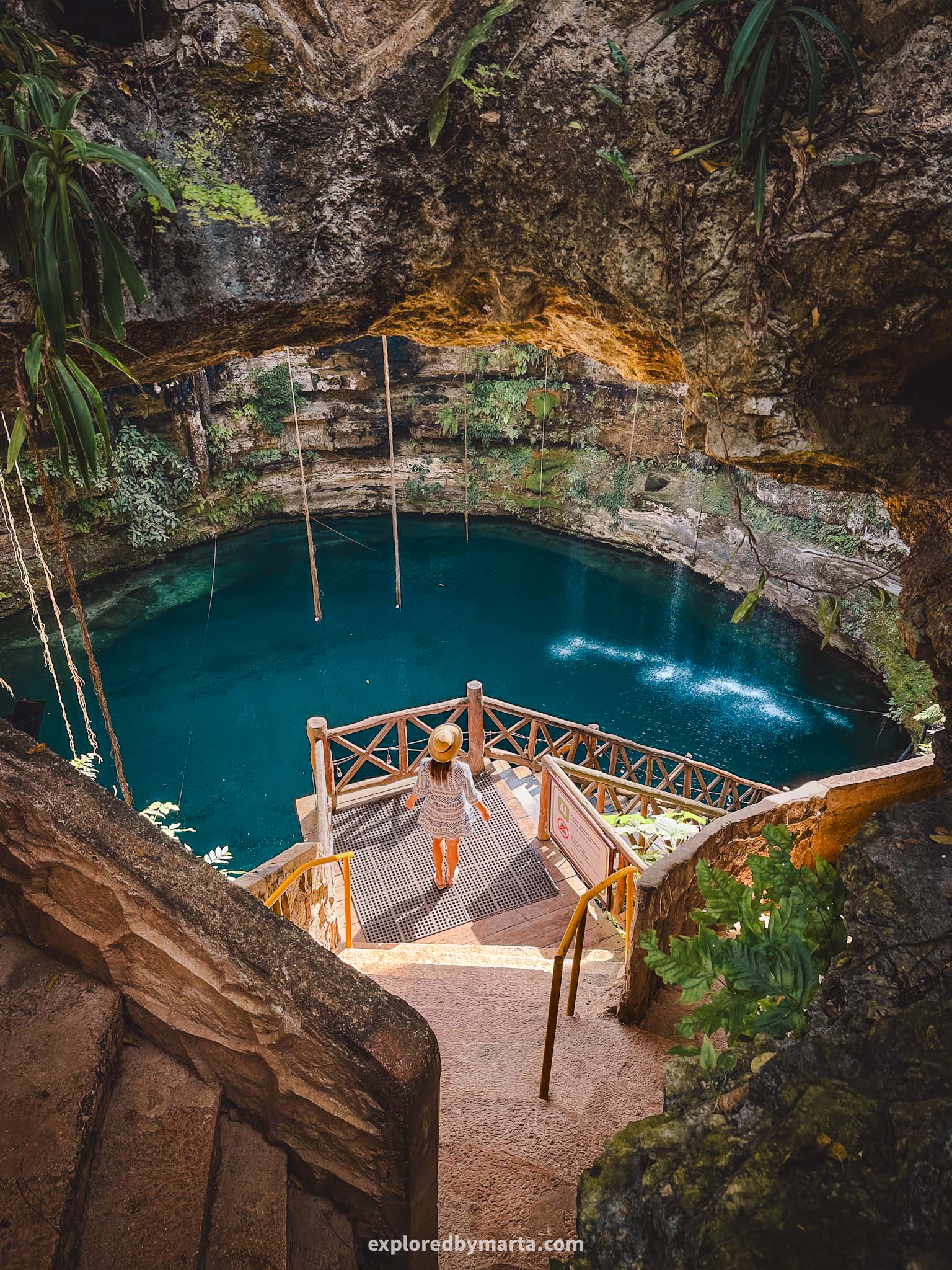
Located just a 10-minute drive from the center of Valladolid is Cenote Samaal – one of those gorgeous semi-open cylindrical cenotes with crystal-clear cool water and even a waterfall coming down from the top of the walls.
Cenote Samaal is located within the grounds of Hacienda Selva Maya – a building complex of a rural estate that includes souvenir stores, a buffet-type restaurant, tequila tasting, and even a zip line. We paid 200 pesos per person for the entrance.
Location: Cenote Saamal
5. Cenote Choj Ha
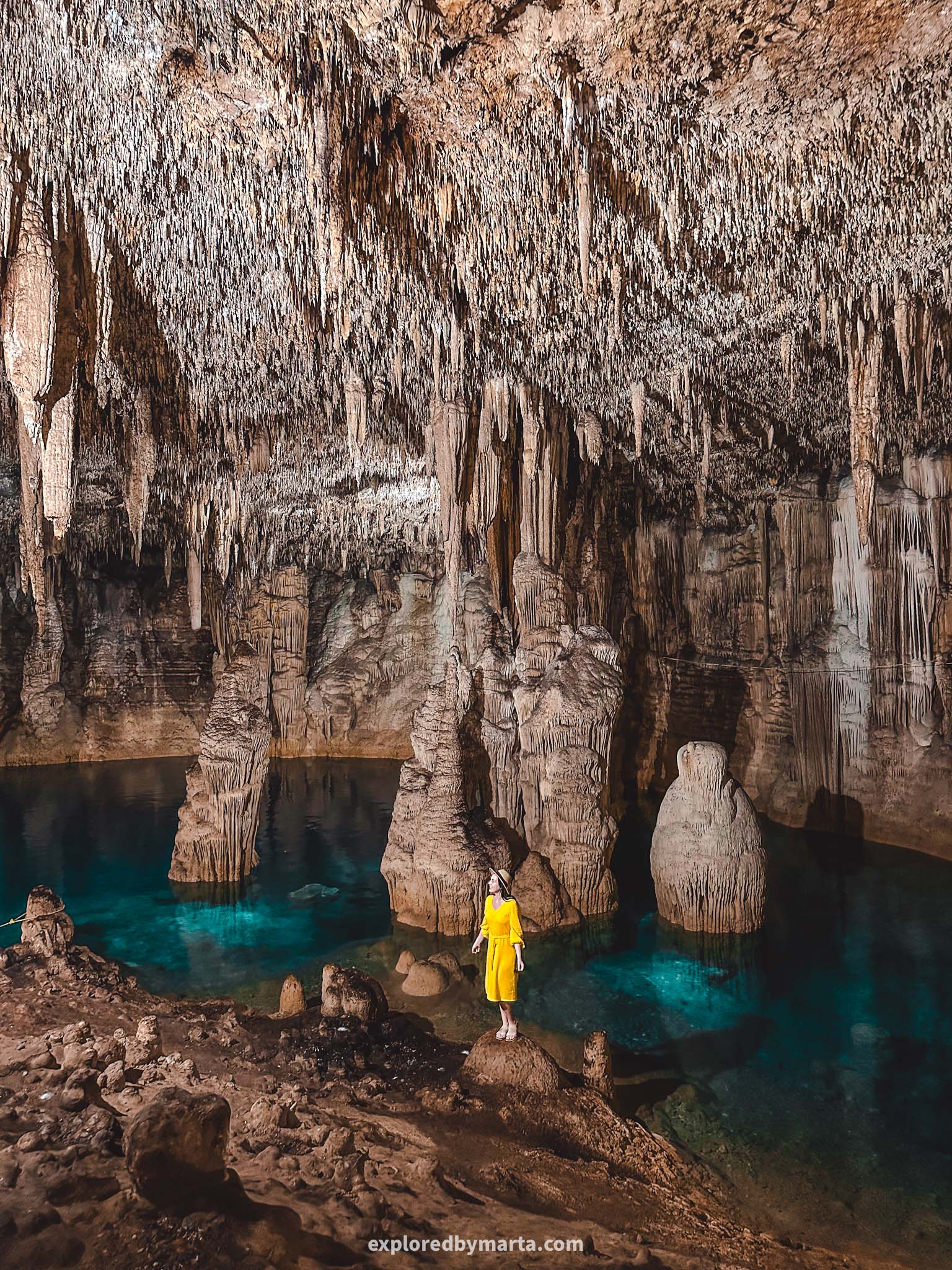
Cenote Choj Ha is Yucatan’s hidden gem! It is a magical place hidden deep in the jungle about a 1-hour drive from Valladolid. This truly is one of the most beautiful places I have visited in the Yucatán Peninsula, Mexico!
Imagine randomly walking around the jungle and finding a small hole in the ground… Once you enter that small hole you are met with a magical discovery – an underground cave the size of a medieval cathedral!
The cave is filled with long sharp icicles – stalactites – and bulky short poles – stalagmites – all floating in and above crystal-clear water. We have visited many cenotes with stalagmites and stalactites but not one cenote could compete with this place!
Location: Cenote Choj Ha
13. Coba Archaeological Zone
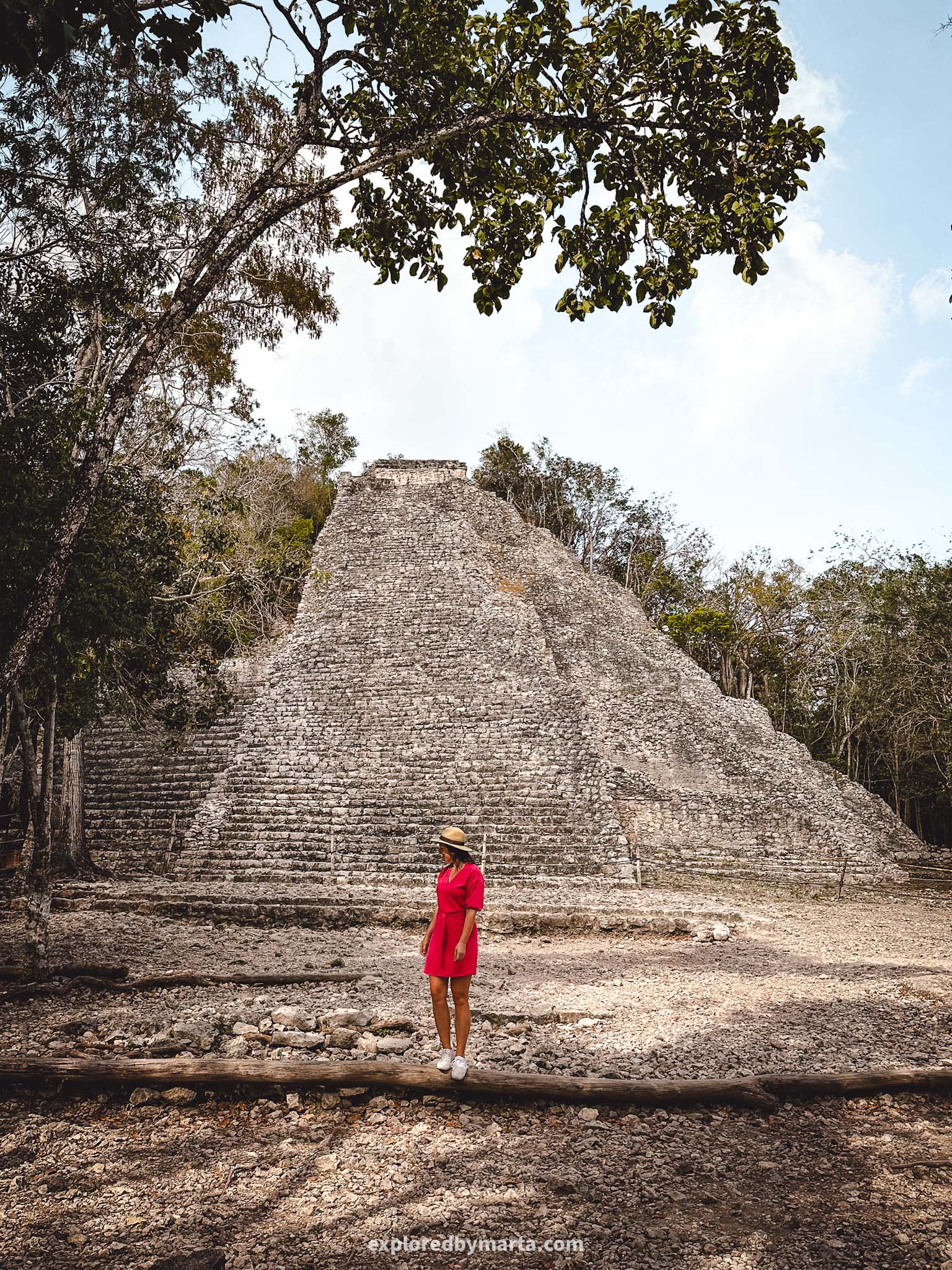
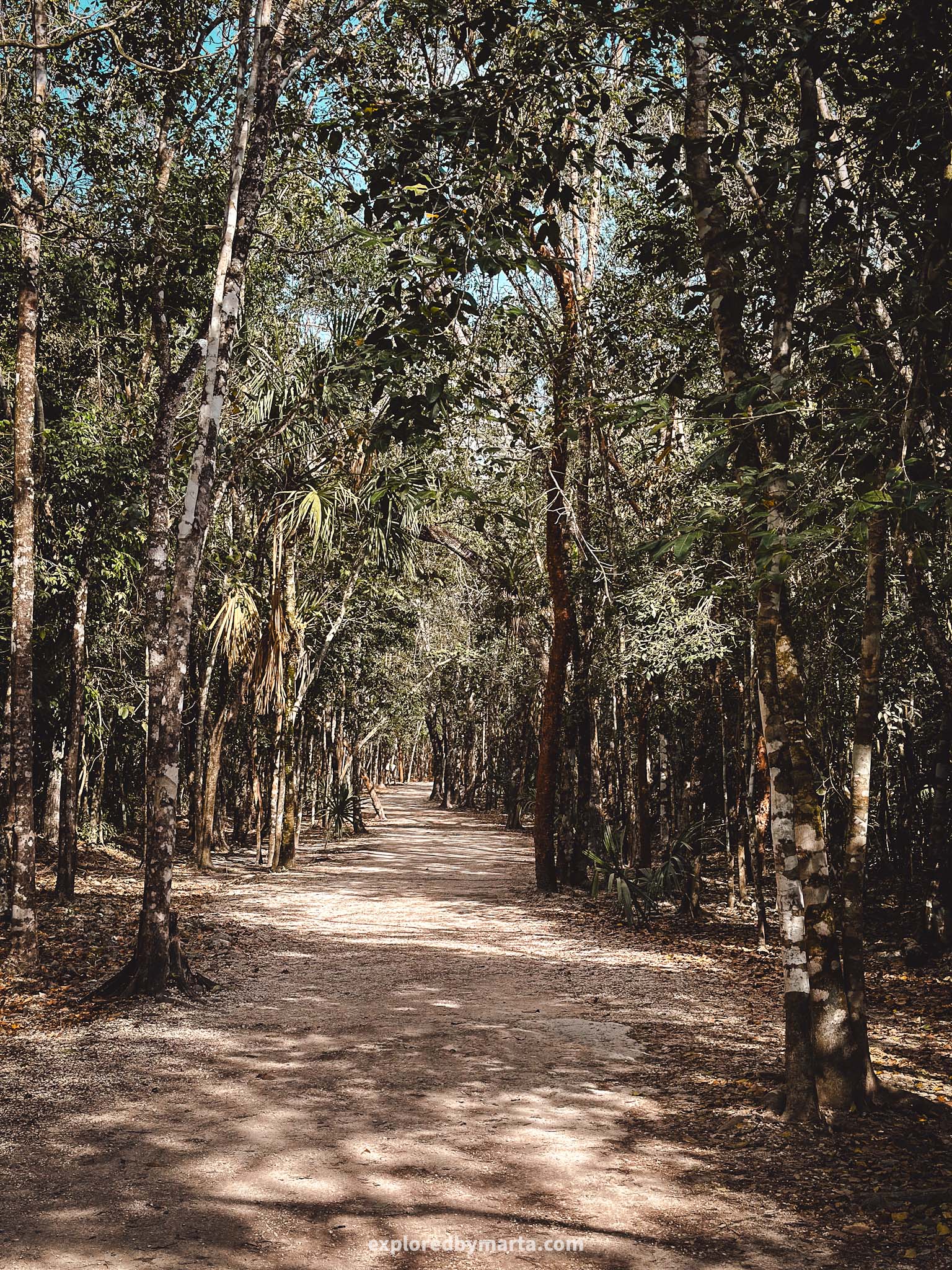
Coba Archaeological Zone is a site of Mayan ruins that once were one of the most important ancient Mayan cities in the area. The archaeological site boasts multiple stone pyramids, temples, and other important structures.
Coba Archaeological Zone is located a 2h 30min drive from Merida. It is probably better accessible from Tulum or Valladolid but nevertheless, it is an important landmark in the Yucatan Peninsula and worth a visit regardless of where you are coming from.


We actually visited Coba during our stay in Tulum. It is one of the most popular Mayan sites around the Yucatan Peninsula so we arrived one hour before closing time and had absolutely zero crowds and only a few people around.
Entrance to the site is paid in different parts – parking and two different entrance fees, so don’t forget to bring some cash with you. All the buildings are pretty much scattered around the jungle so you can rent a bike there (we walked, it was ~5 kilometers).
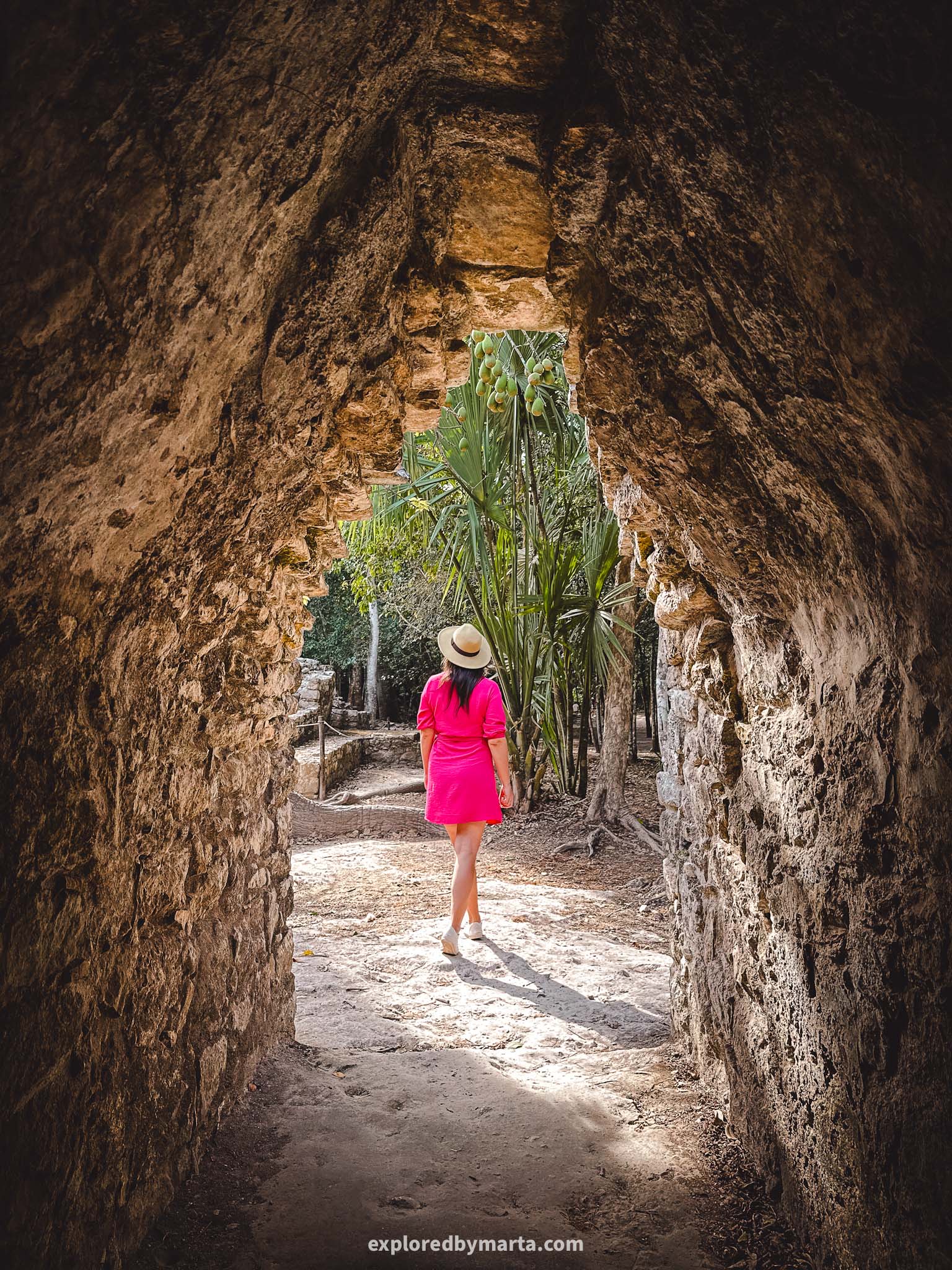
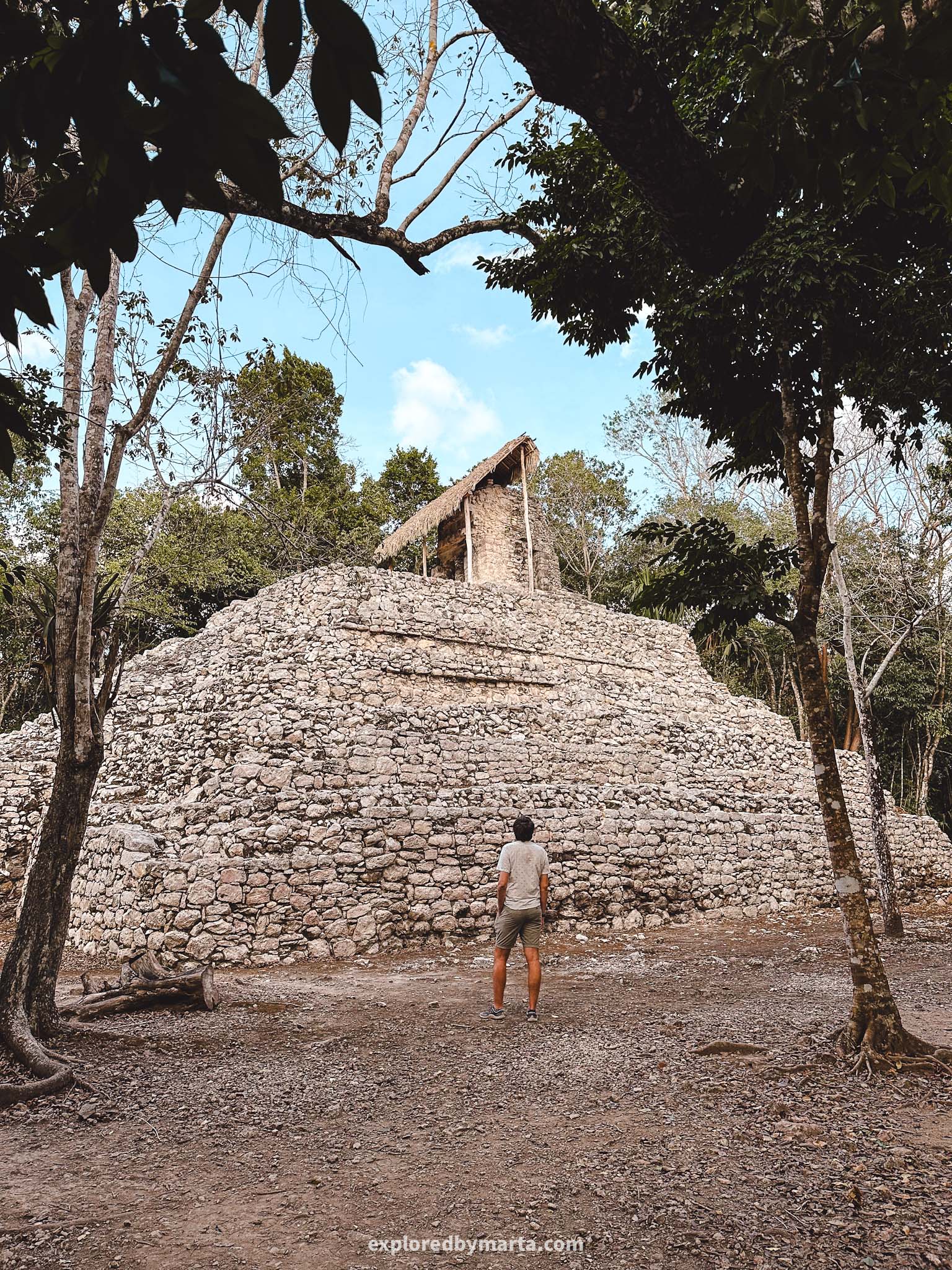
Although not long ago it was possible to climb the pyramid in Coba, it is no longer allowed. But the place still has its charm and I wasn’t too sad about it. It was fun walking the narrow paths through the jungle and finding Mayan ruins along the way!
One of the most impressive buildings is the temple pyramid Nohoch Mul. At 42 meters (137 feet) it is one of the highest Mayan structures in the Yucatán Peninsula. Only Calakmul in the State of Campeche is higher than the Coba pyramid.
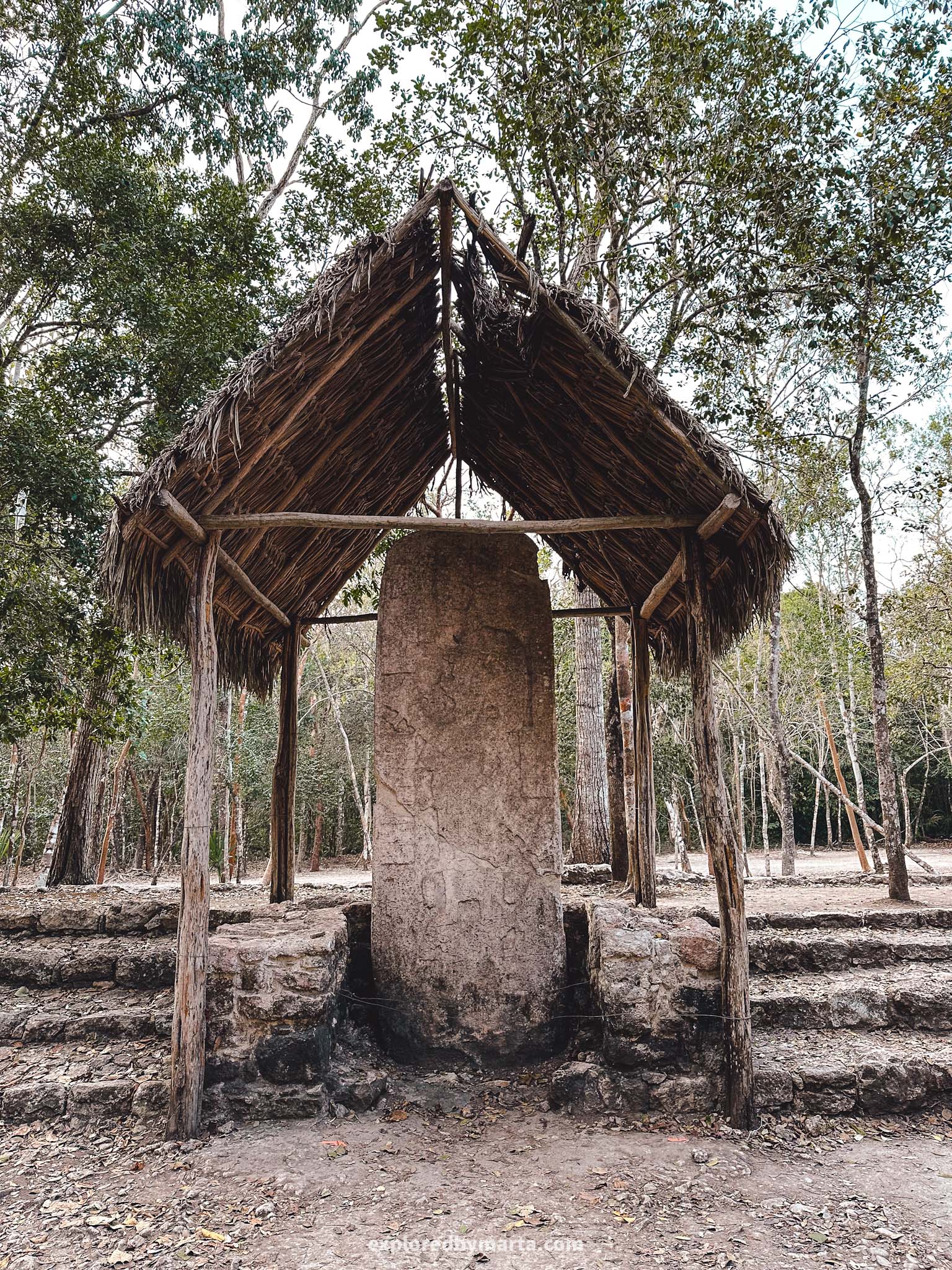
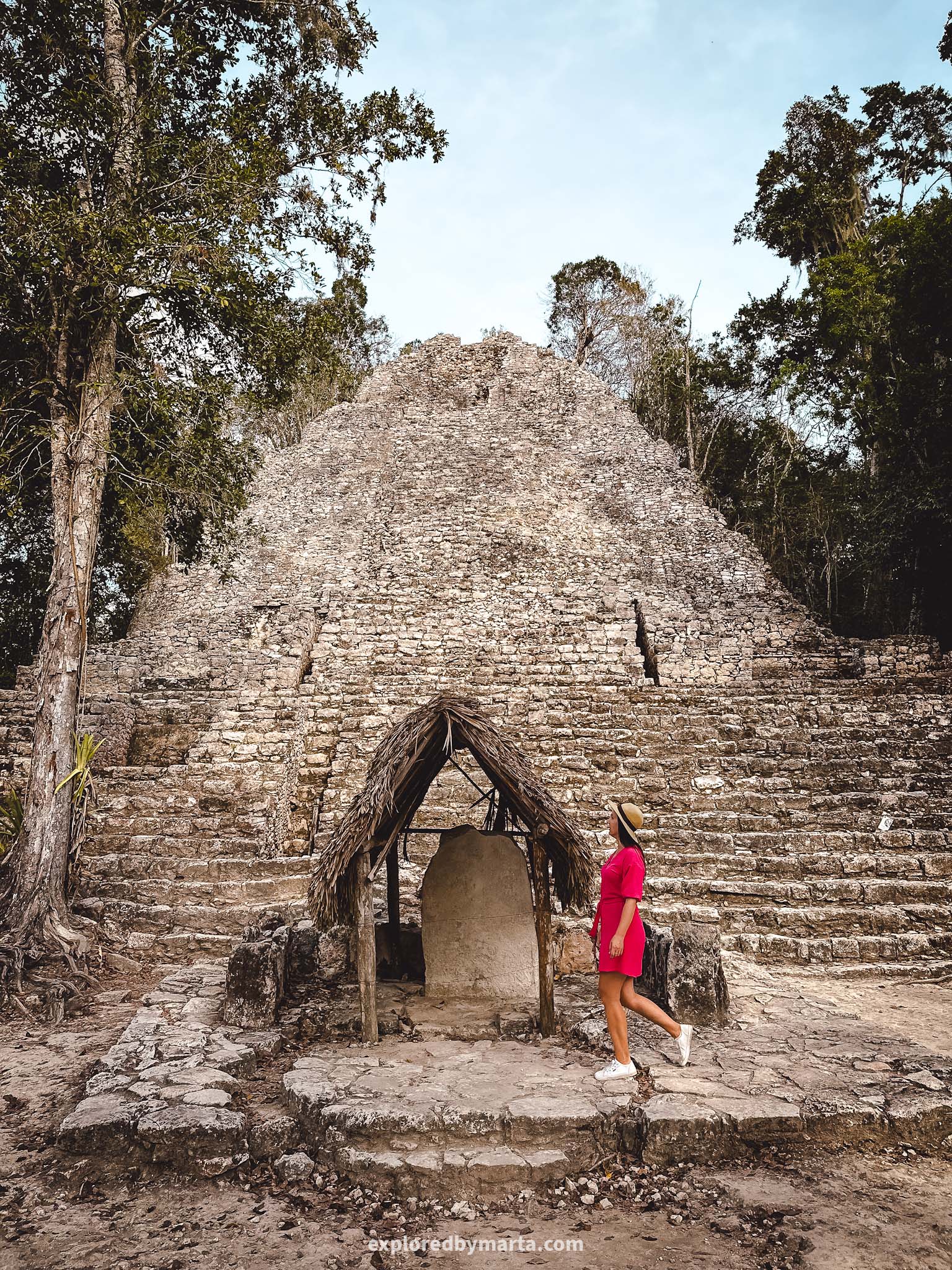
Most of the structures in Coba date back to the 7th-10th centuries. Coba once was a large center of the Mayan civilization reaching 50 thousand inhabitants but was already abandoned by the 16th century during the Spanish conquest.
If you visit Coba, then don’t spend all your time hiking to the furthest pyramid and admiring it because there is a group of structures including two massive pyramids right next to the entrance. We almost disregarded this spot! Woops! It left me speechless!
Location: Coba Archaeological Zone – Parking lot
14. Convento de Santo Domingo in Uayma

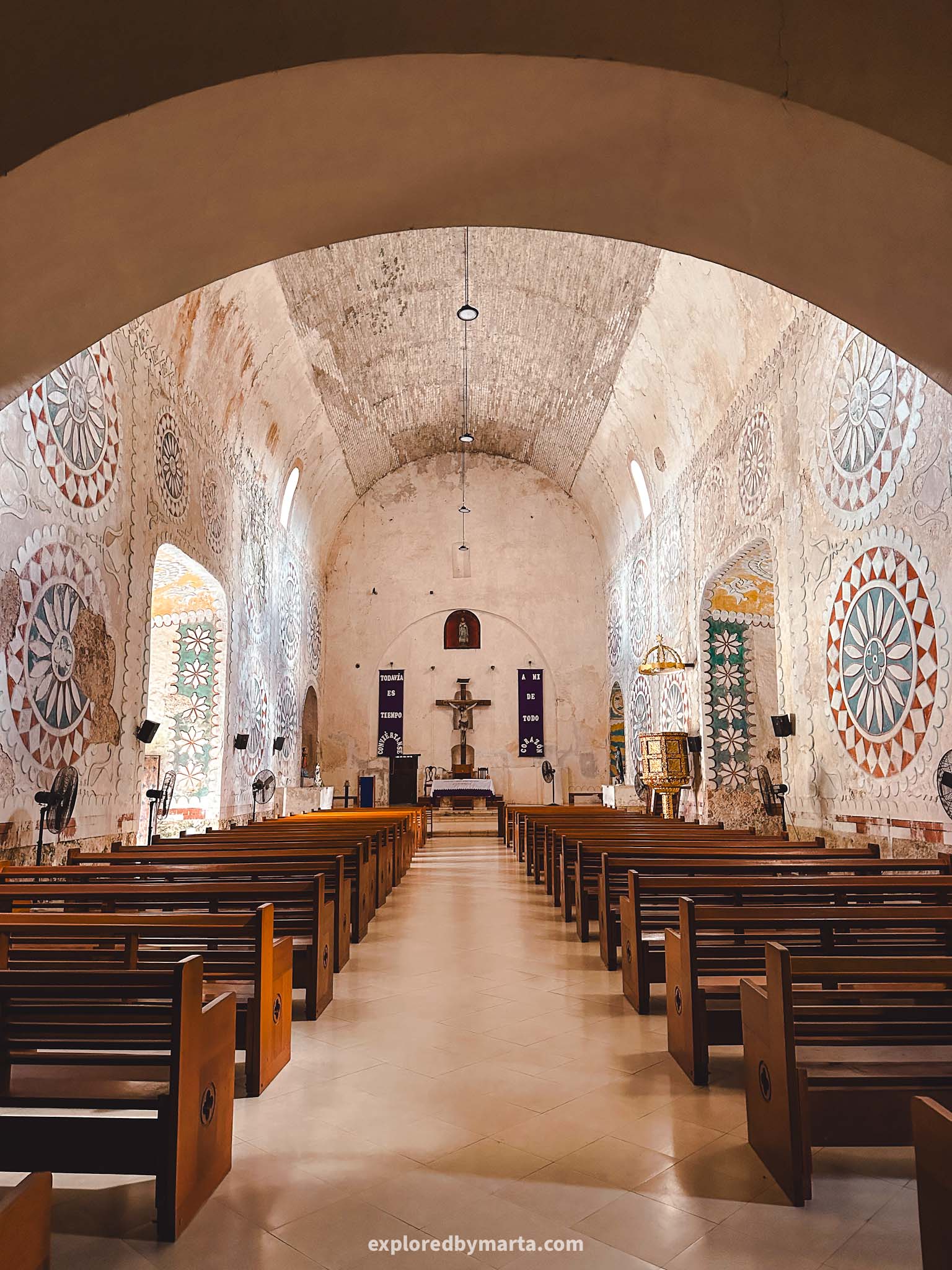
Want to see one of the most unique places in the Yucatán Peninsula? Then stop by the Convento de Santo Domingo in the town of Uayma just a 2-hour drive from Merida and just 20 minutes from Valladolid.
The beautiful Convento de Santo Domingo is a former convent built by the Franciscans in the middle of the 17th century. It was built by using stones from Mayan sites, including from the nearby Chichén Itzá.

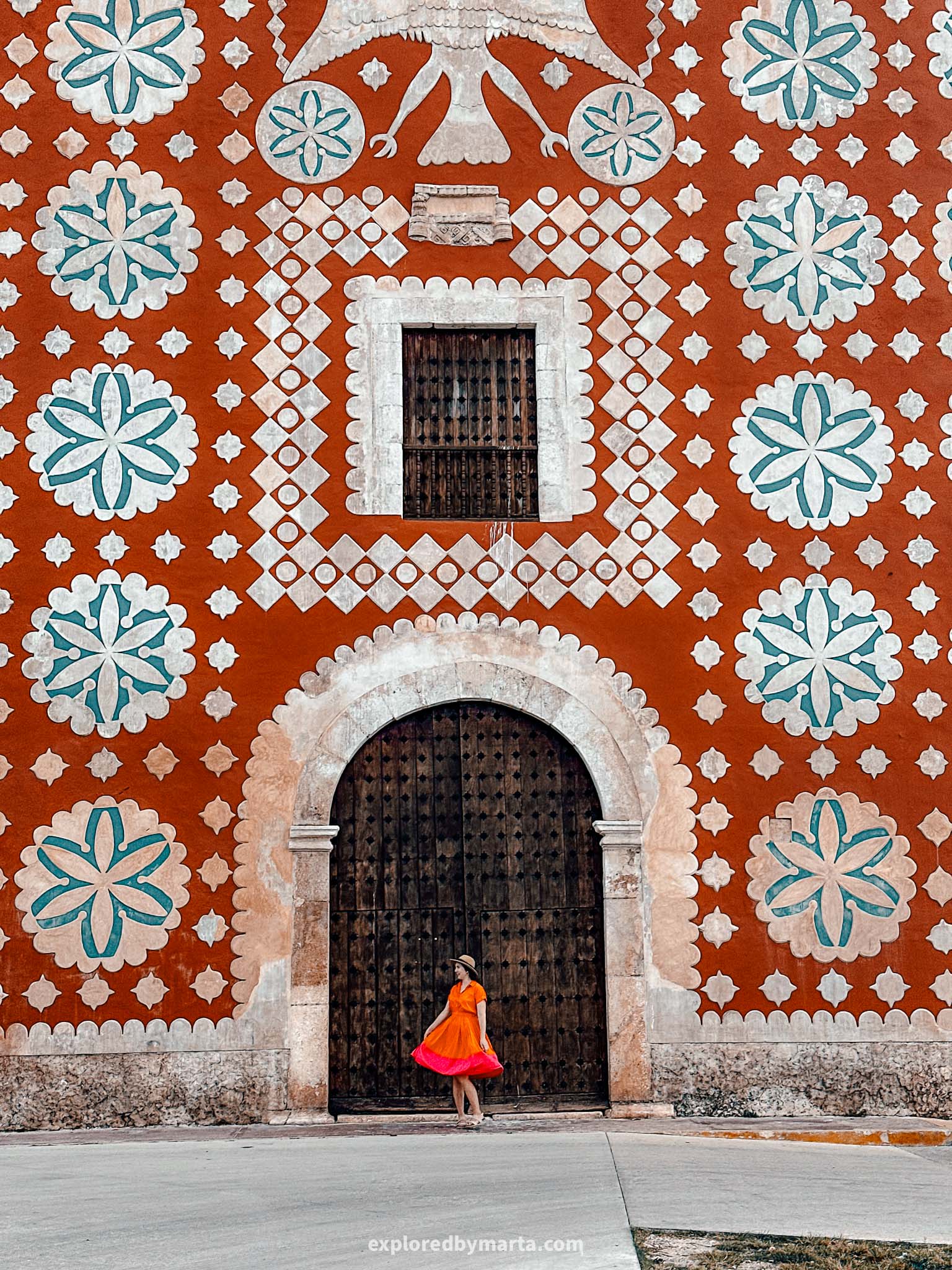
During the second half of the 19th century, the church was burned down during a Mayan rebellion. Only more than 100 years later the roofless church was finally restored and was officially reopened to the public in 2004.
The captivating building stands out with its unusual decorations – the white roses and stars symbolize the veneration of the Virgin Mary but the red color represents sacrifice and martyrdom. There is also a green color that symbolizes hope.

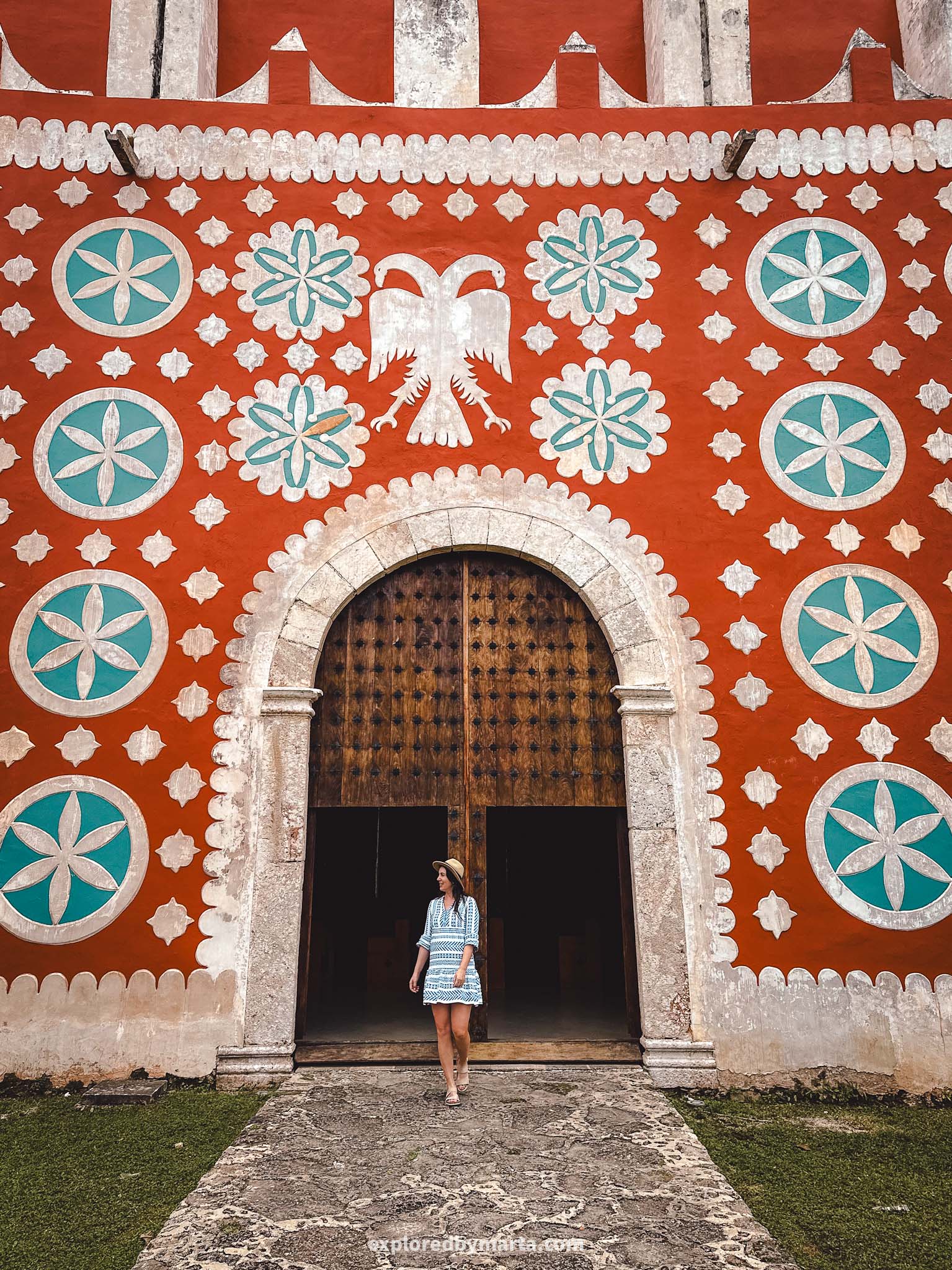
The front of the Uayma church also depicts a large headless eagle which is a symbol of the Franciscans who built the church. Over the last few years, this church has become a unique landmark in the Yucatán Peninsula thanks to its colors and symbols.
We visited this church on Saturday during a weekend trip around Valladolid. At 11 AM it was open and we could enter the inside of the church for donations. By the way, the entrance is from the sidestreet – Calle 21. The interior was beautiful but not as bright.
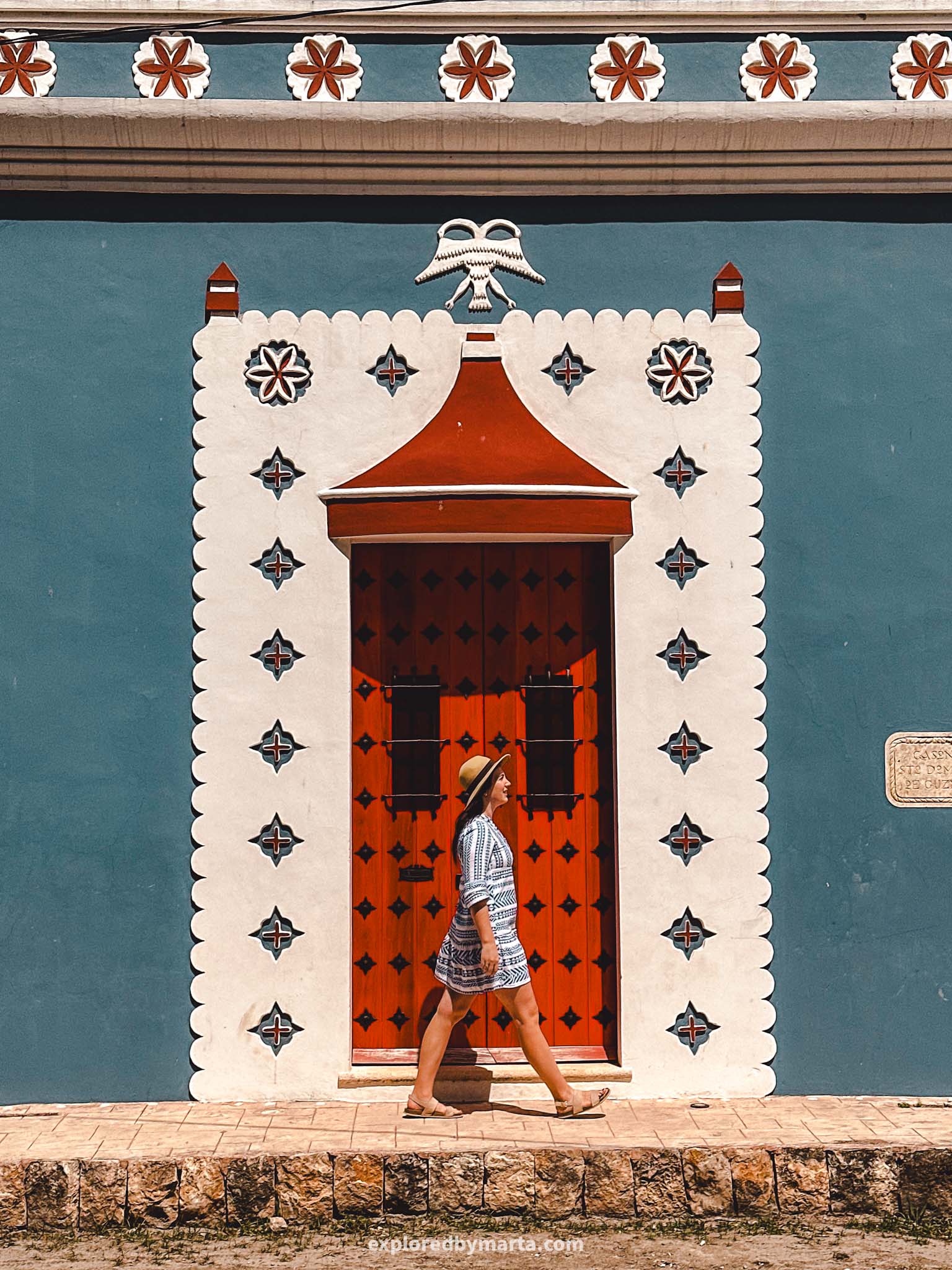

We also noticed another building on the corner of the Park of Uayma which was decorated with unique illustrations. Interestingly, we saw illustrations exactly like these in the old photos inside the convent. Could be another renovated historical building.
Overall there isn’t much to see in Uayma so I recommend adding this place as a stopping point on the way to other larger day trip destinations nearby like Valladolid, Chichén Itzá, or Ek Balam.
Location: Iglesia de Uayma
15. Dzibilchaltún Archaeological Zone
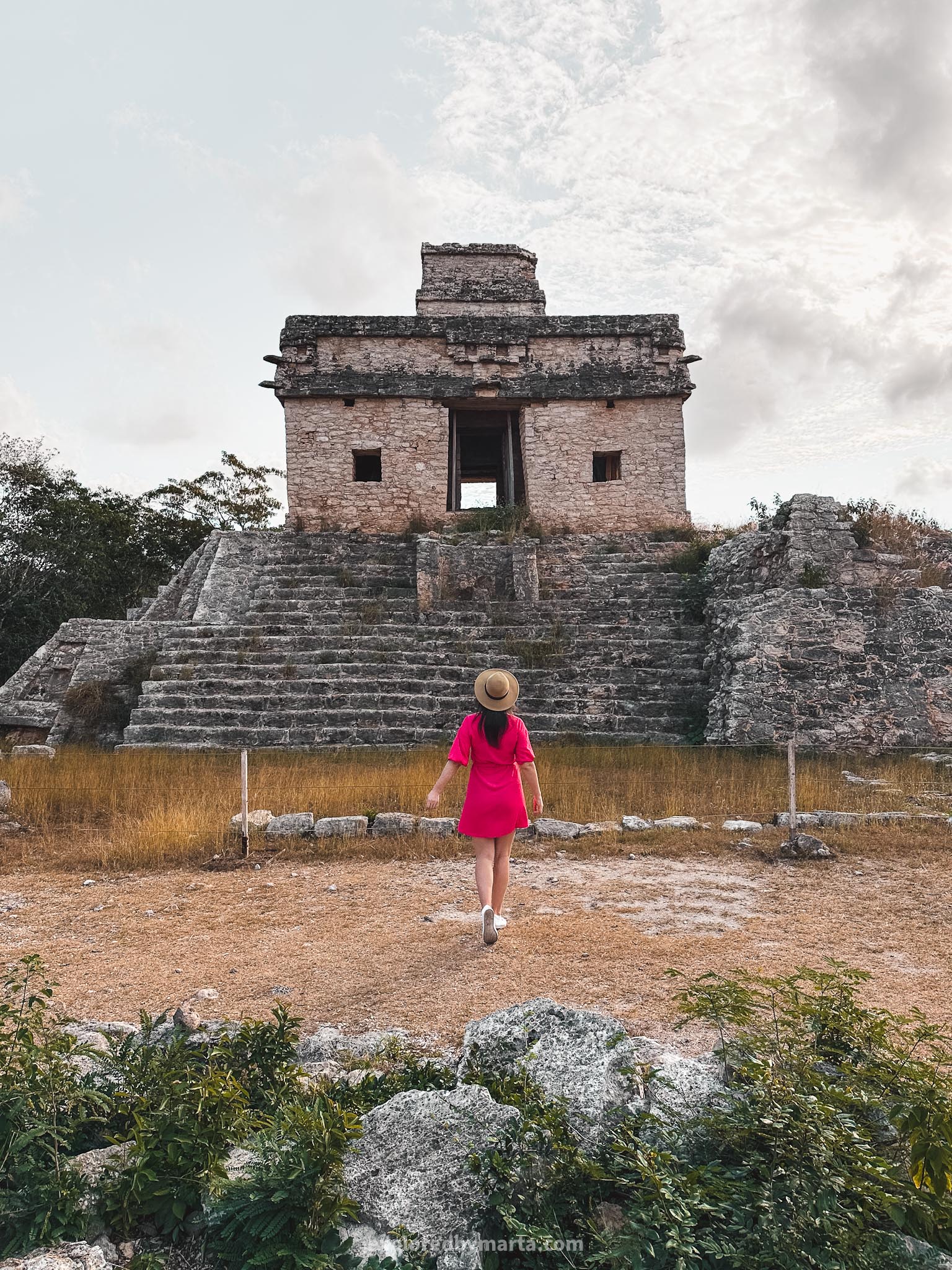
No, this will not be a whole day trip because Dzibilchaltun ruins are located a short 20 to 30-minute drive from Merida. But it is the perfect stop to make along the way when traveling to other nearby destinations like Progreso or Celestún.
Dzibilchaltún from the Mayan language signifies a place where there are writings on the stones. It is best known for the Temple of the Seven Dolls or the Temple of the Sun (pictured above) and its alignment with the Sun during a solar equinox.

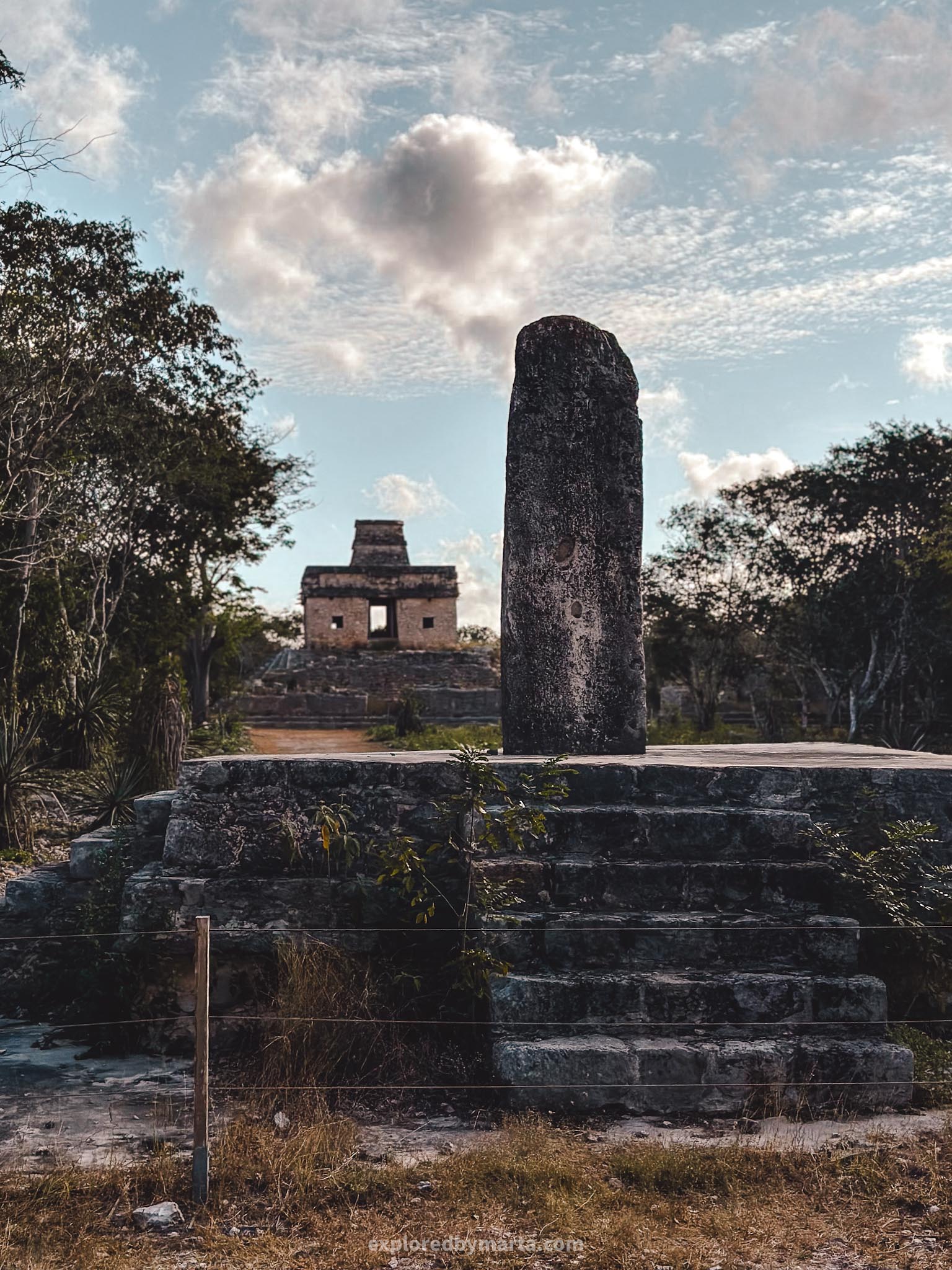
Apart from the famous temple, the site also features a pyramid, and a couple of other structures as well as a cenote and a museum that were closed to visitors when we visited. It also features a 16th-century Franciscan chapel in the middle of the site.
The most interesting part of the Temple of the Sun is that it is built in alignment with the equinox happening on March 21 and September 21. At dawn, the Sun appears right in the middle of the temple door proving Mayan knowledge of astronomy.
Although many of the structures that you can see today in the Dzibilchaltún archaeological zone date back to the 9th-11th centuries, there are artifacts found around and inside the cenote dating back as far as around 600 BC.
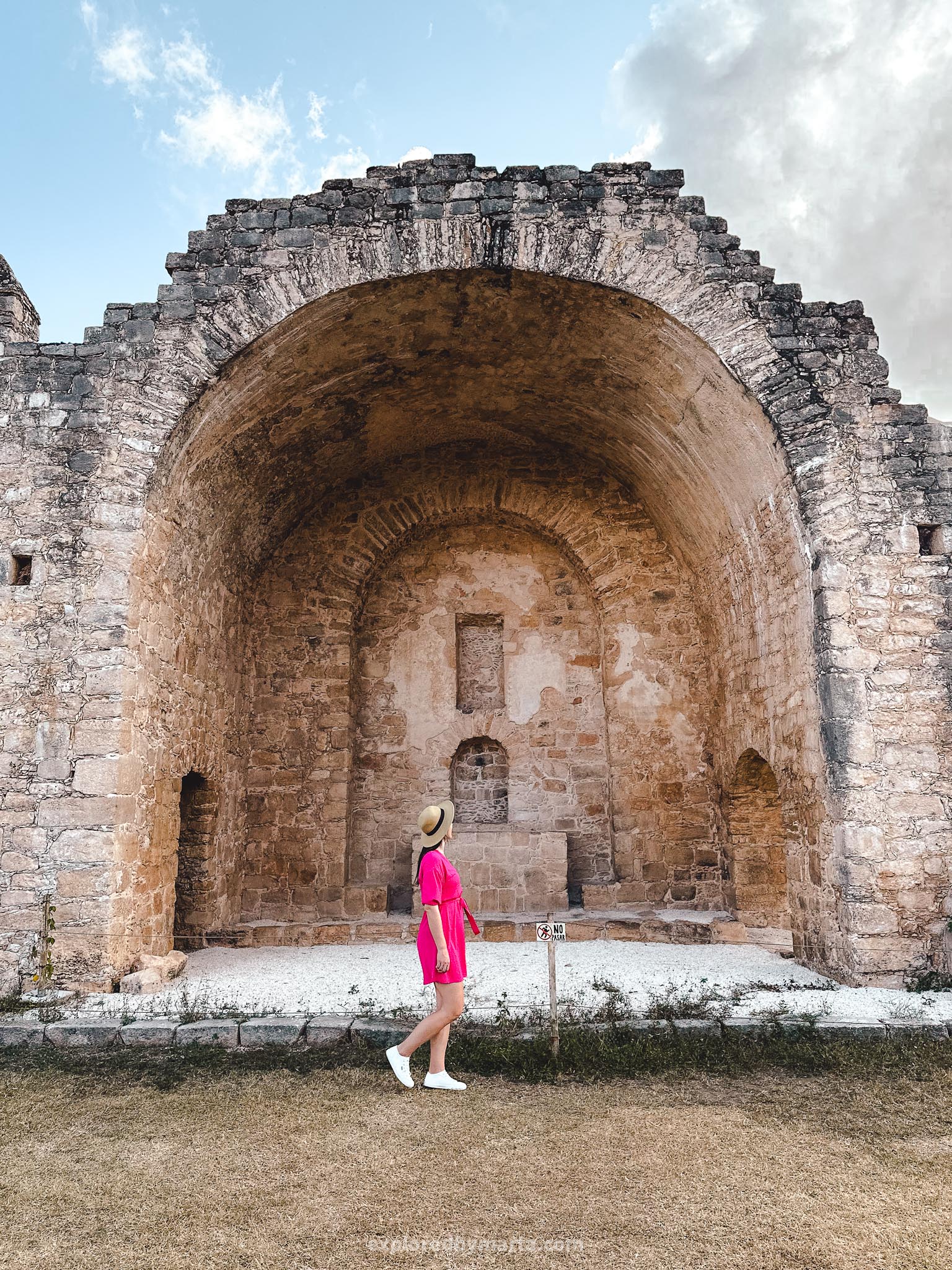
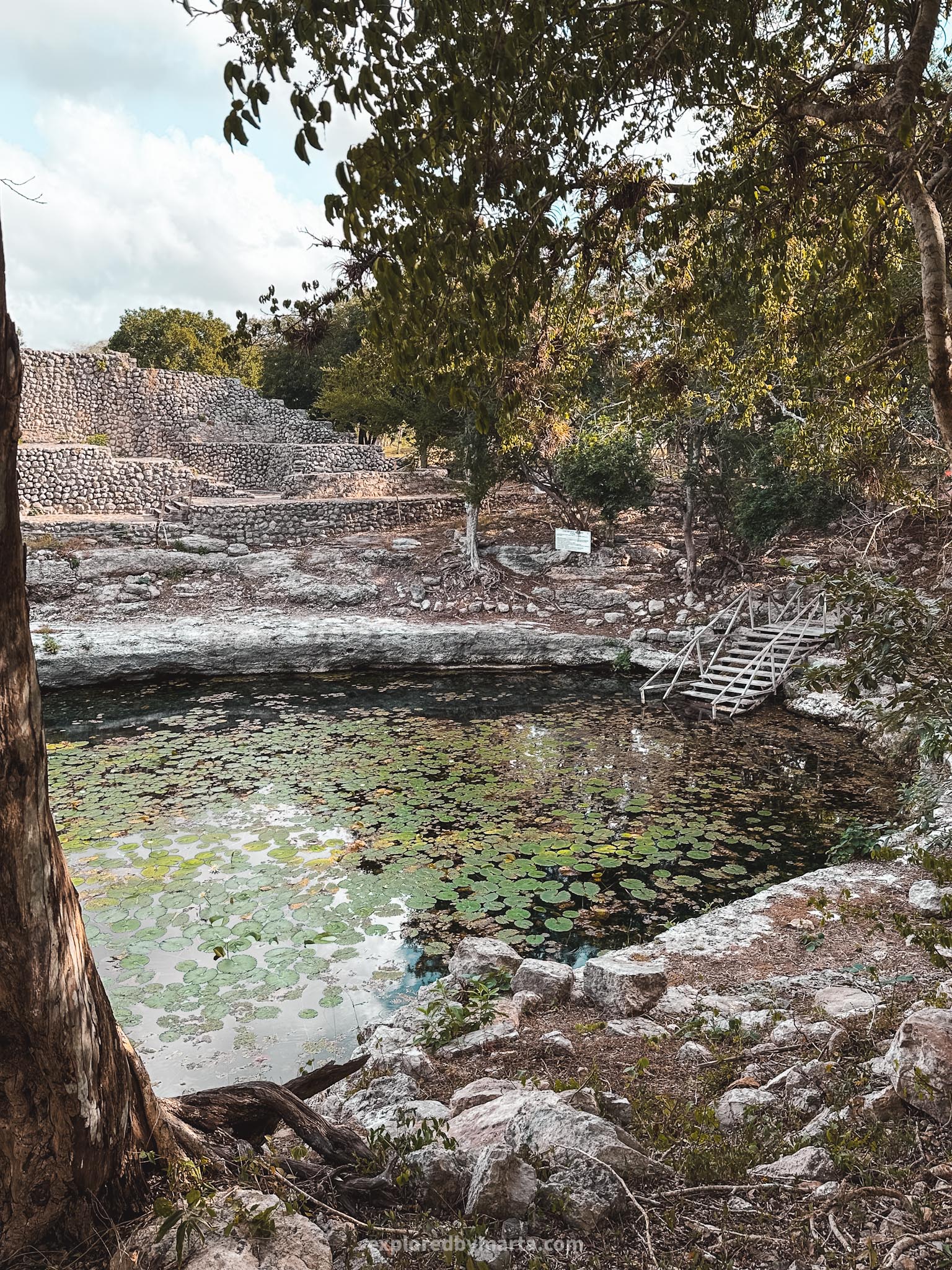
You cannot access the Temple of the Sun but you can climb other structures in Dzibilchaltún. There is a smaller pyramid as well as other Mayan structures to climb and observe from above what was once an ancient city with 25 thousand inhabitants.
Overall I wasn’t too impressed by this site and by entry fees. We paid more than 100 pesos for parking and then more than 300 pesos per person for entry which seems too expensive for a smaller site. It is up to you!
Location: Archaeological Zone of Dzibilchaltún
Read more about Merida and Mexico!
- Merida bucket list: 21 best things to do in Merida, Mexico
- 17 most iconic Instagram spots in Merida, Mexico
- 11 most beautiful Mayan ruins near Merida, Mexico
- Ring of Cenotes: 15 beautiful cenotes near Merida, Mexico
Happy exploring!
We stayed in Merida for three weeks so that we could explore the beautiful city as well as all the bucket list destinations around Merida. Climbing Mayan pyramids, exploring underground cenotes, or boat-tripping to see pink flamingos – we loved it all!
Besides our stay in the colorful and vibrant Merida, we also spent a couple of months traveling around the Yucatán Peninsula, including the states of Yucatán and Quintana Roo, and exploring everything this beautiful peninsula had to offer.
From white-sand beaches to dark underground cenotes, and ancient pyramids – there’s just so much to see! I hope you enjoy your time there as much as we did and I hope you get some travel inspiration from this blog post for your travels! Happy exploring!
PIN FOR LATER!


